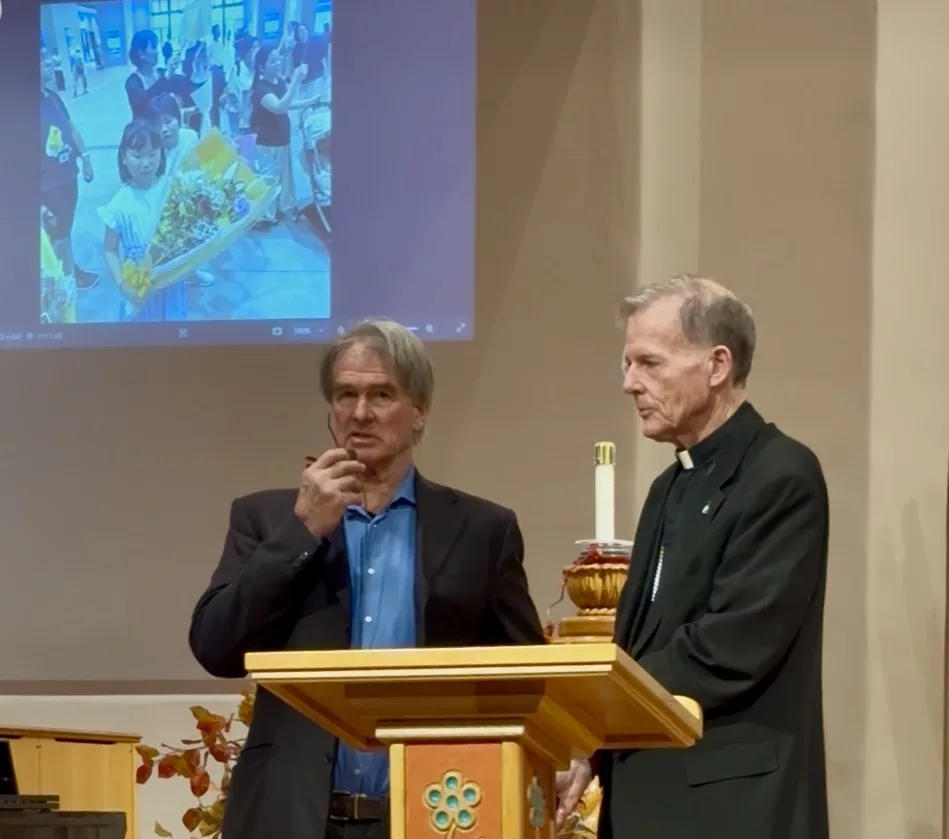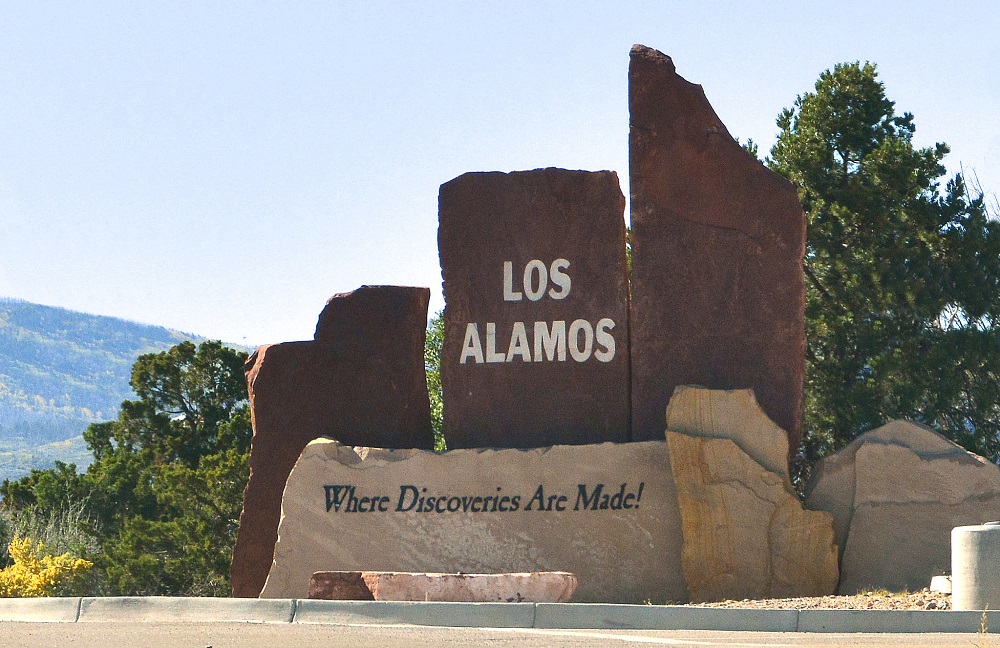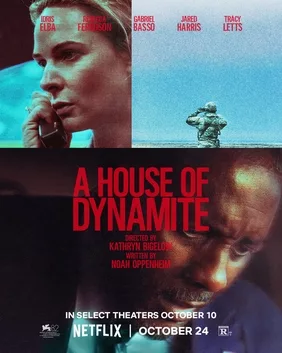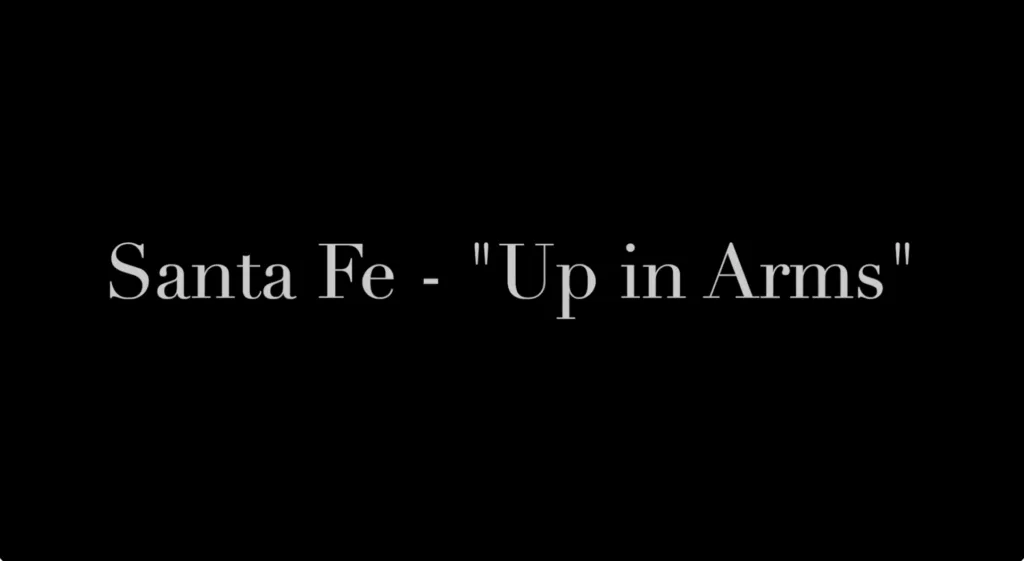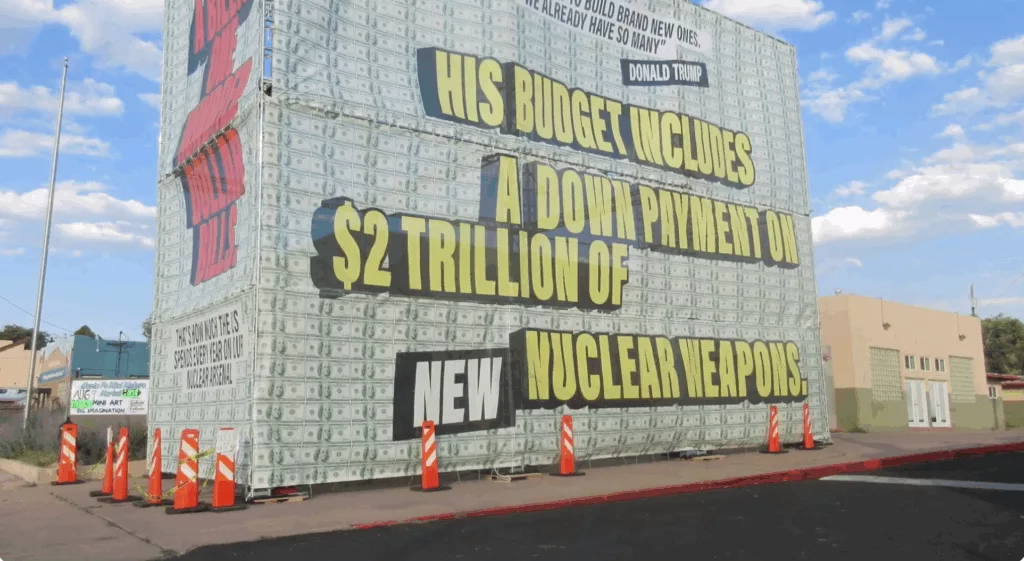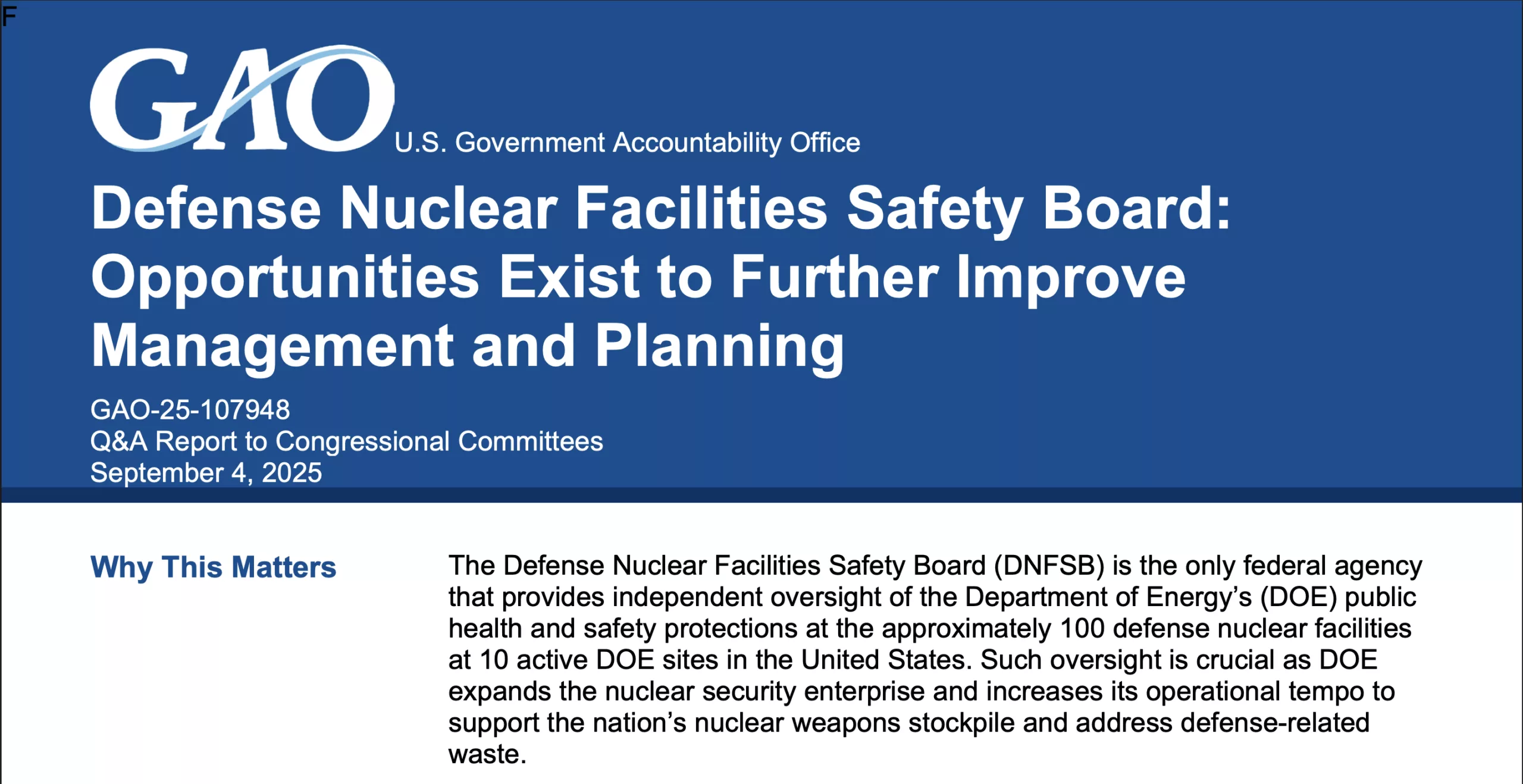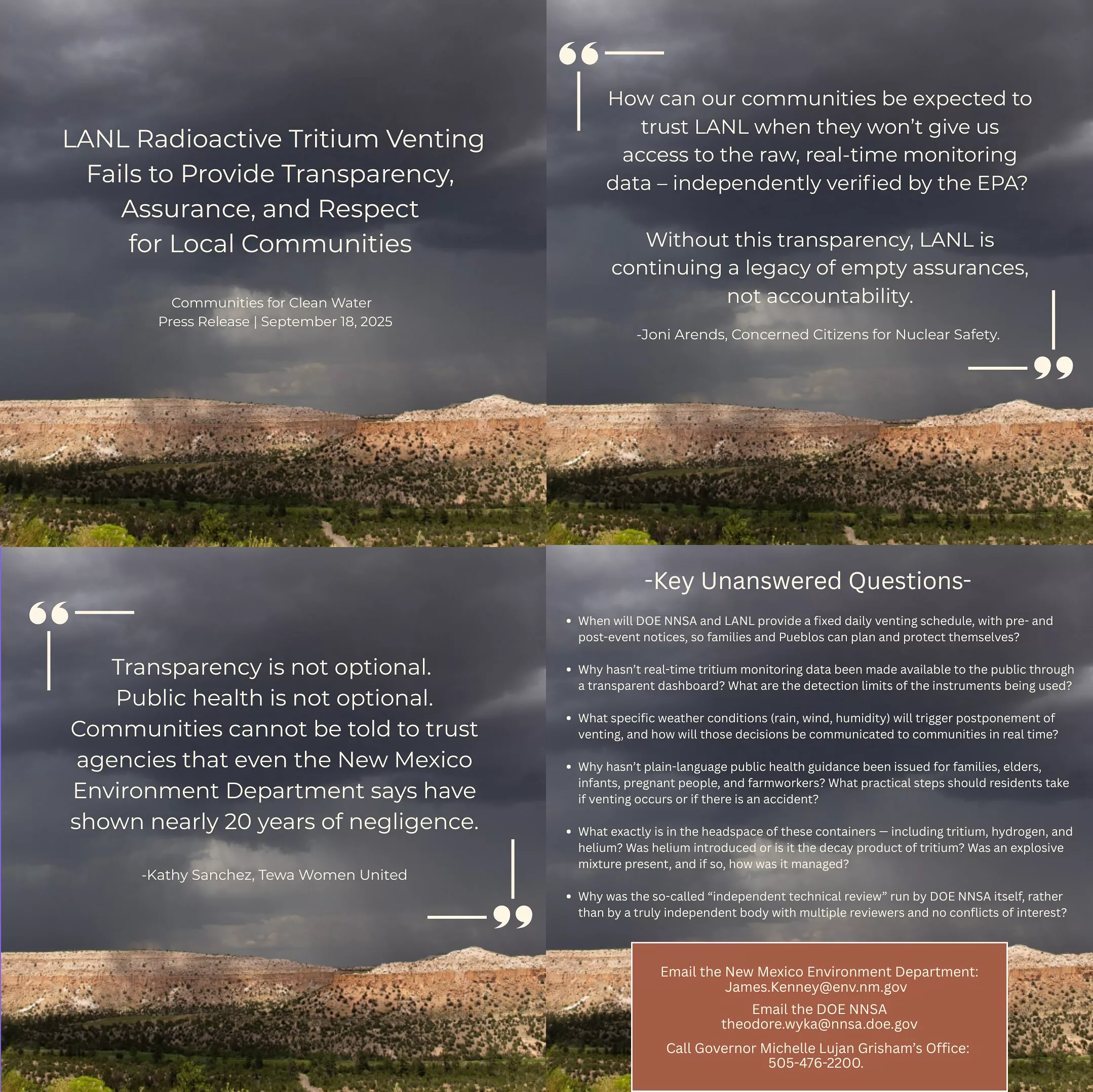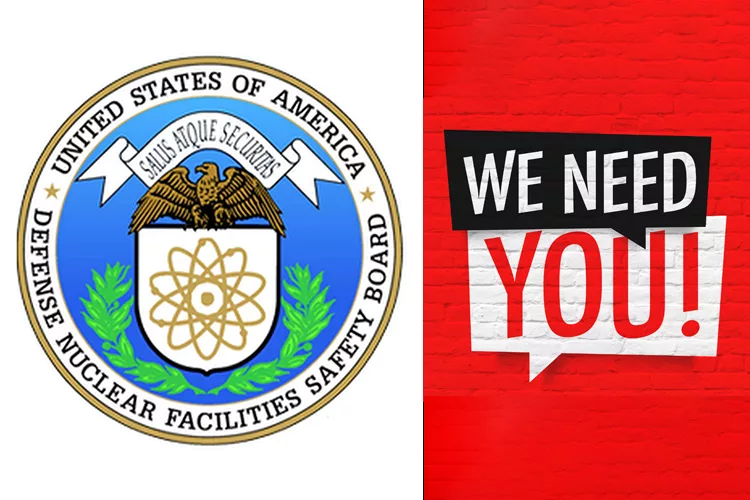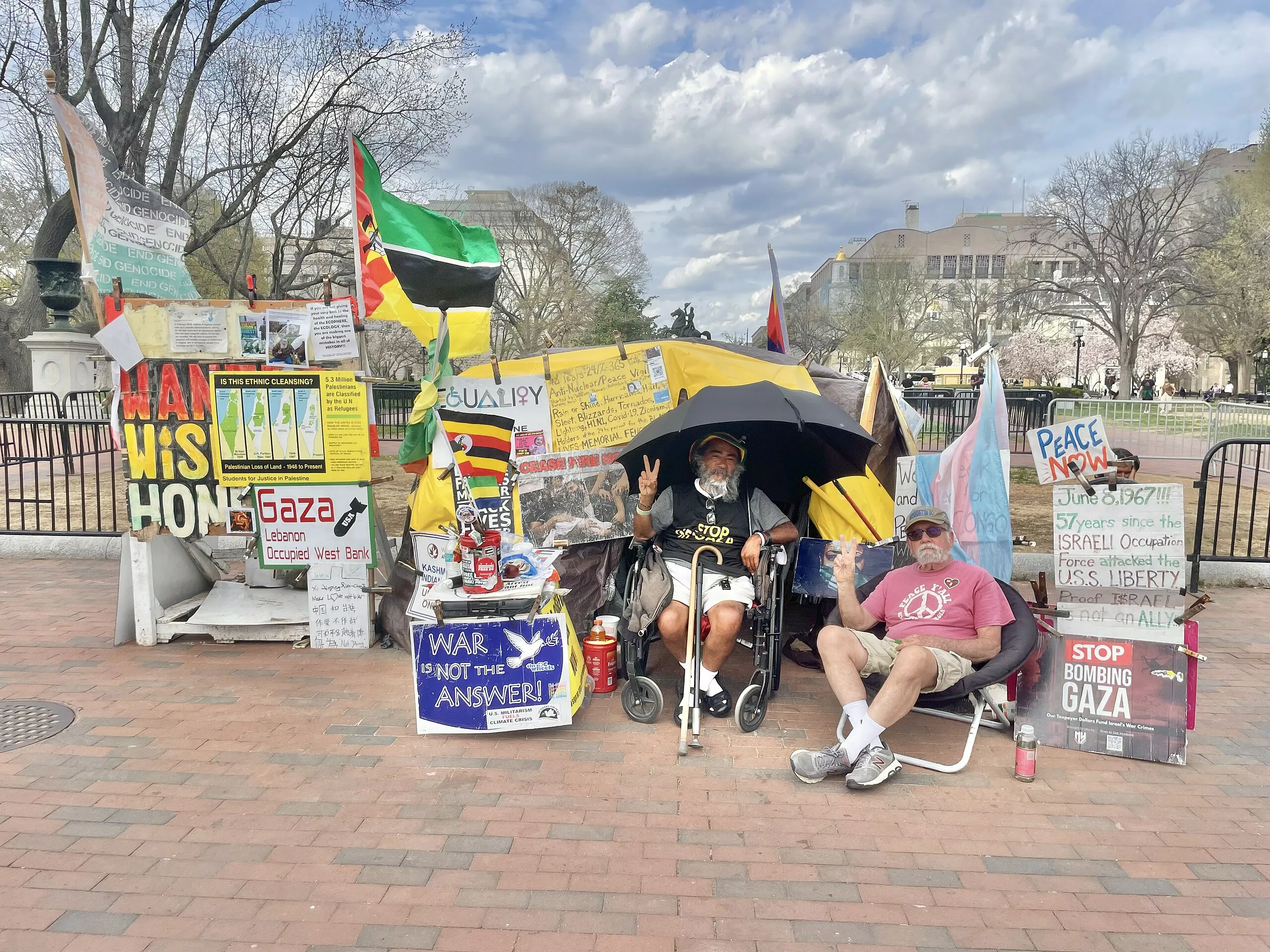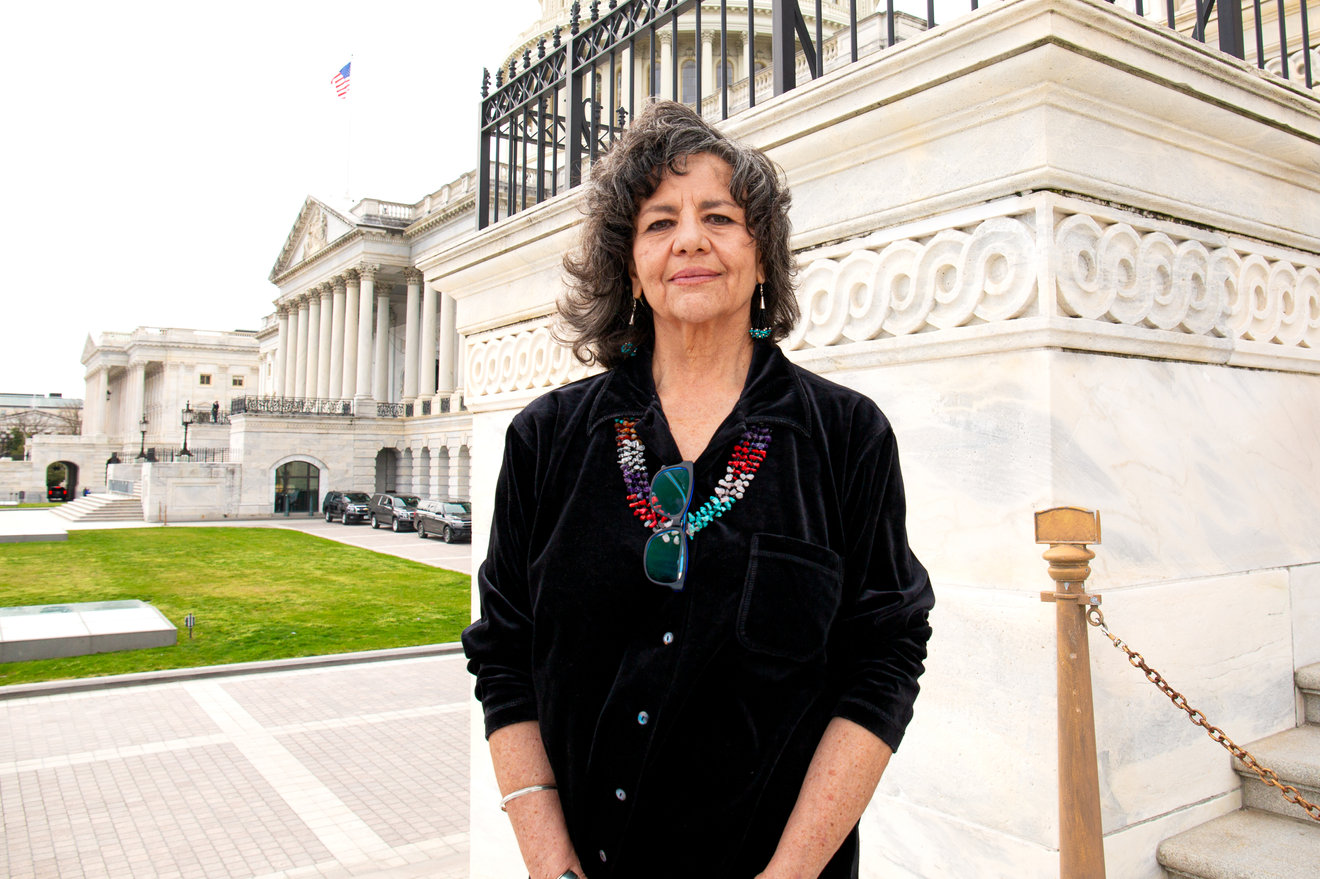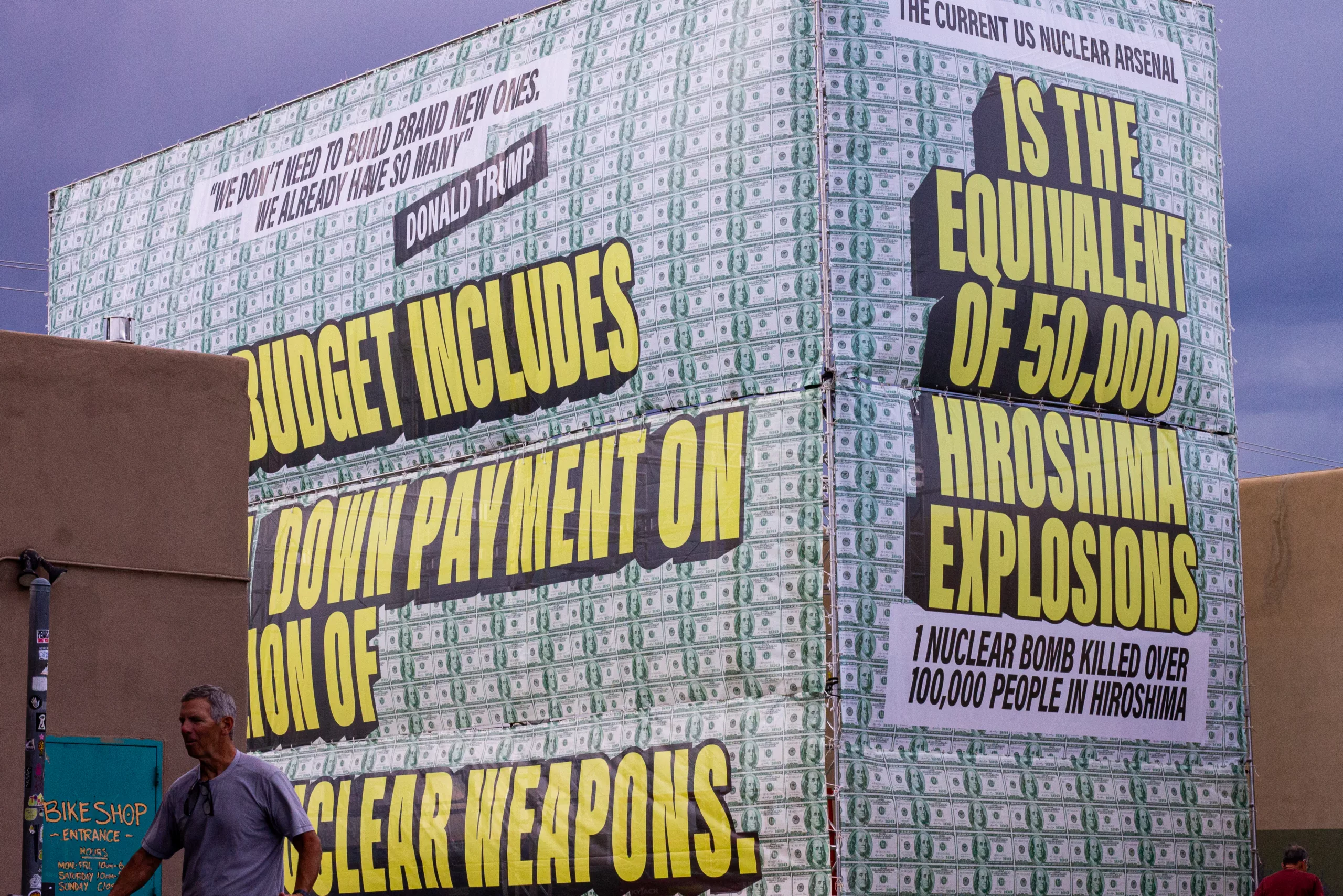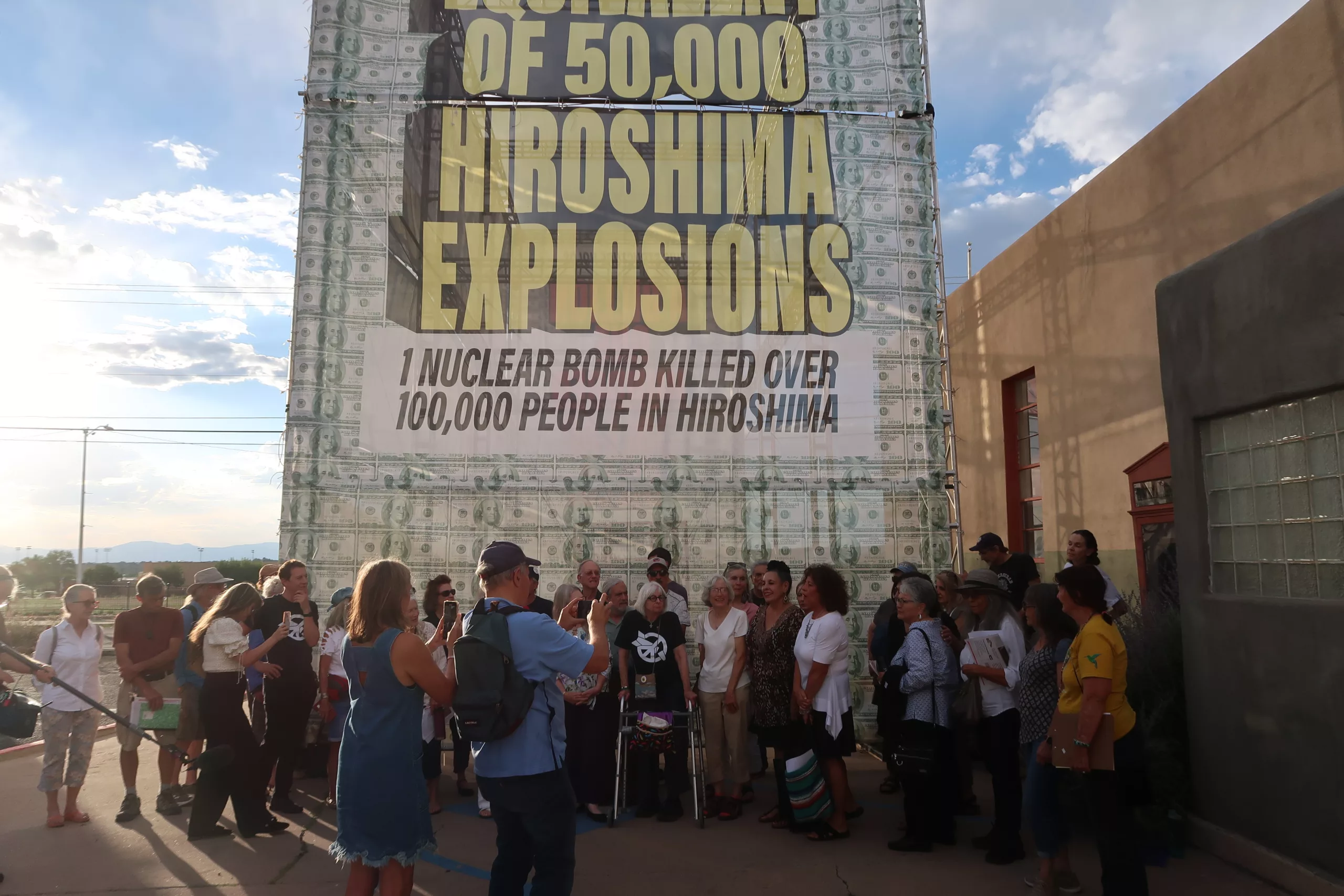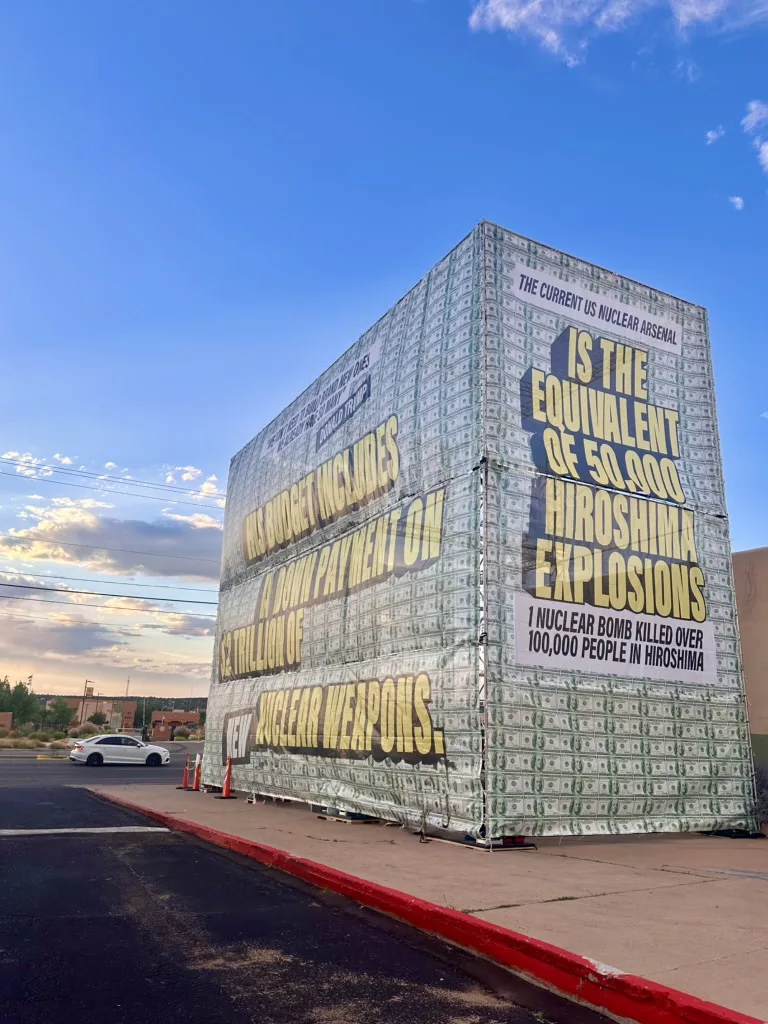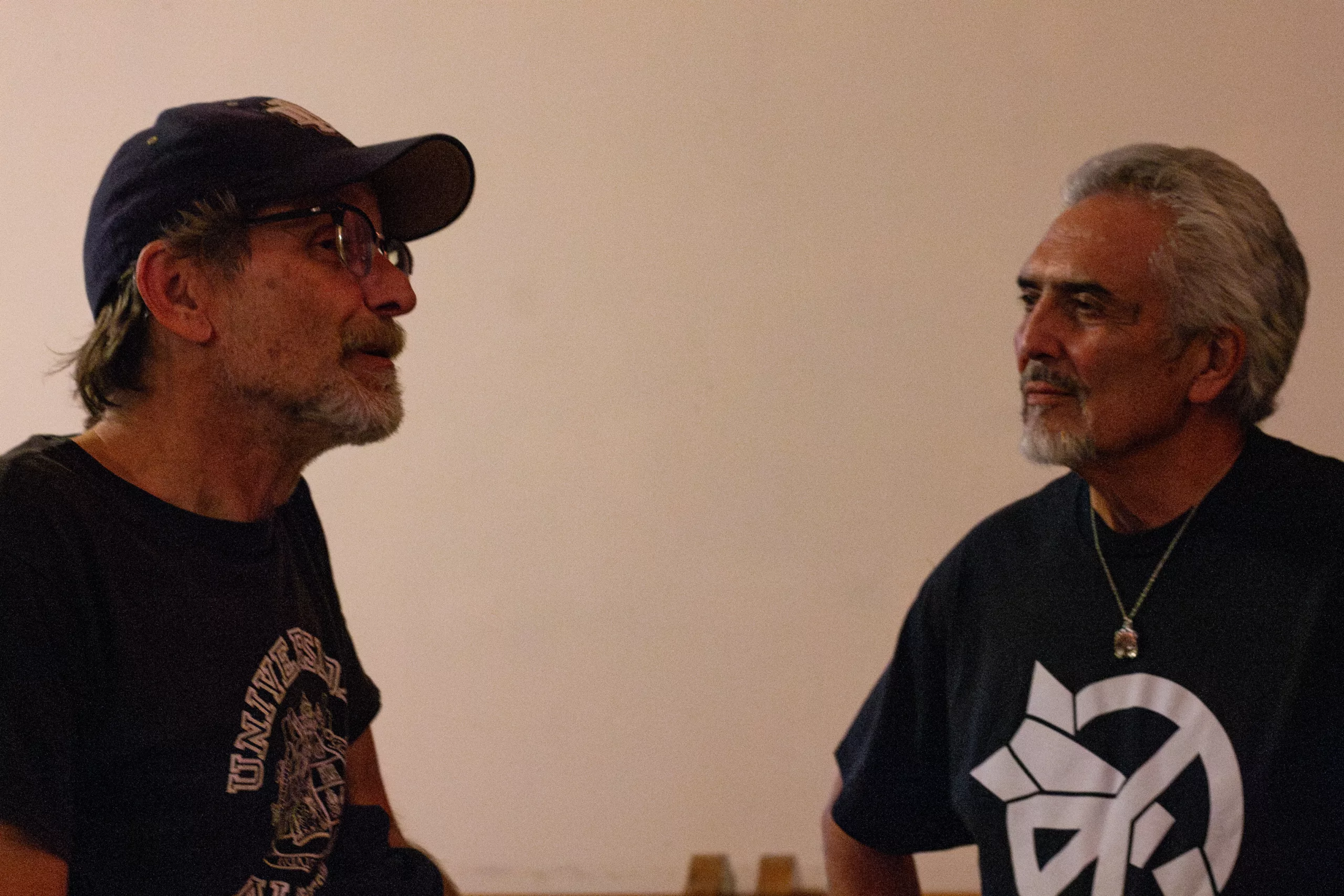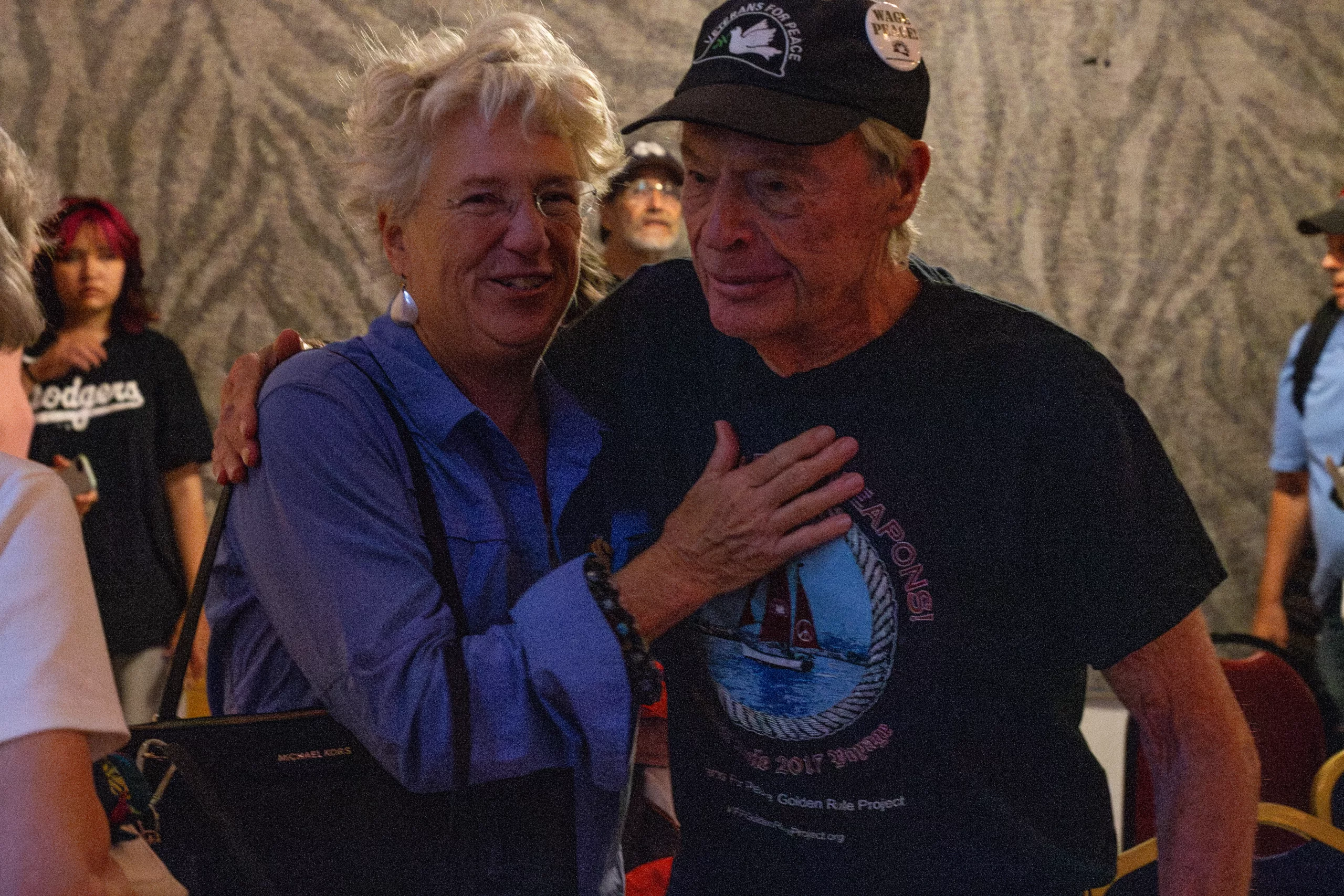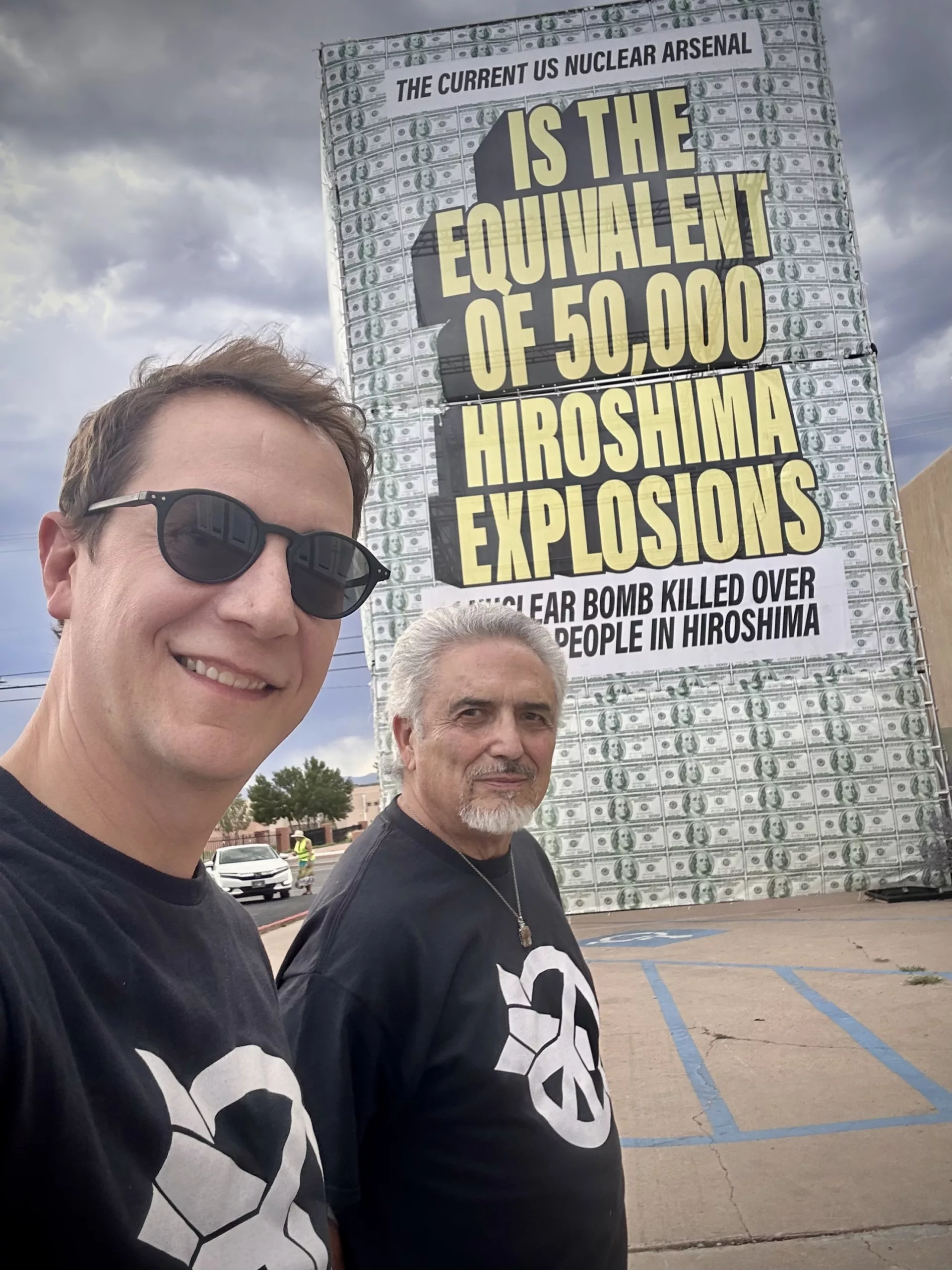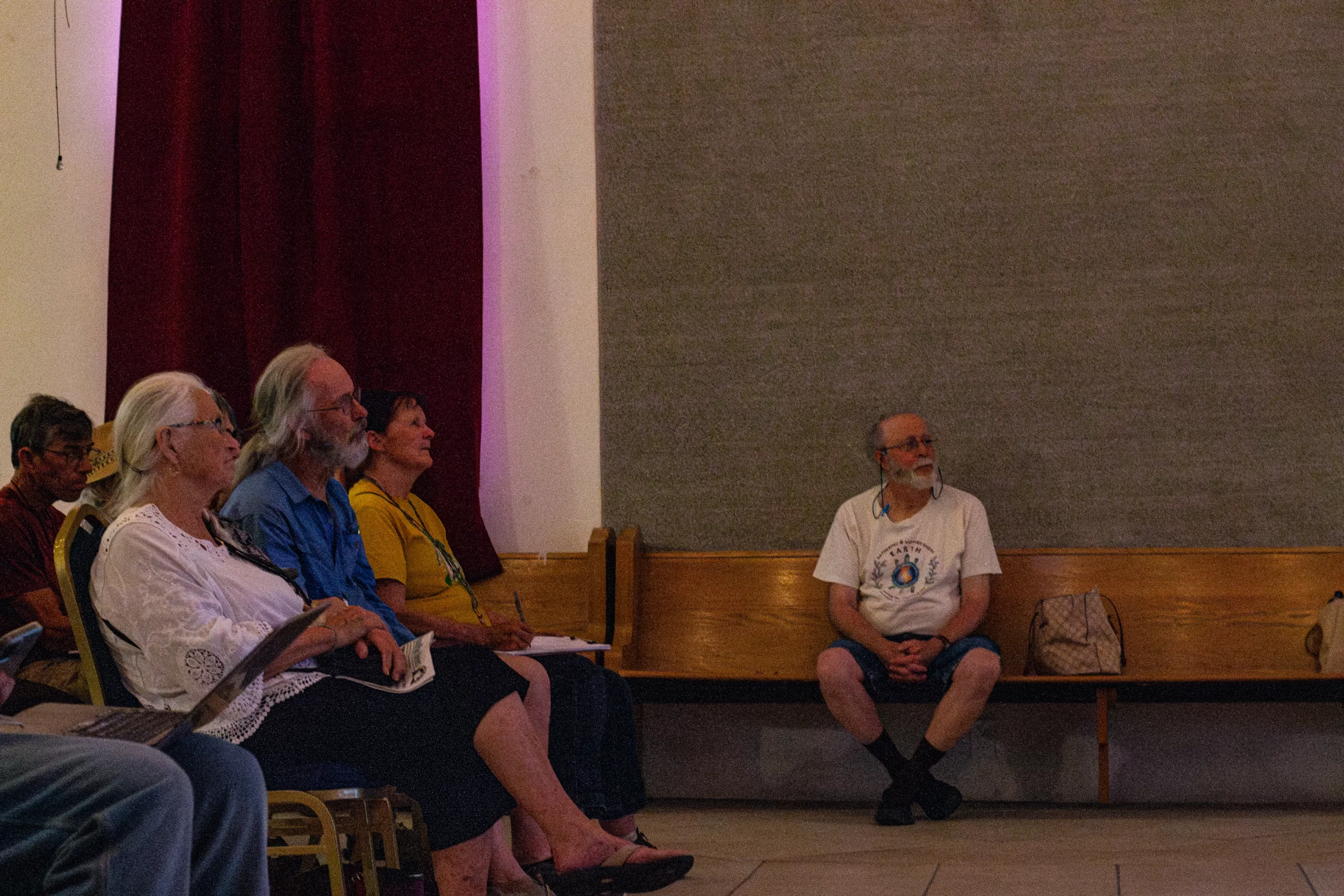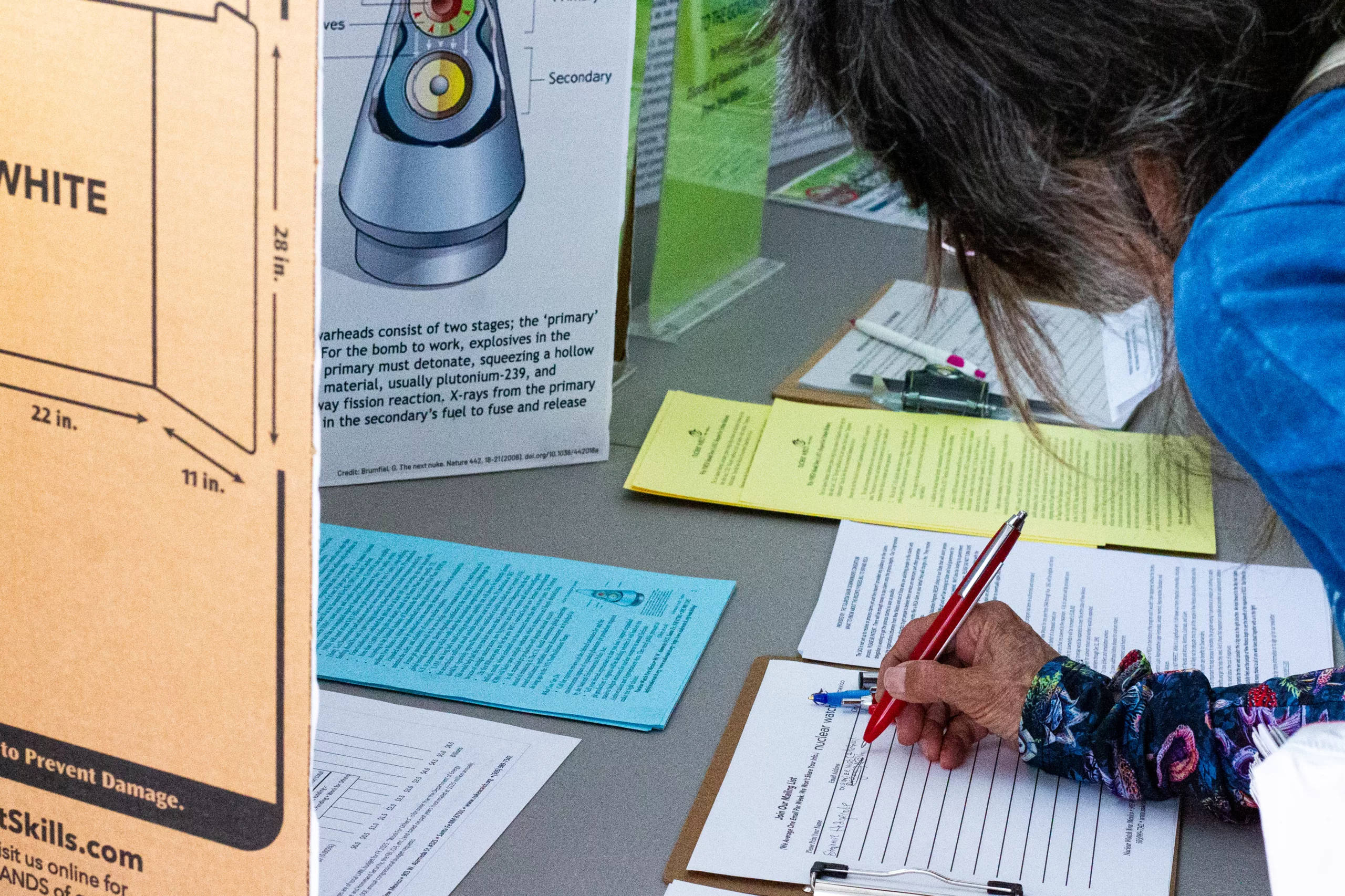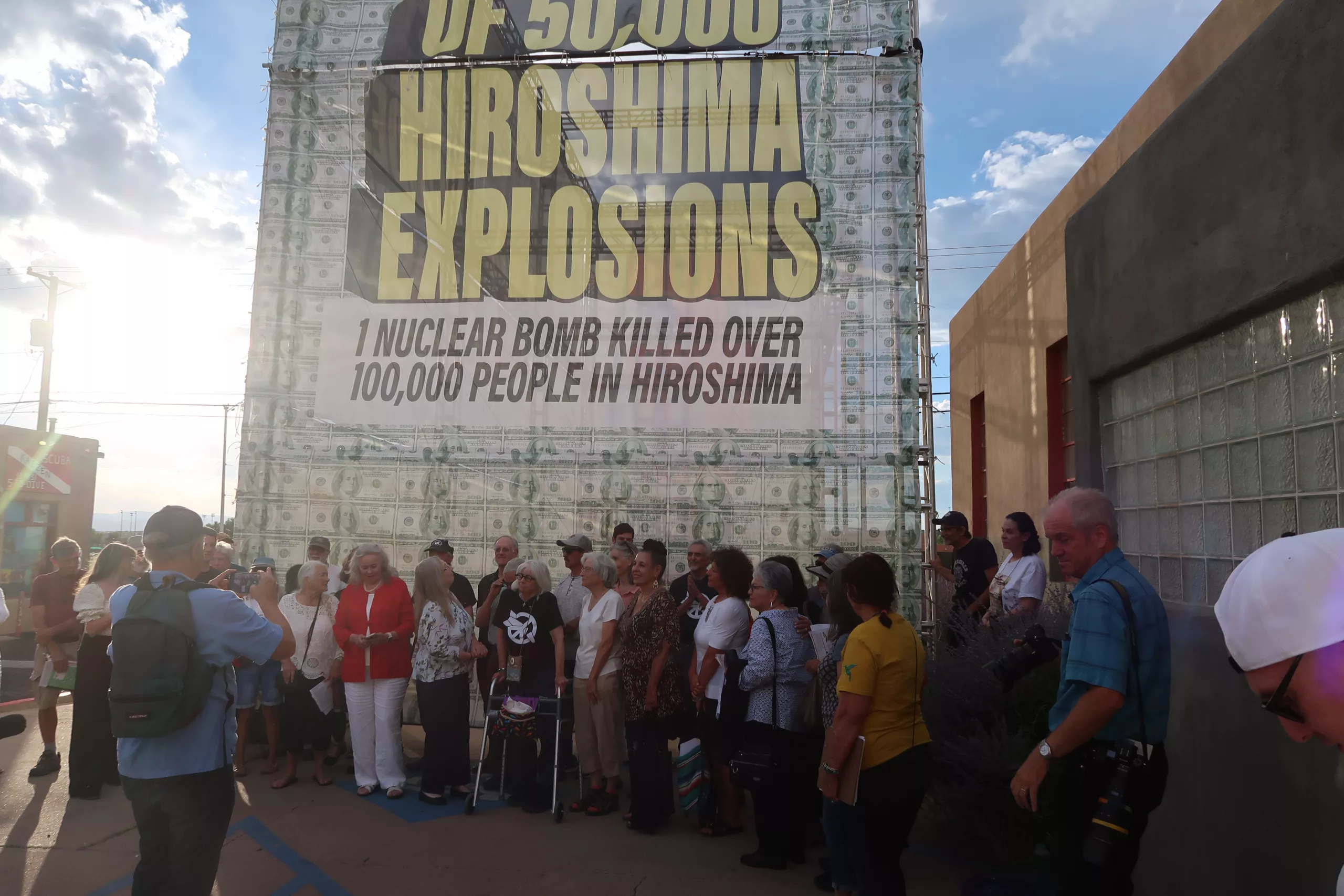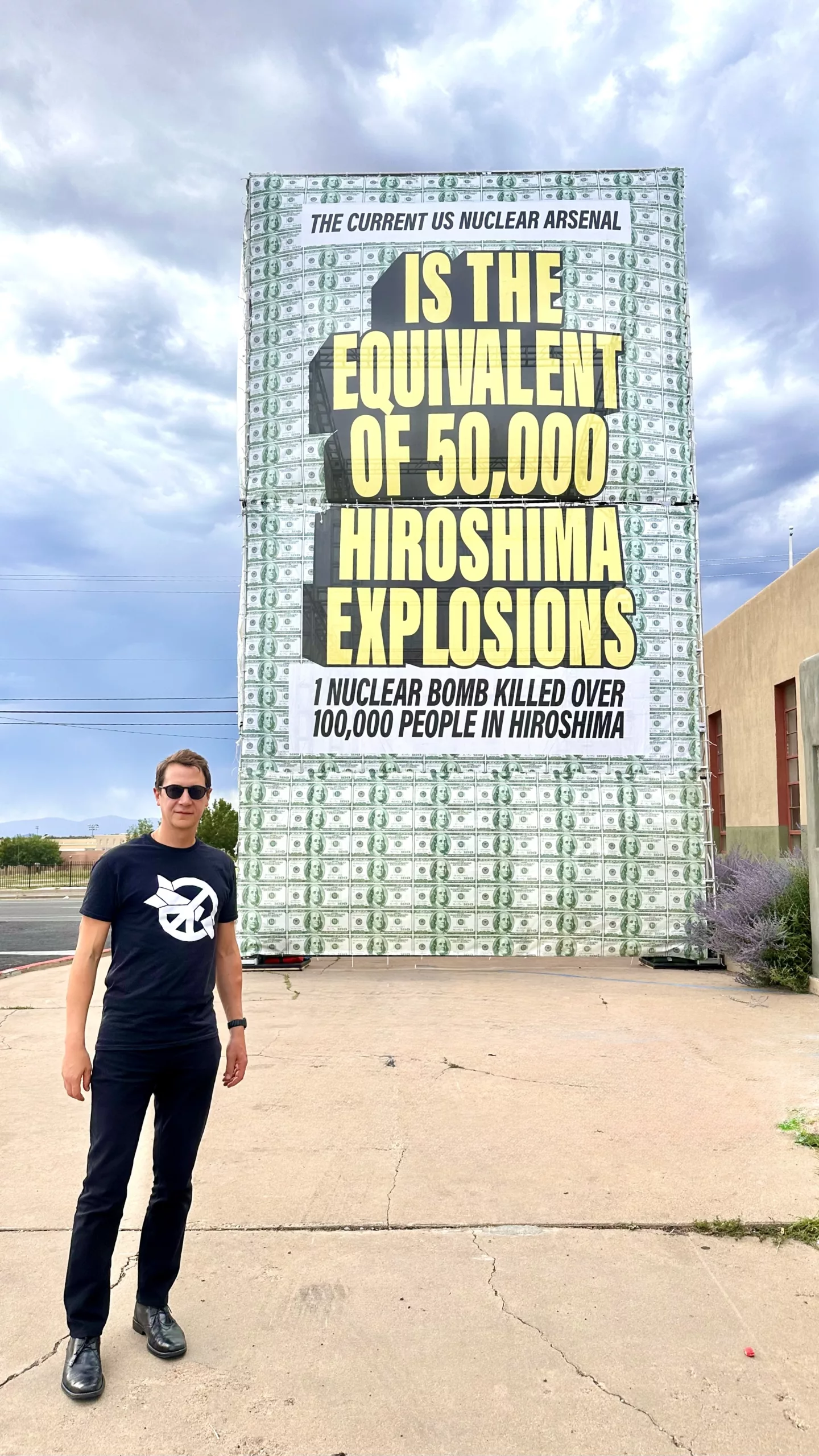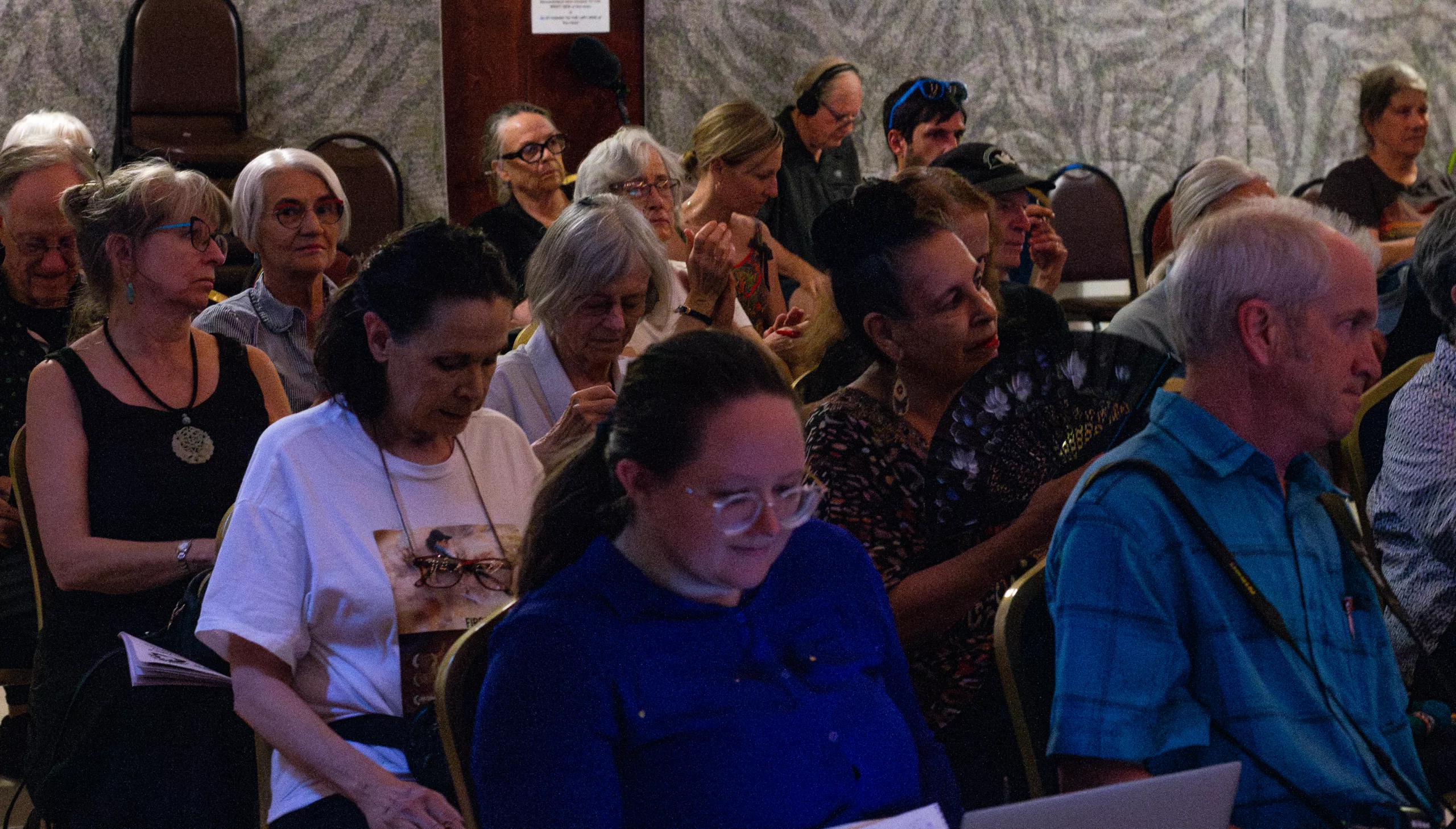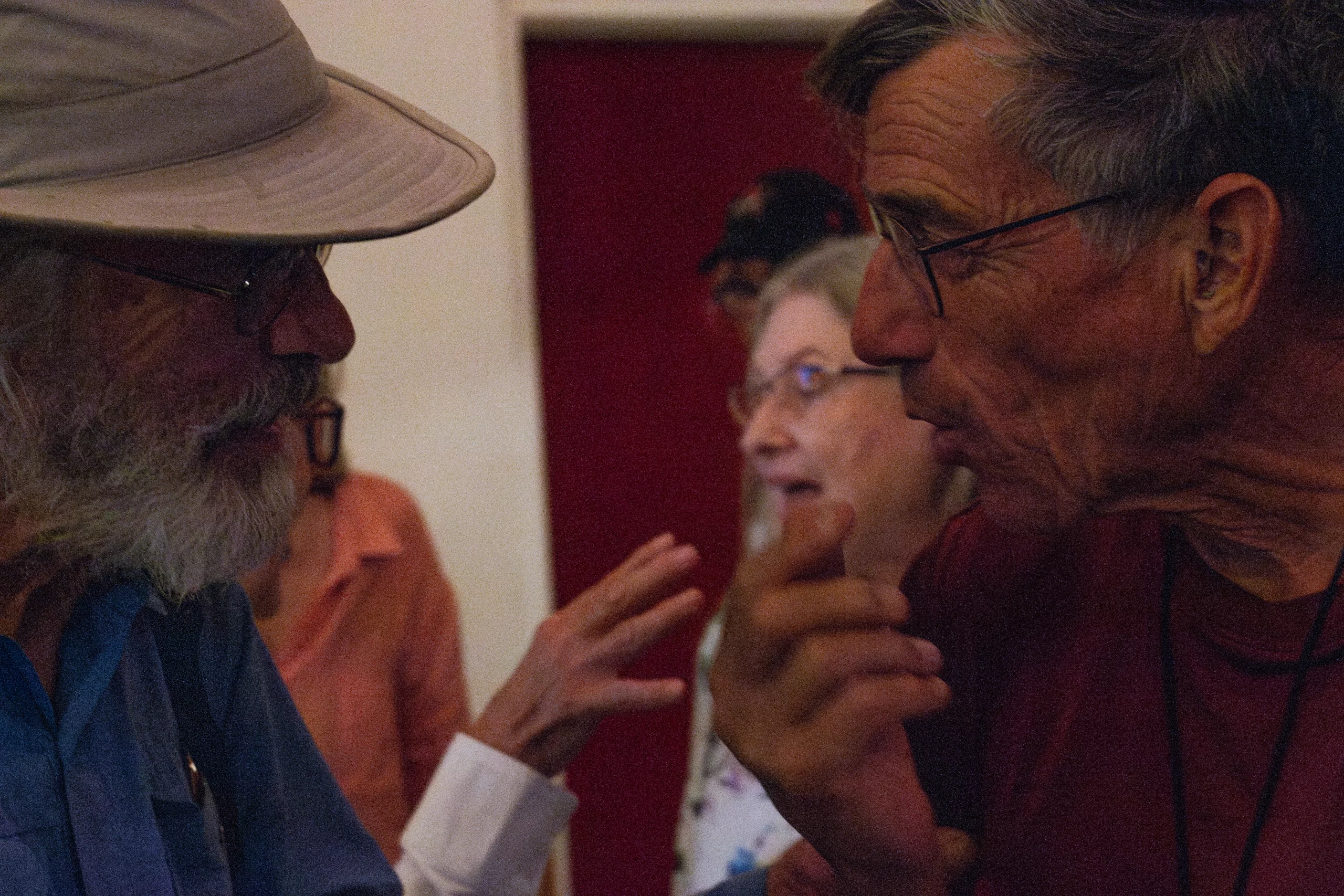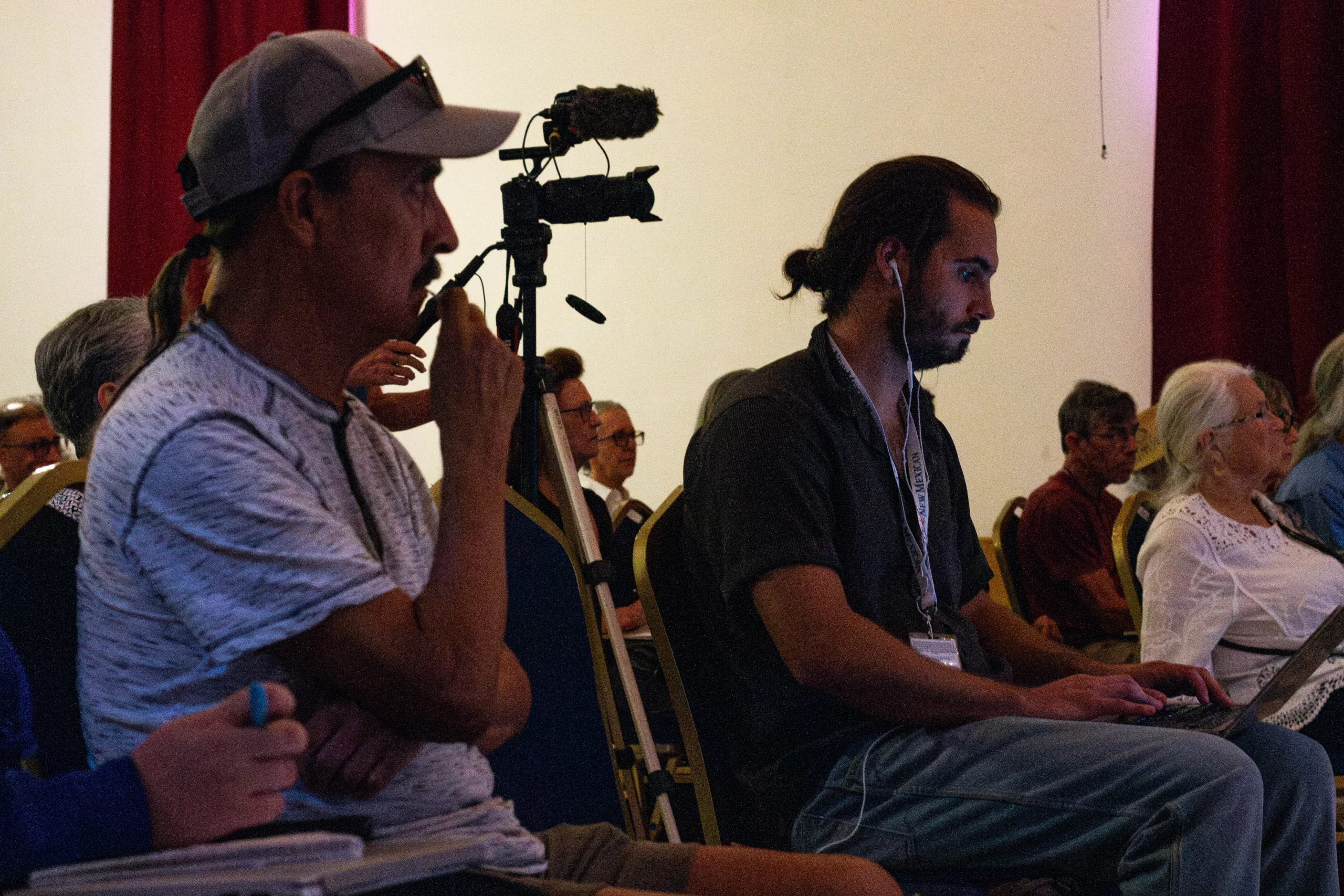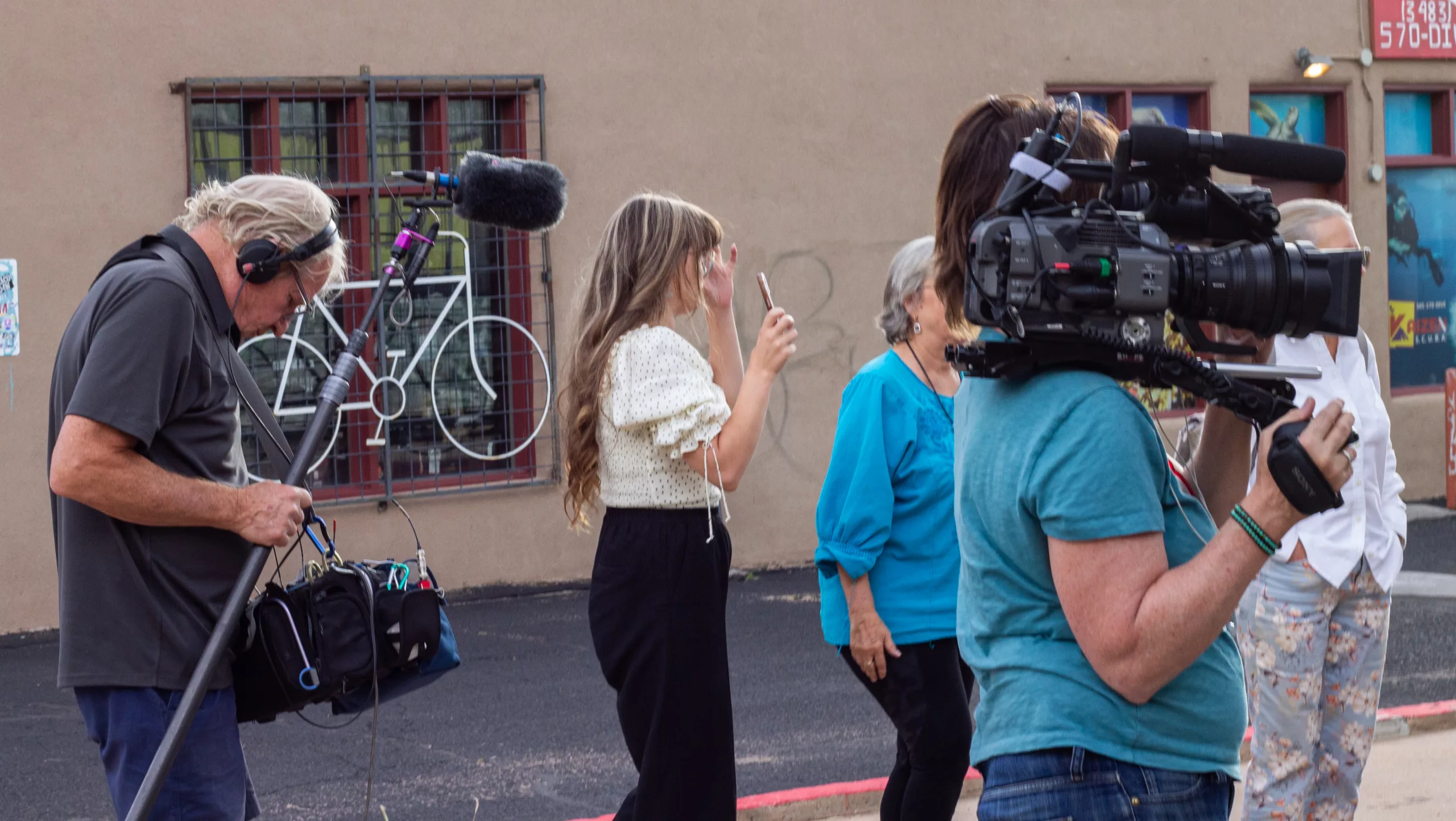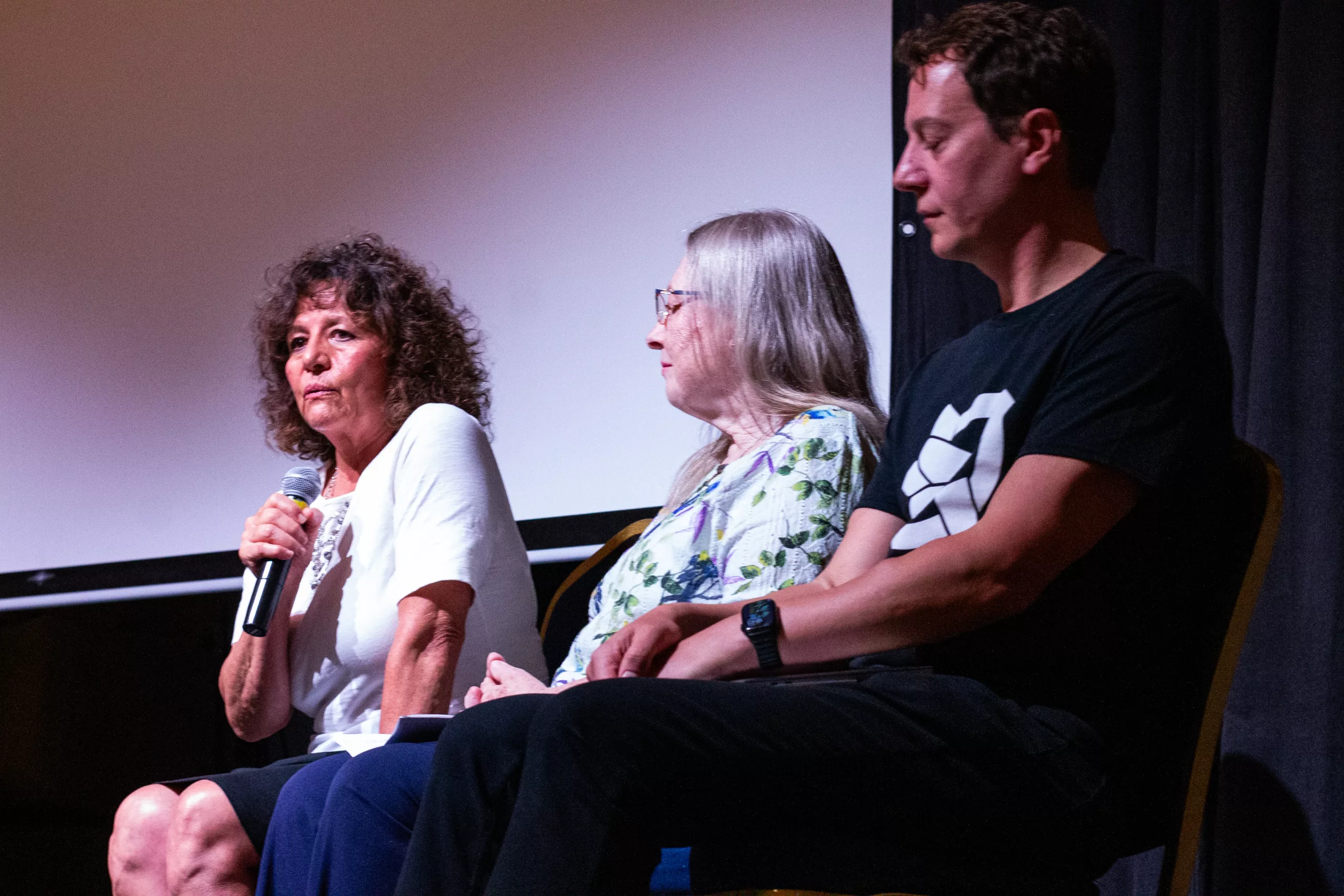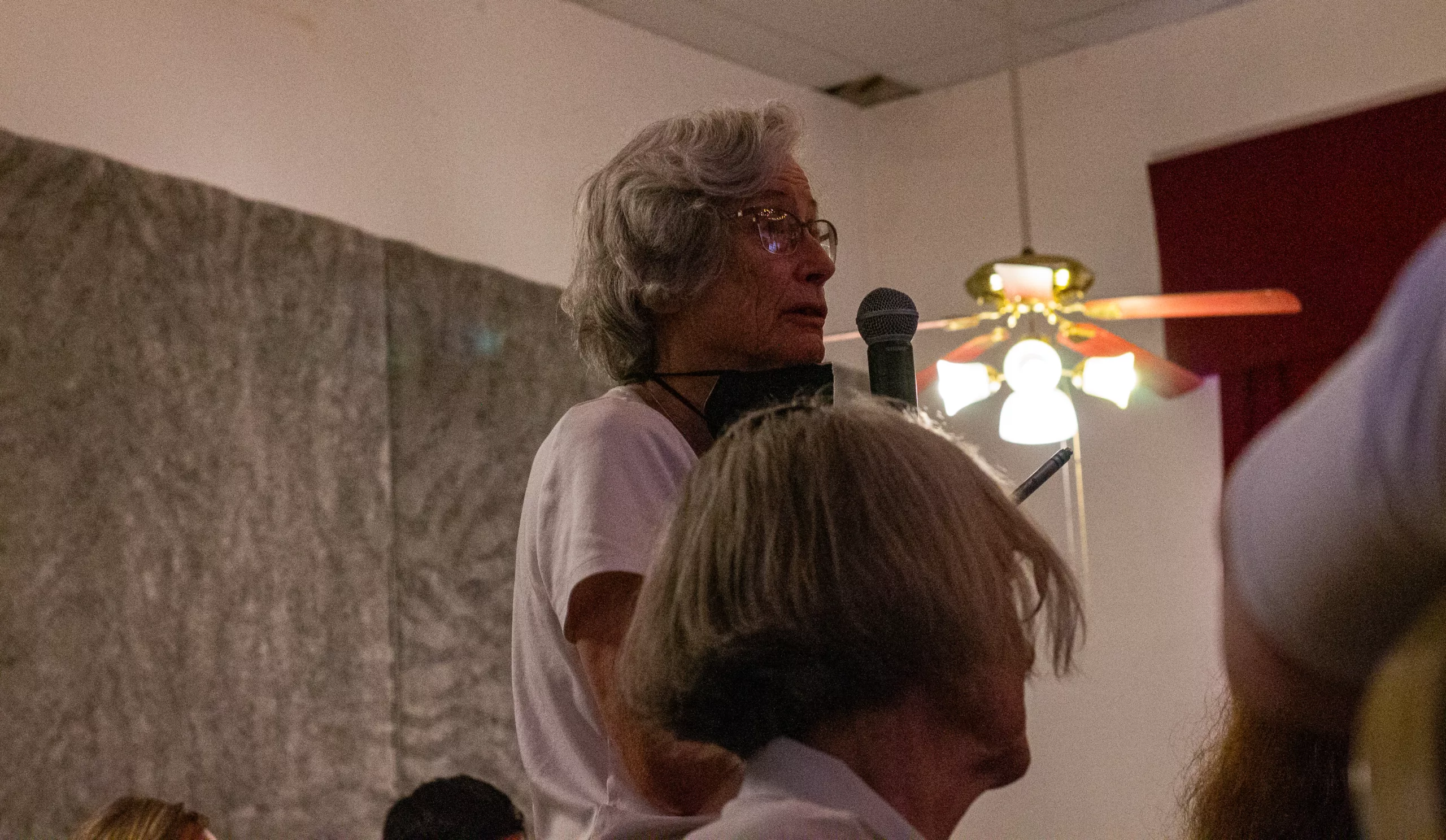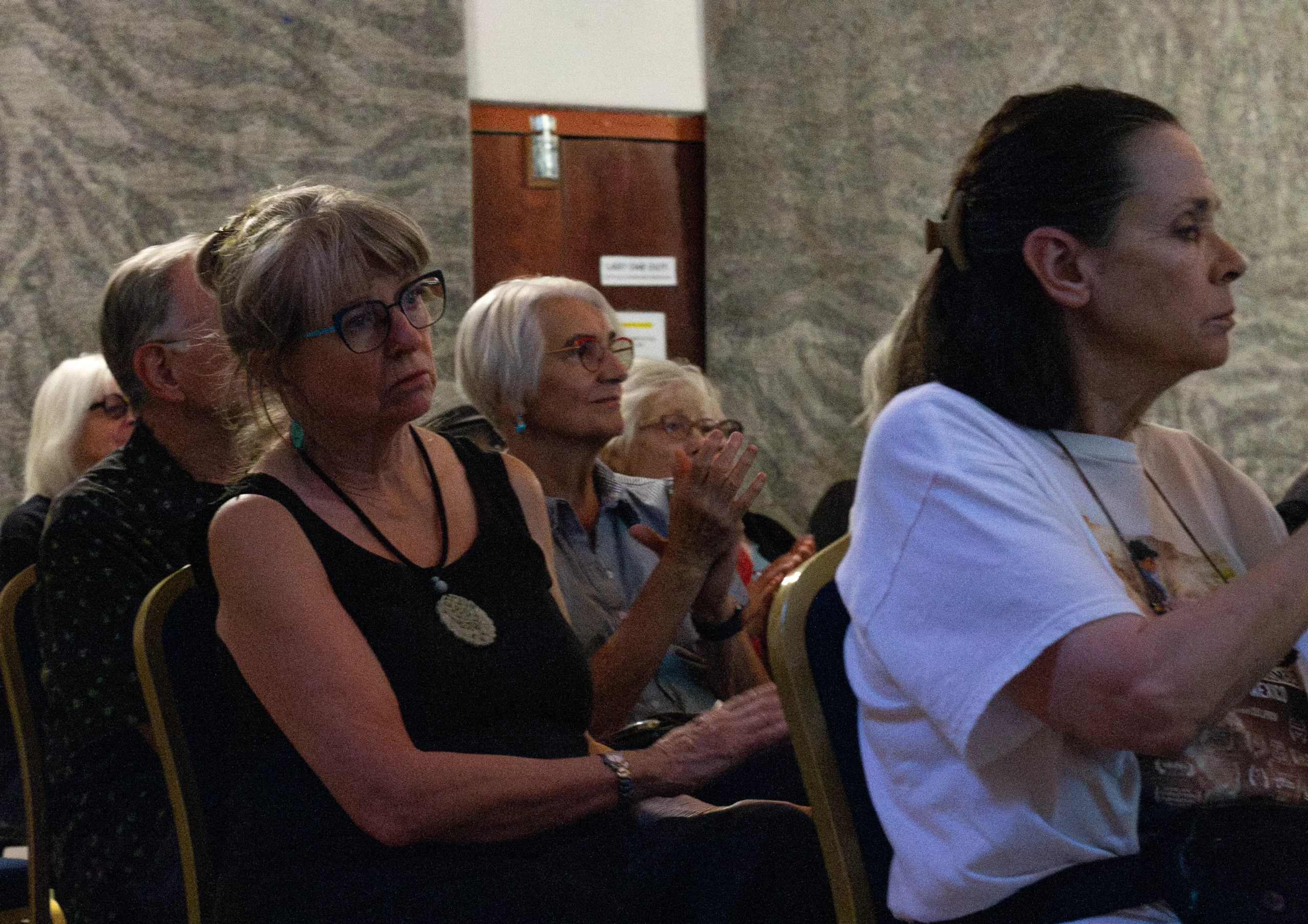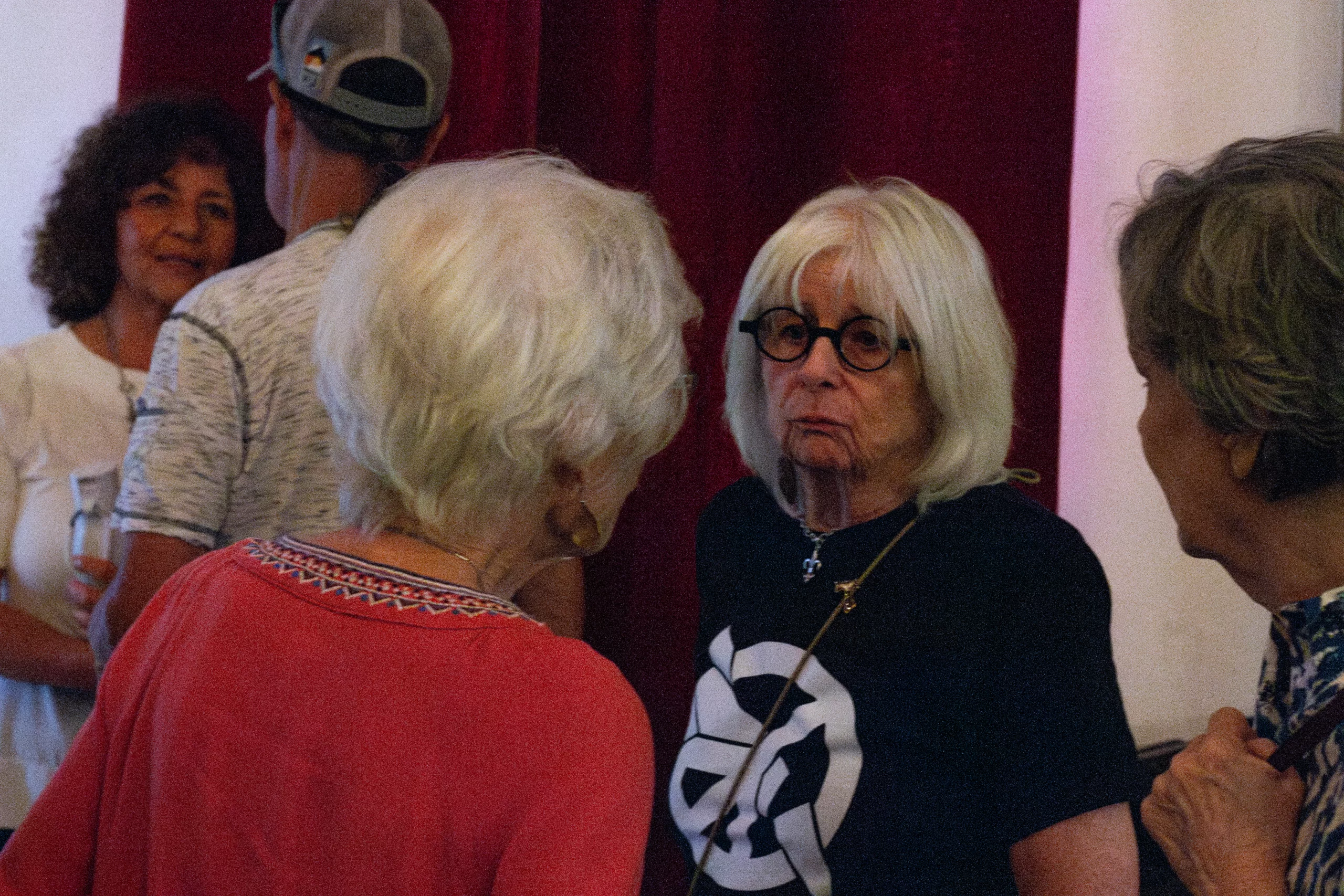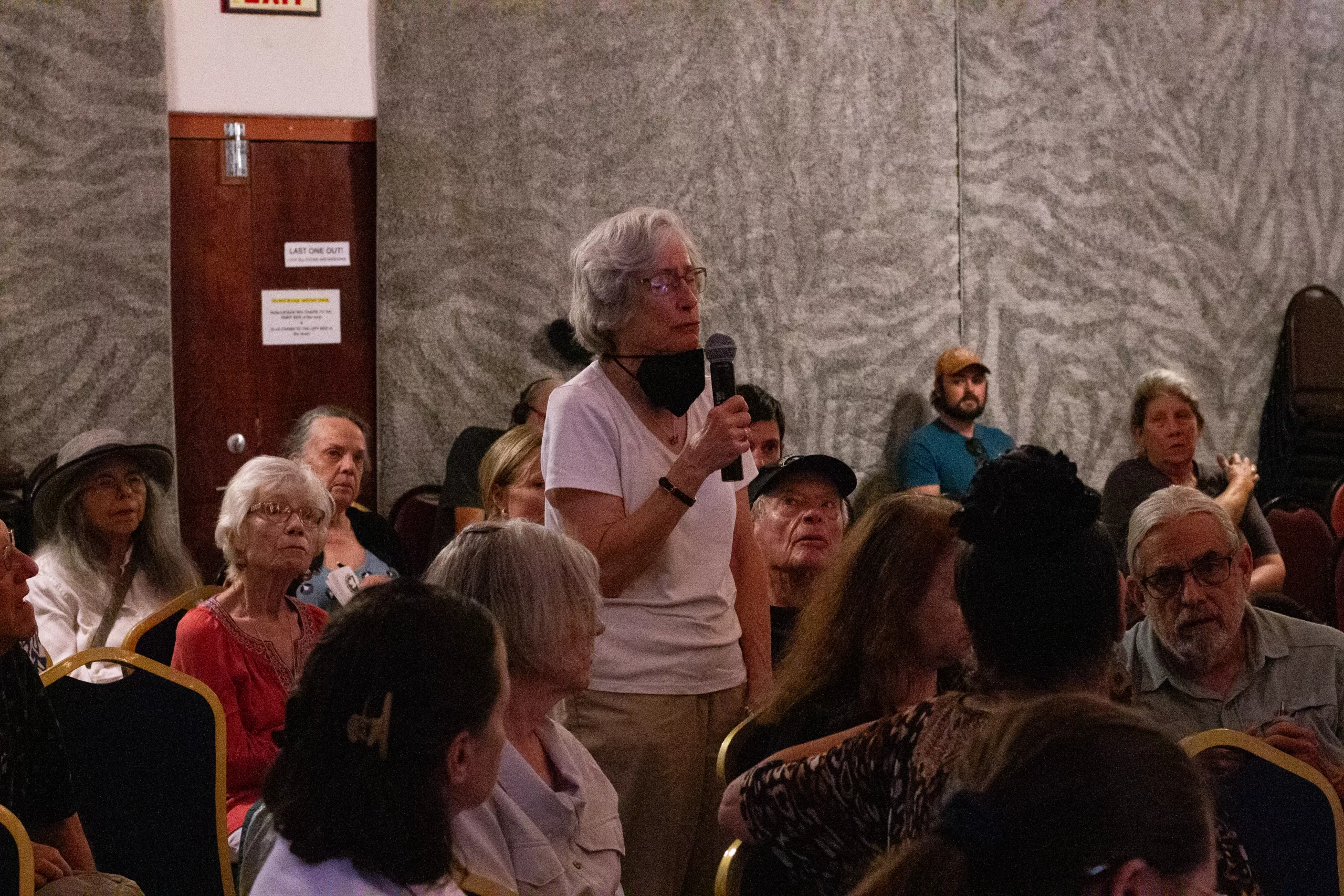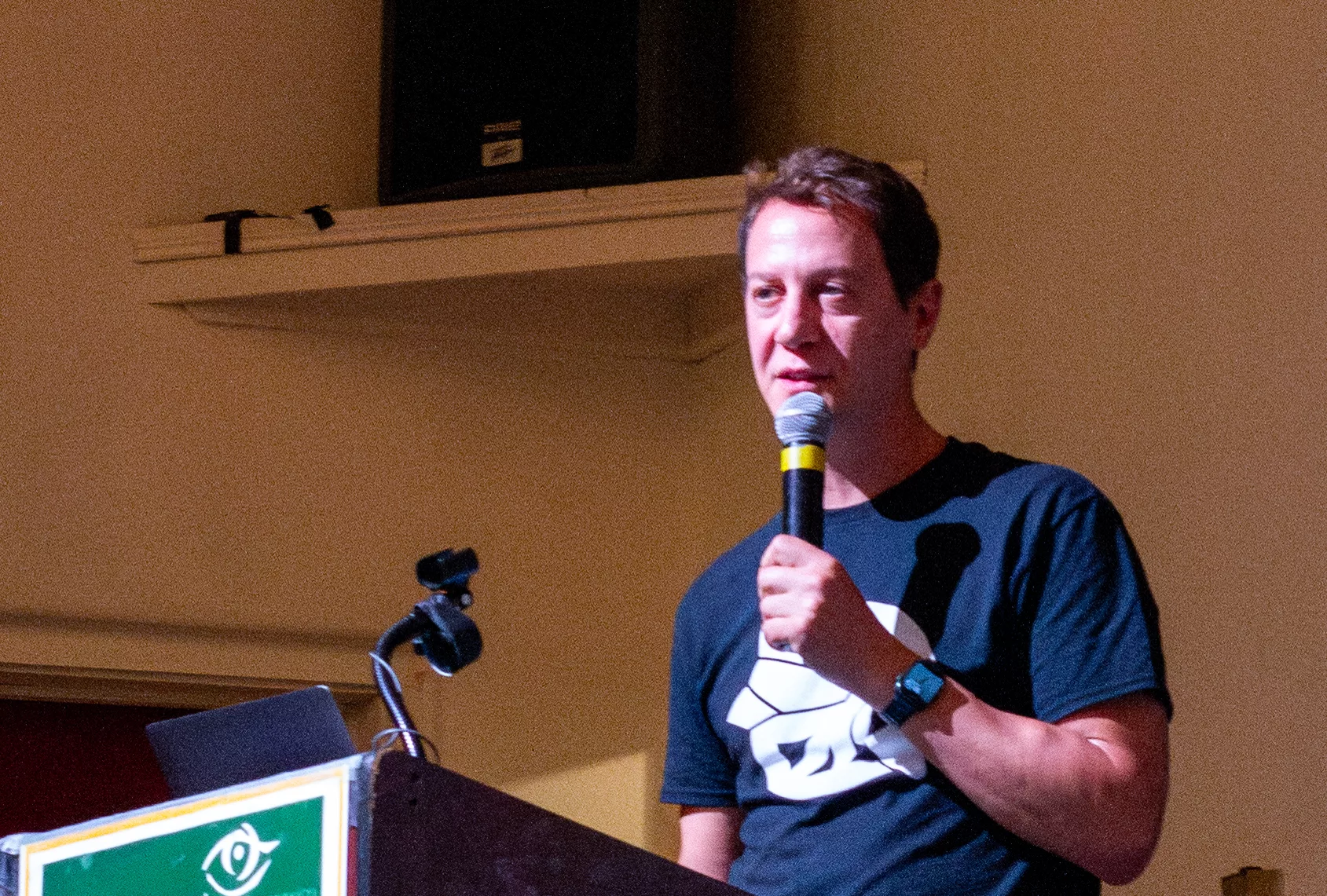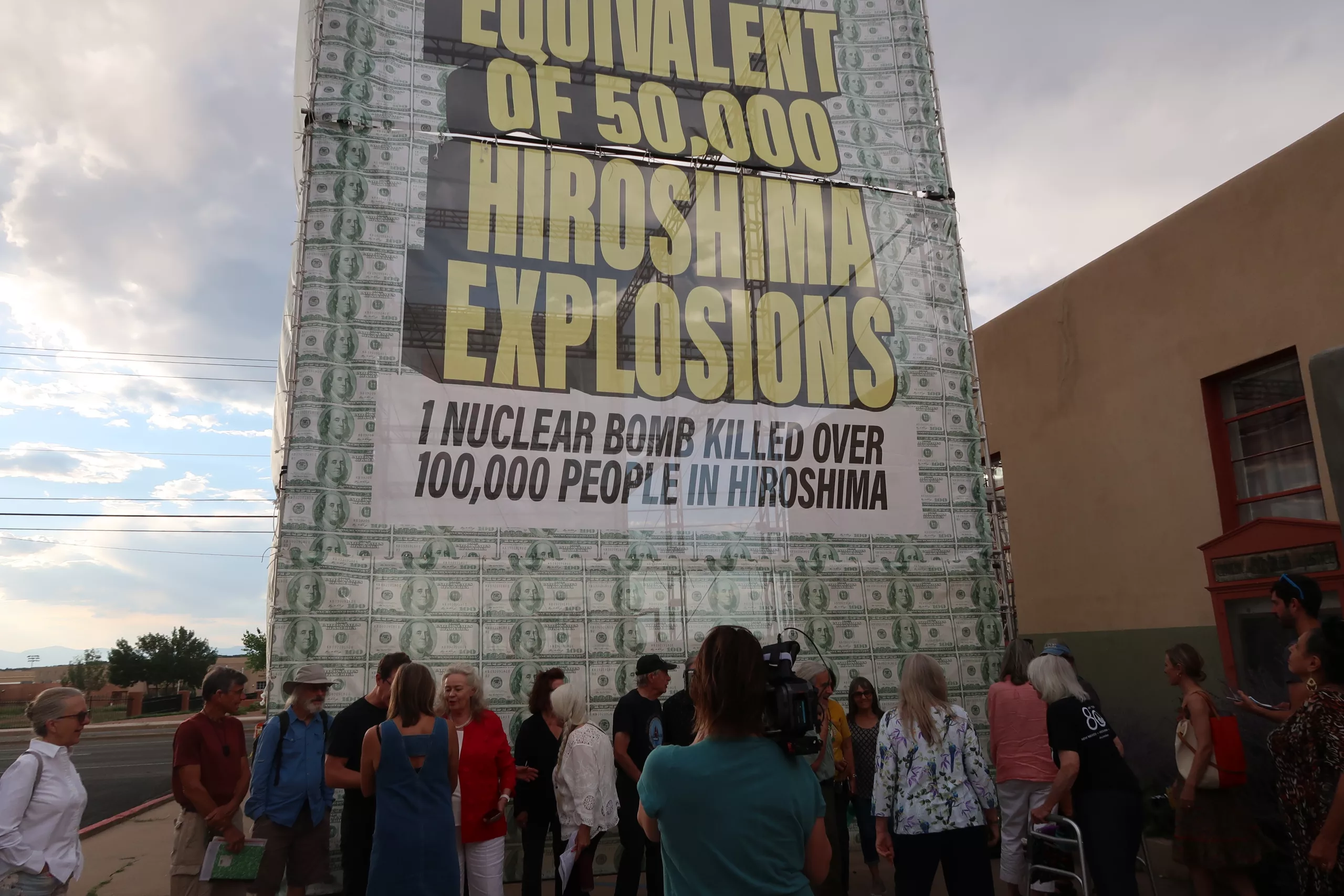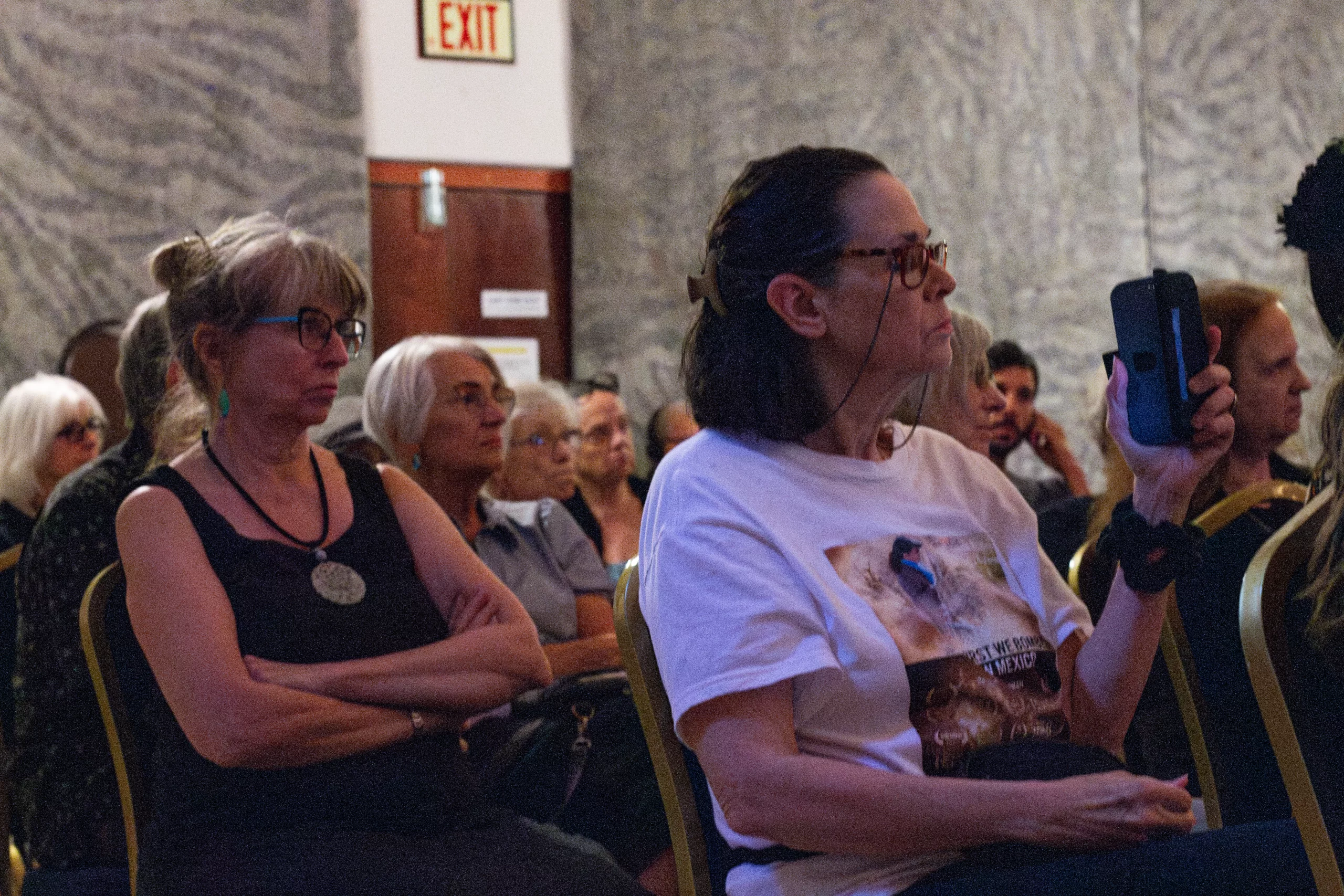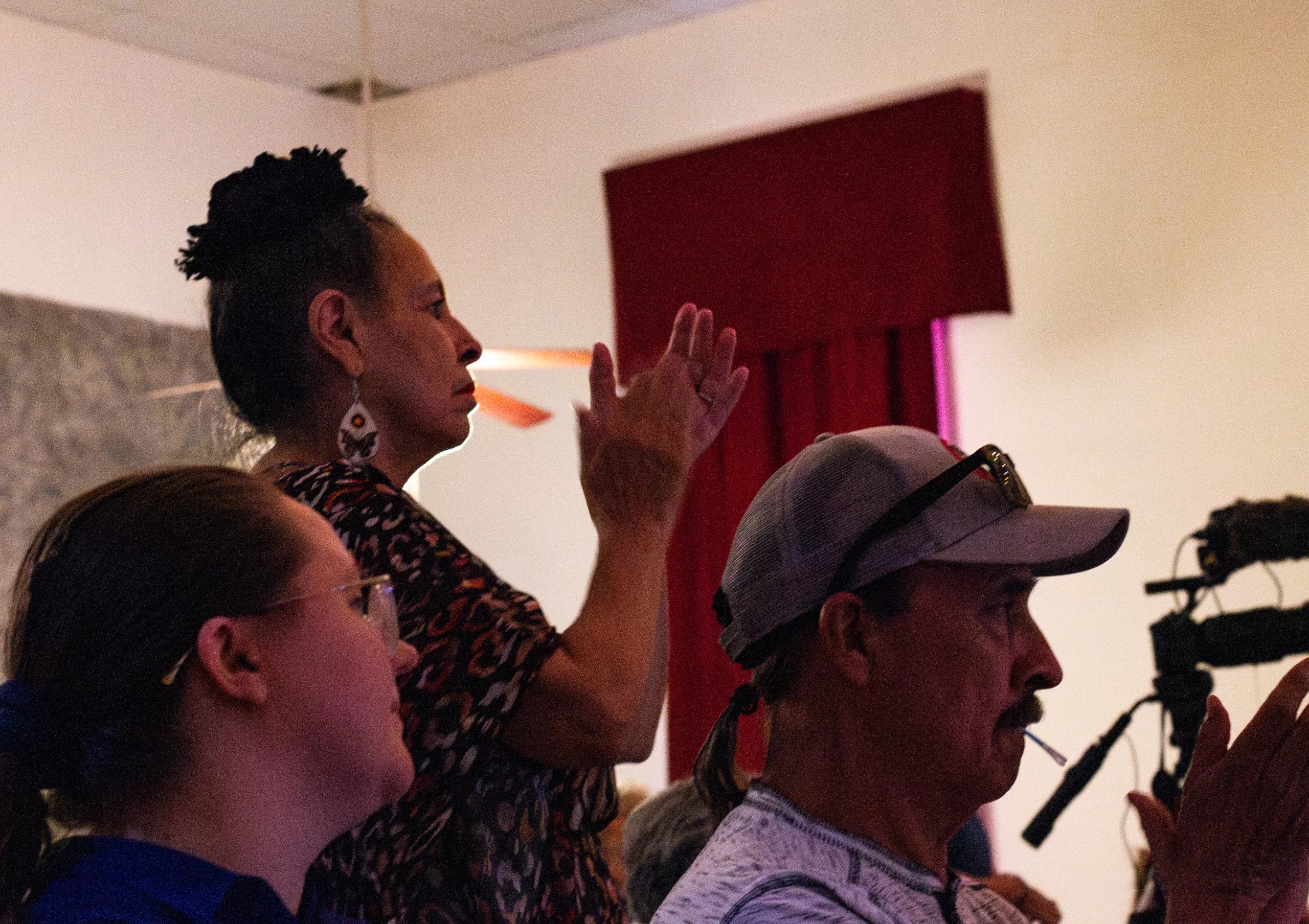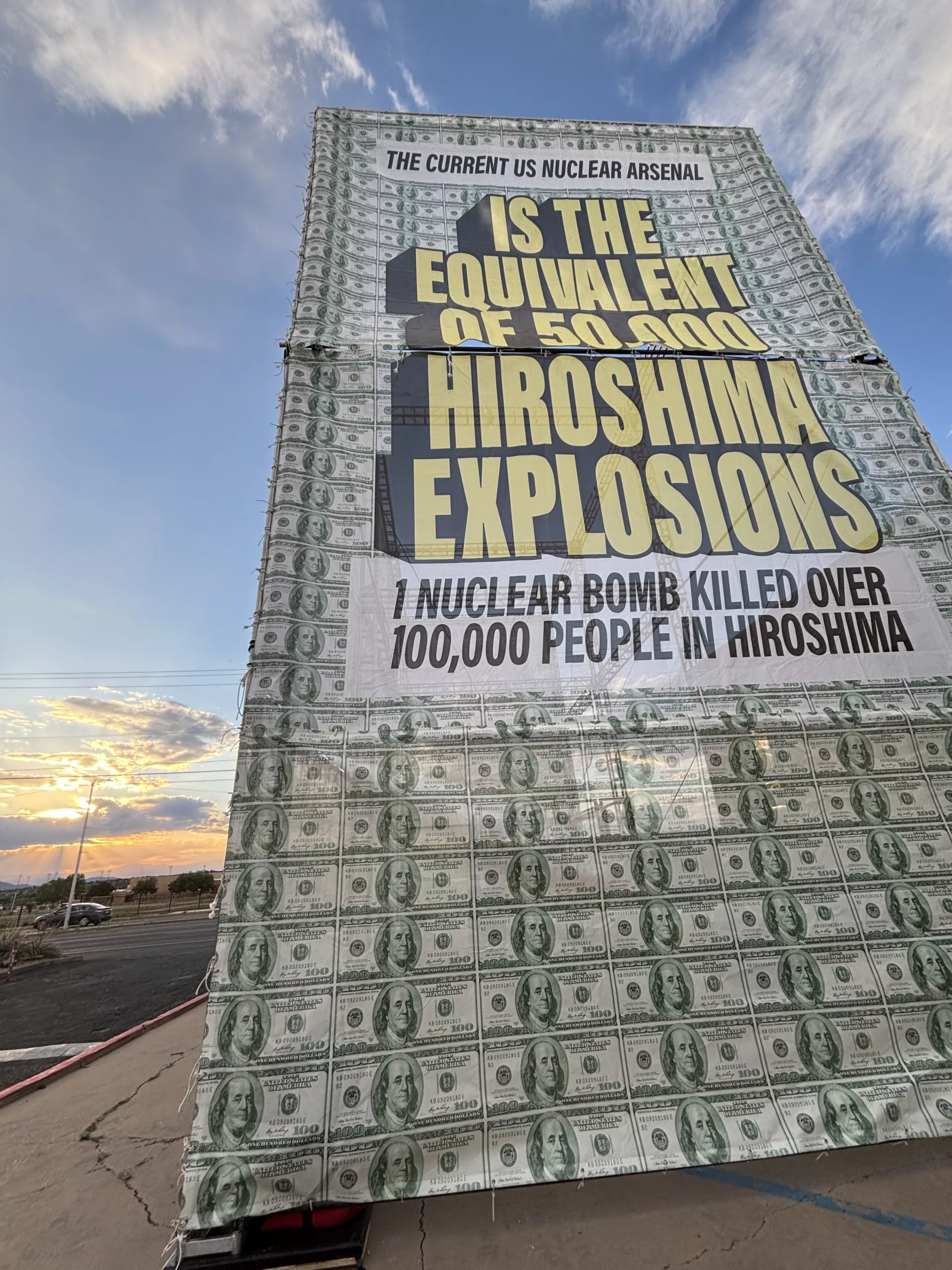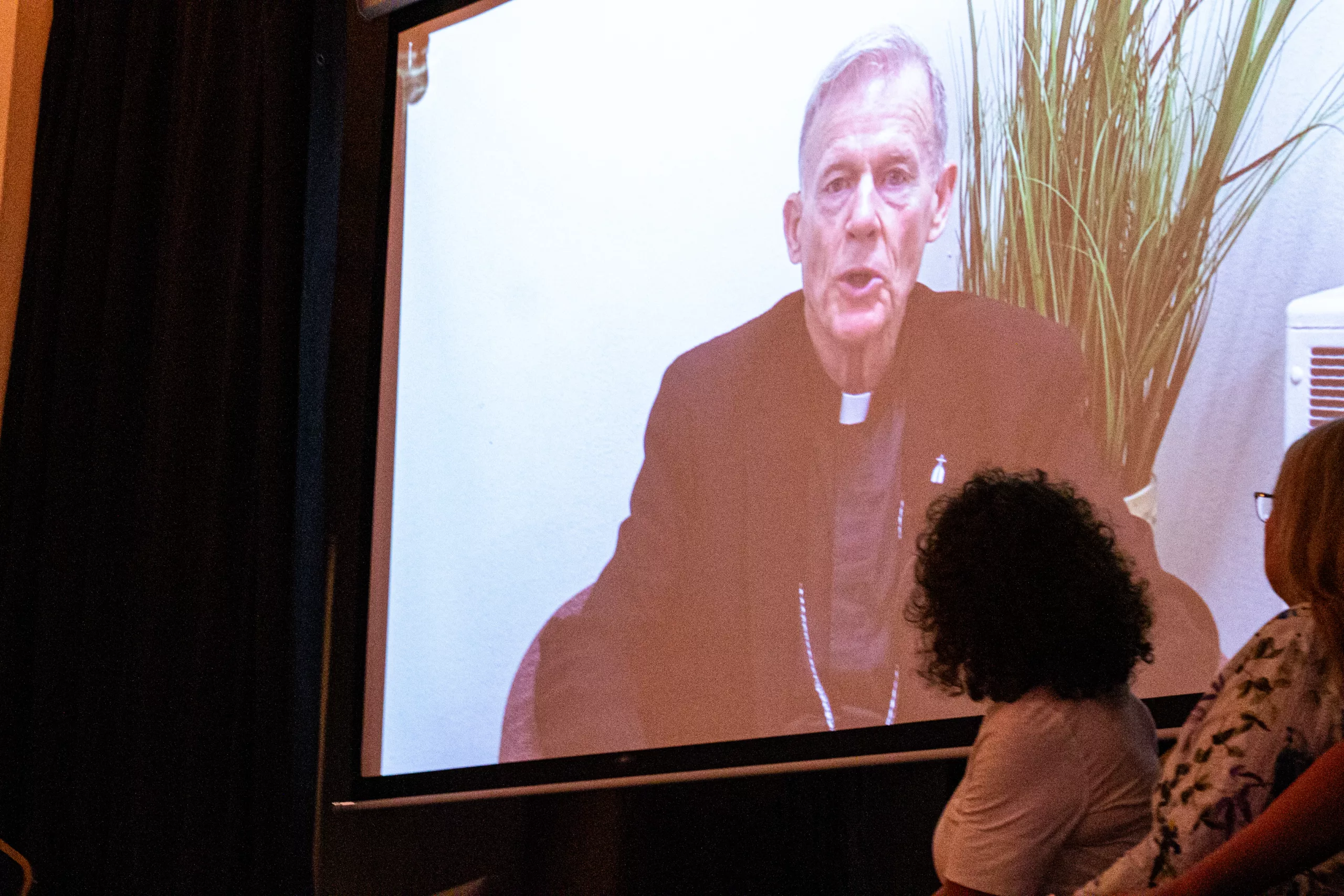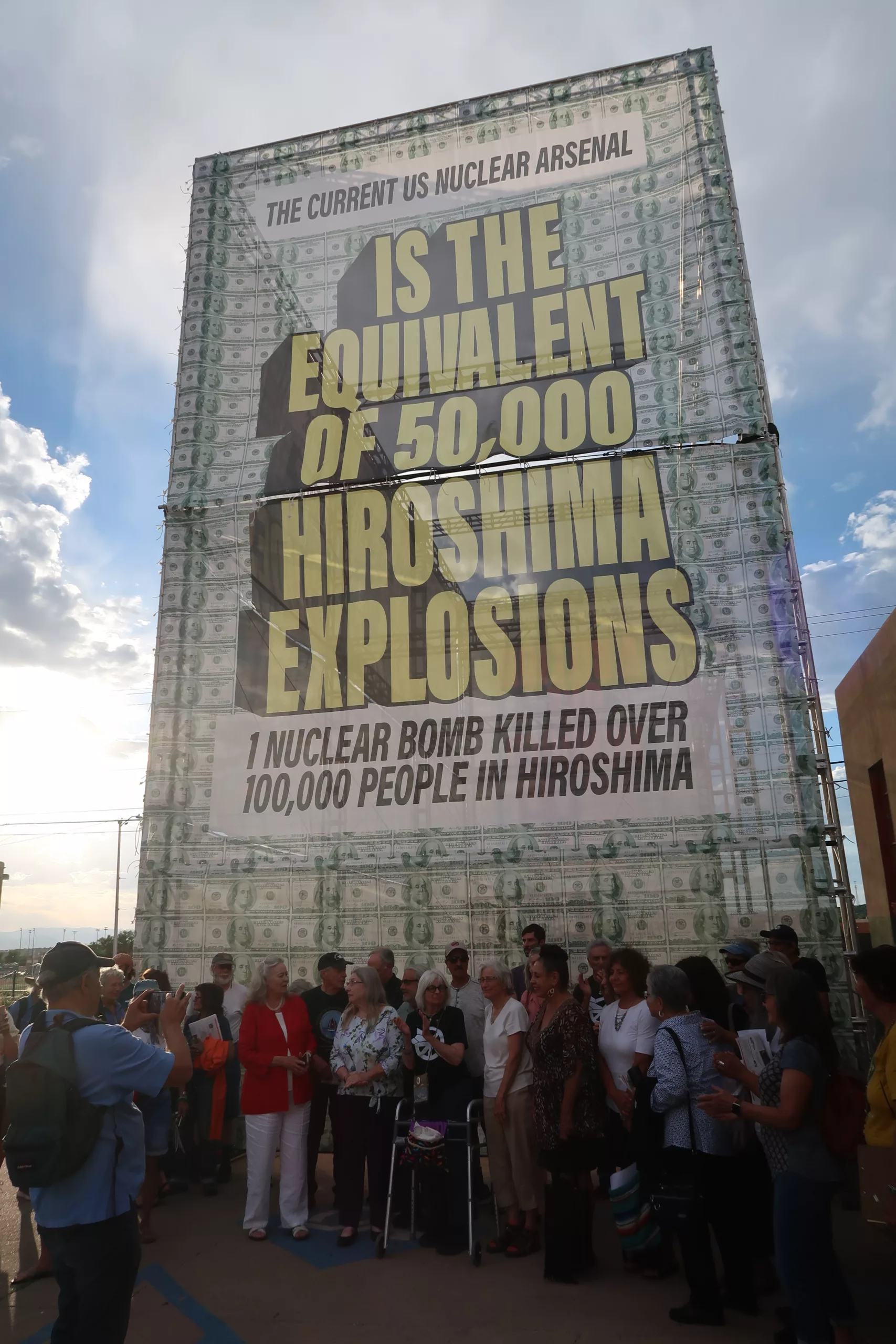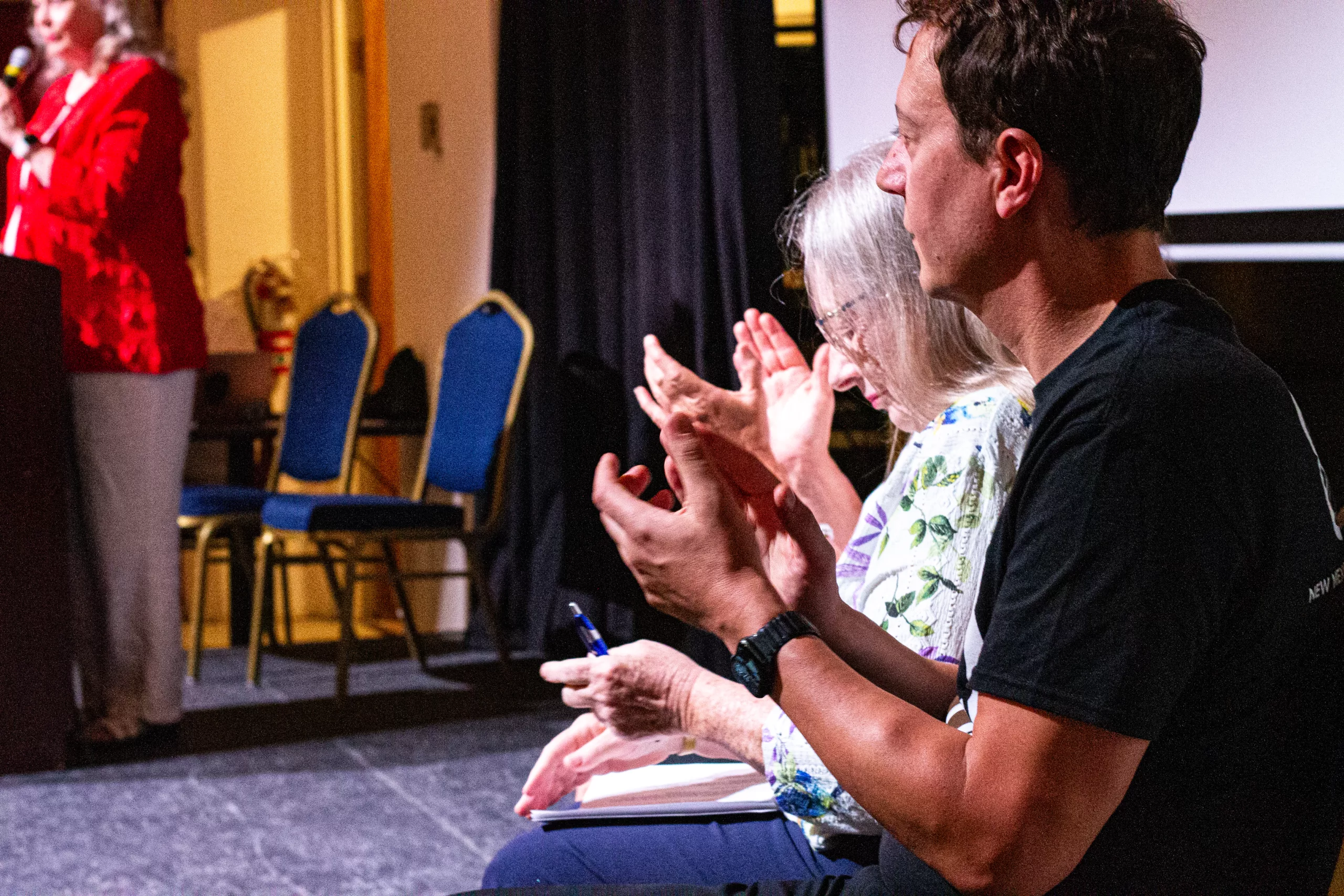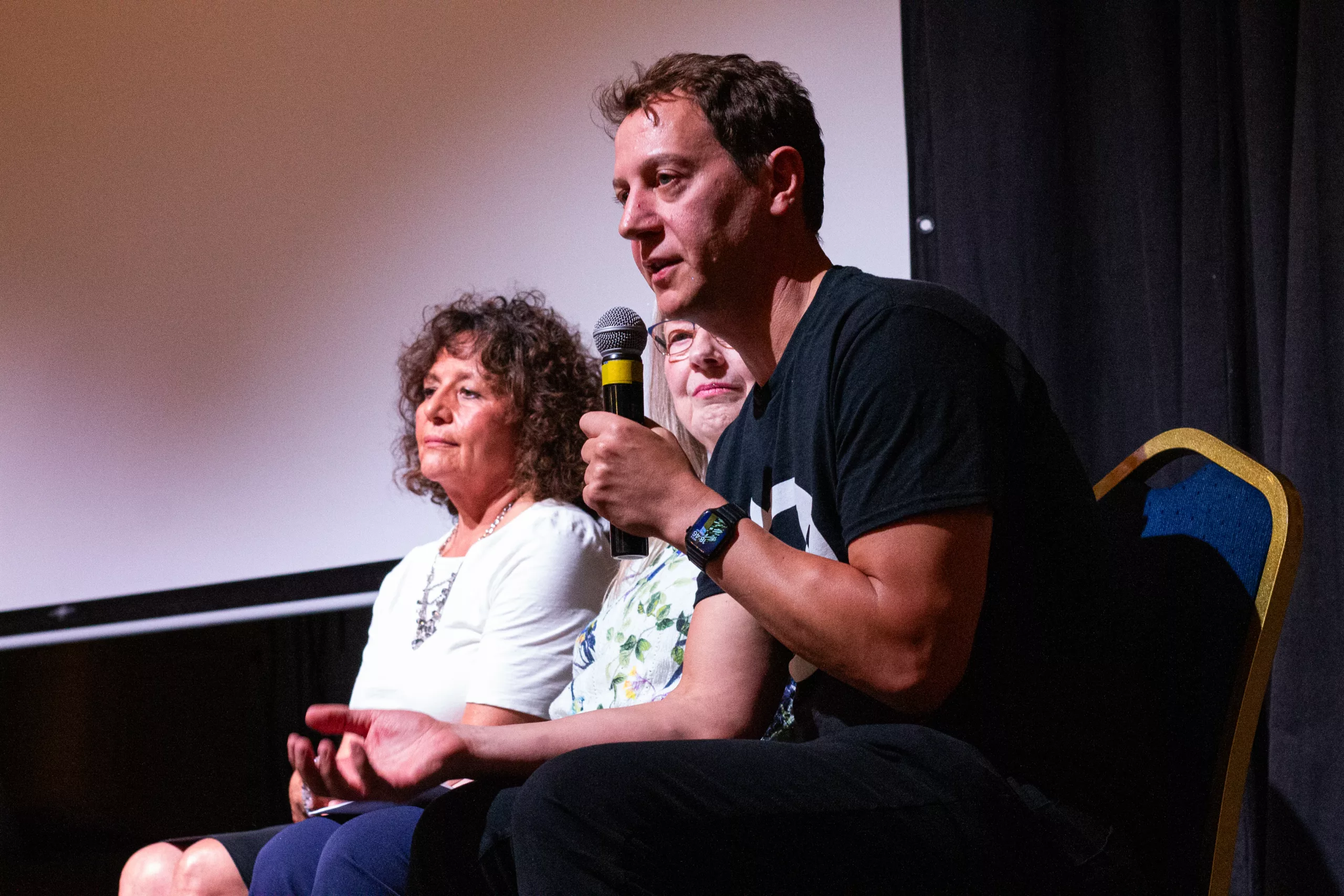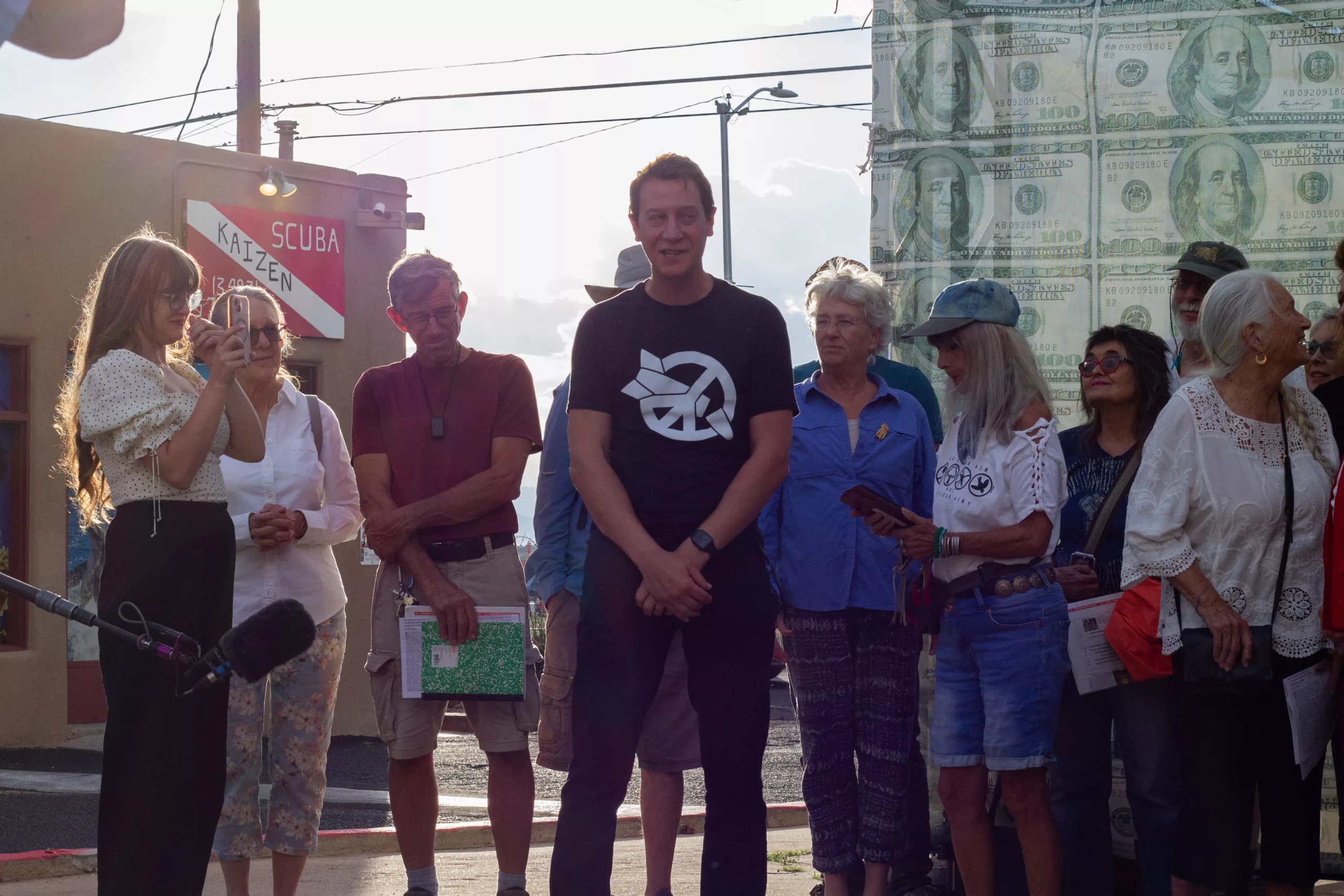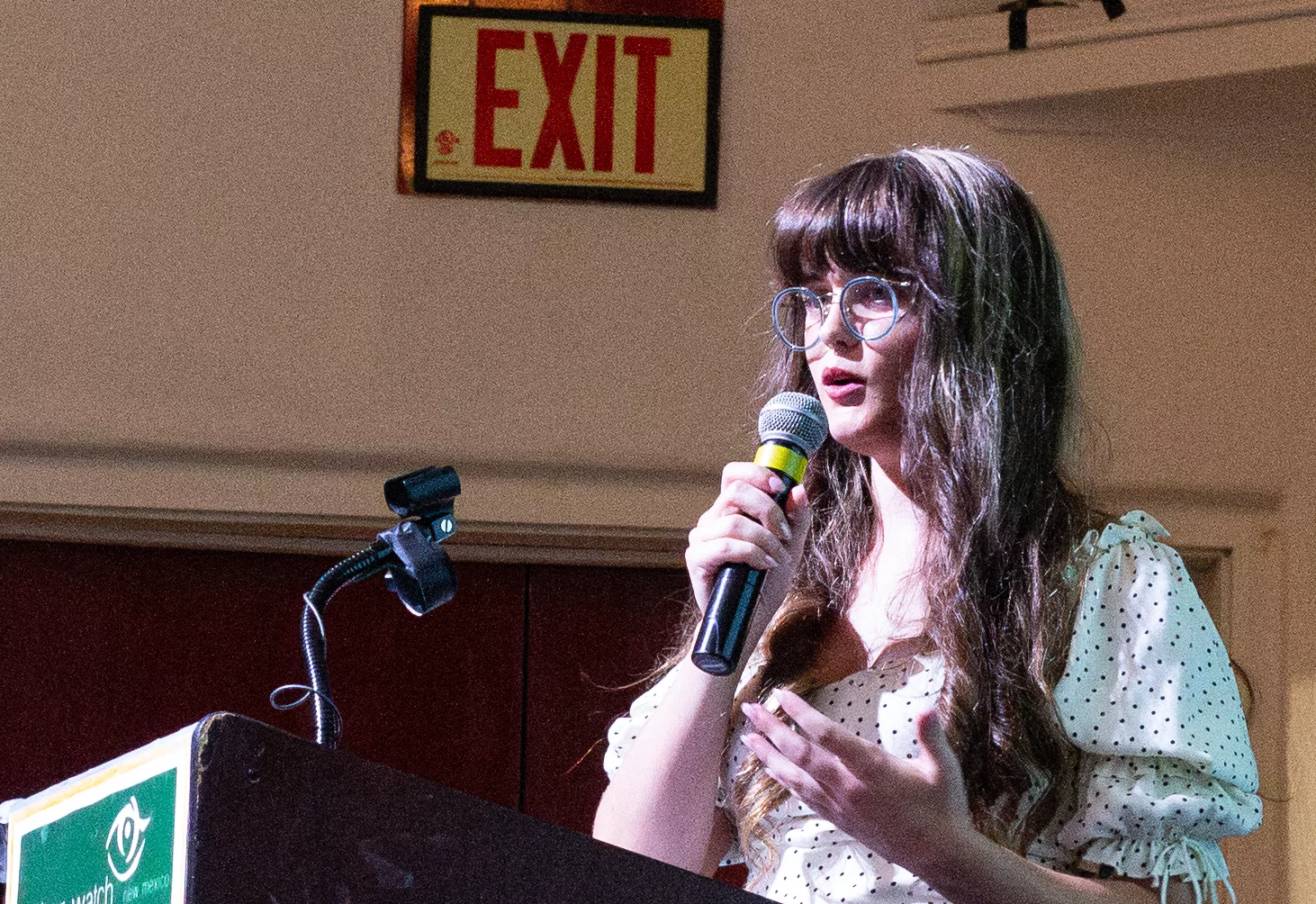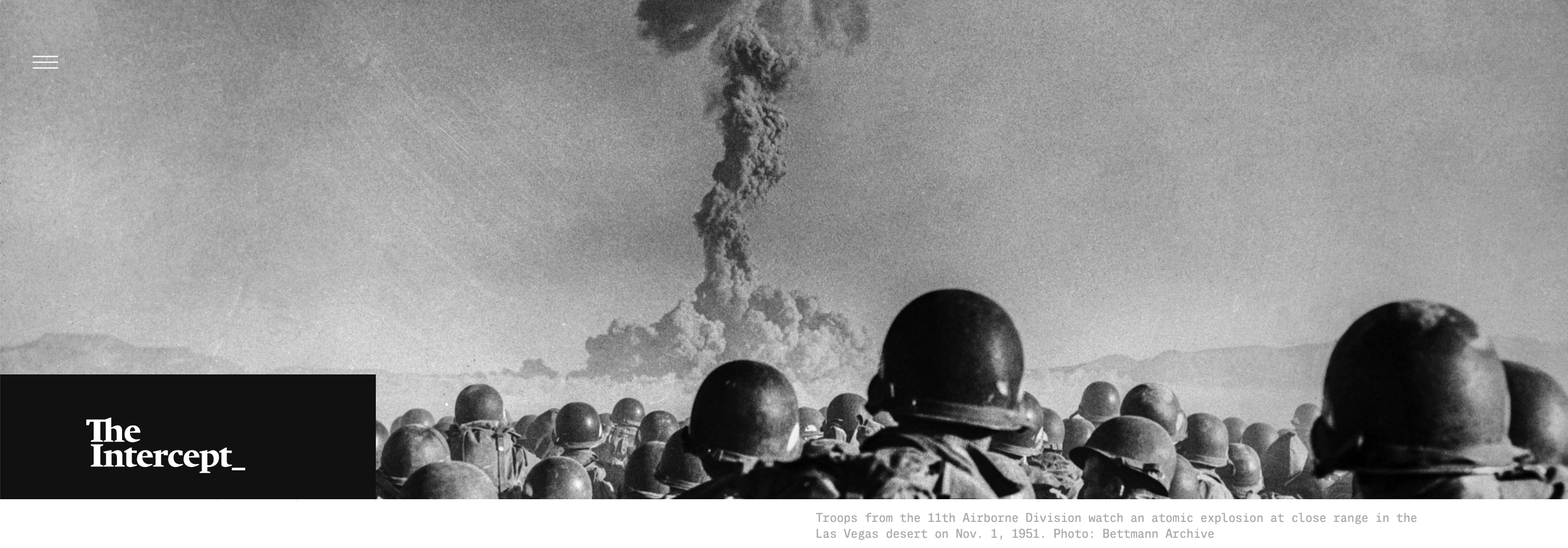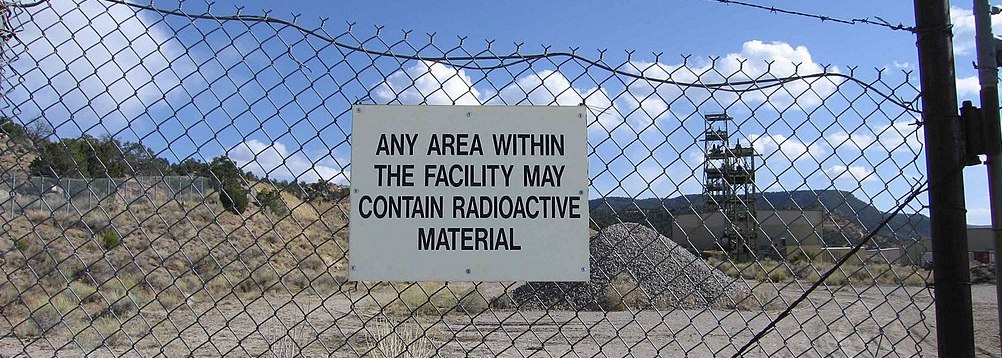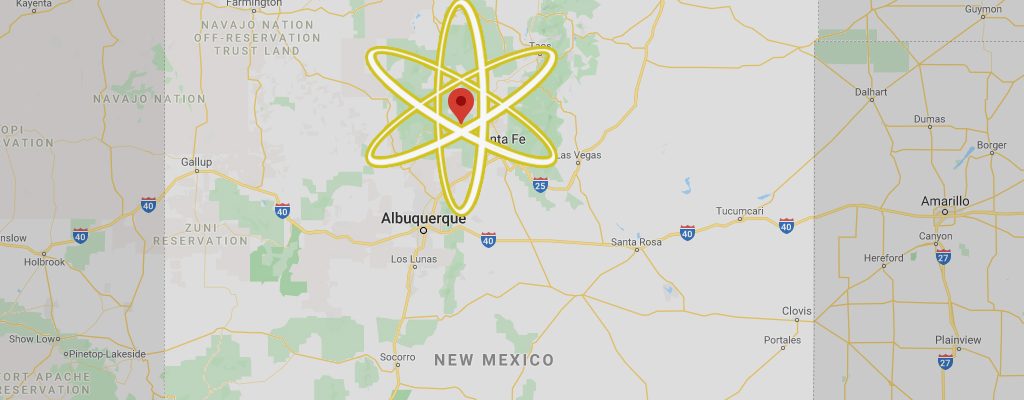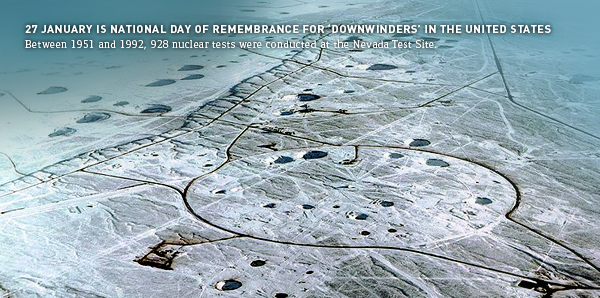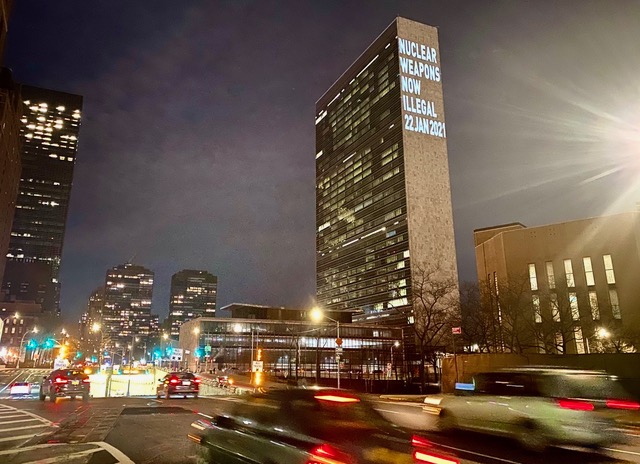Los Alamos’ plutonium facility safety systems need improvement, oversight board says
Nuclear Watch New Mexico executive direcor Jay Coghlan sees PF-4 as being a bigger scale — and having bigger risks — than the other aging buildings.
“PF-4 is not unique in being old,” Coghlan said. “However, PF-4 is totally unique in currently being the only facility that can process large amounts of plutonium … particularly including plutonium pit production. I think, in part, that’s why the Safety Board focuses more on PF-4 than, to my knowledge, than any other single individual facility.”
By Alaina Mencinger amencinger@sfnewmexican.com | November 7, 2025 santafenewmexican.com
An independent oversight agency wants to see improved safety systems at the facility at the heart of Los Alamos National Laboratory’s plutonium pit mission: PF-4.
The Defense Nuclear Facilities Safety Board reported what it believes to be gaps in a safety analysis drafted for PF-4 and delays in upgrades to safety systems in a letter last month to Energy Secretary Chris Wright.
“Maintaining momentum for these safety infrastructure projects is more important in light of the issues with the safety analysis,” the board wrote in the letter dated Oct. 10. It was signed by former acting chairman Thomas Summers.
LANL Prioritizes Plutonium “Pit” Bomb Core Production Over Safety
The independent Defense Nuclear Facilities Safety Board recently released its Review of the Los Alamos Plutonium Facility Documented Safety Analysis. It concluded that:
“While LANL facility personnel continue to make important upgrades to the Plutonium Facility’s safety systems, many of those projects have encountered delays due to inconsistent funding and other reasons. DOE and LANL should consider prioritizing safety-related infrastructure projects to ensure that the Plutonium Facility safety strategy adequately protects the public, as the facility takes on new and expansive national security missions.” (Page 24)
In early October 2024, the Department of Energy’s semi-autonomous National Nuclear Security Administration (NNSA) announced with great fanfare that the Los Alamos Lab had produced its first “diamond stamped” plutonium pit for the nuclear weapons stockpile. Tens of billions of taxpayers’ dollars have been sunk into LANL’s long delayed and over budget pit production program. Given no further announcements, it is not currently known whether or not the Lab is meeting its congressionally required production goals. Endemic nuclear safety problems have long been an intractable issue, at one point even forcing a three-year halt to plutonium operations at LANL’s Plutonium Facility-4 (“PF-4”).
In its recent Review, the Safety Board reported:
“The [2009] Plutonium Facility safety basis described very large potential [radioactive] dose consequences to the public following seismic events…. DOE committed to upgrade and seismically qualify the ventilation system, with a particular focus on a specific ventilation subsystem…”
“As the only facility in the DOE complex that can process large quantities of plutonium in many forms, [PF-4] represents a unique capability for the nation’s nuclear deterrent. The Board has long advocated for the use of safety-related active confinement systems in nuclear facilities for the purposes of confining radioactive materials…Passive confinement systems are not necessarily capable of containing hazardous materials with confidence because they allow a quantity of unfiltered air contaminated with radioactive material to be released from an operating nuclear facility following certain accident scenarios. Safety related active confinement ventilation systems will continue to function during an accident, thereby ensuring that radioactive material is captured by filters before it can be released into the environment… (Page 2, bolded emphases added)
AP: Trump appears to suggest the US will resume testing nuclear weapons for first time in 30 years
“For Trump, who has cast Russia as a “paper tiger” for failing to swiftly subdue Ukraine, the message is that Russia remains a global military competitor, especially on nuclear weapons, and that Moscow’s overtures on nuclear arms control should be acted on.”
By MICHELLE L. PRICE and CHRIS MEGERIAN | October 30, 2025 apnews.com
BUSAN, South Korea (AP) — President Donald Trump appeared to suggest the U.S. will resume testing nuclear weapons for the first time in three decades, saying it would be on an “equal basis” with Russia and China.
The Kremlin pointed out that a global ban on nuclear tests has remained in place, but warned that if any country resumes nuclear testing Russia would follow suit.
There was no indication the U.S. would start detonating warheads, but Trump offered few details about what seemed to be a significant shift in U.S. policy.
He made the announcement on social media minutes before he met with Chinese leader Xi Jinping on Thursday in South Korea. He offered little clarity when he spoke to reporters later aboard Air Force One as he flew back to Washington.
The U.S. military already regularly tests its missiles that are capable of delivering a nuclear warhead, but it has not detonated the weapons since 1992. The Comprehensive Nuclear Test Ban Treaty, which the U.S. signed but did not ratify, has been observed since its adoption by all countries possessing nuclear weapons, North Korea being the only exception.
REUTERS: Trump tells Pentagon to immediately resume testing US nuclear weapons
“Russia – which tested a new nuclear-powered cruise missile on October 21, held nuclear readiness drills on October 22 and tested a new nuclear-powered autonomous torpedo on October 28 – said it hoped Trump had been properly informed that Moscow had not tested a nuclear weapon itself.”
By Trevor Hunnicutt, Ismail Shakil and Kanishka Singh | October 30, 2025 reuters.com
VIEW THE RECORDING: Santa Fe Ecumenical Conversations Towards Nuclear Disarmament at Santa Maria de la Paz Catholic Community – Monday, October 27
Archbishop John C. Wester and NukeWatch New Mexico presented a special evening at Santa Maria de la Paz Catholic Community on Monday, October 27, from 6:00 to 8:00 p.m. MT. Following a presentation from NukeWatch executive director Jay Coghlan on U.S. nuclear weapons “modernization,” the Archbishop shared reflections from his pastoral letter, Living in the Light of Christ’s Peace, and speak about the importance of dialogue and hope in working toward nuclear disarmament.
View the recording at https://www.youtube.com/watch?v=9LFmQzMoJds&t=1s
Trump Orders Nuclear Weapons Testing for New Nuclear Arms Race
New Plutonium “Pit” Bomb Cores at Los Alamos Lab Could Make It Real
Just minutes before meeting with Chinese President Xi Jinping, Trump posted on his Truth Social media platform that “Because of other countries testing programs, I have instructed the Department of War to start testing our Nuclear Weapons on an equal basis. That process will begin immediately.” House Speaker Mike Johnson soon followed on CNN saying, “I think it is an obvious and logical thing to ensure that our weapons systems work.”
No other countries are currently testing nuclear weapons (the last was by North Korea in 2017). Further, any nuclear weapons tests by the U.S. would be performed by the Department of Energy (whose last test was in 1992), not the Department of War (until recently the Department of Defense). Trump was likely referring to Vladimir Putin’s recent claims of a new nuclear powered cruise missile and a tsunami-causing nuclear-armed torpedo that could threaten America’s coastal cities. In addition, China is dramatically expanding its own fleet of intercontinental ballistic missiles.
But central to all this is the U.S.’ own $2 trillion “modernization” program that will rebuild every nuclear warhead in the planned stockpile with new military capabilities and produce new-design nuclear weapons as well. This so-called modernization program will also build new nuclear weapons production facilities expected to be operational until ~2080, and buy new missiles, subs, and bombers from the usual rich defense contractors, all to keep nuclear weapons forever.
‘Nuclear weapons are blasphemous’: Archbishop Wester continues disarmament push with talk
This event was organized by the “Santa Fe Ecumenical Conversations Towards Nuclear Disarmament” group at the Santa Maria de la Paz parish near the Santa Fe Community College. They kindly invited NukeWatch to speak before Archbishop Wester for what turned out to be a wonderful event. The full recording can be viewed at https://www.youtube.com/@SMDLP/streams
By Cormac Dodd cdodd@sfnewmexican.com | October 28, 2025 santafenewmexican.com
Despite saying he has received a somewhat muted response from the local faithful, Santa Fe’s Catholic archbishop is still pushing nuclear disarmament as vital to humanity’s spiritual well-being and continued existence.
“I think nuclear weapons are blasphemous, because I think nuclear weapons are humanity’s attempt to build a Tower of Babel, an attempt to eat from the apple of the tree of the Garden of Eden, to become like God, to become gods,” Archbishop John C. Wester said in a roughly 30-minute address at Santa Maria de la Paz Catholic Church south of Santa Fe.
“In humility, we must avoid inventing anything that, in a matter of hours, can destroy what God has created,” the leader of the Archdiocese of Santa Fe continued. “The story of Adam and Eve is archetypal, I think: When human beings try to become as God, they lose the Garden of Eden and they must endure the cruel reality of paradise lost.”
The archbishop’s comments followed a journey he undertook to Japan on the 80th anniversary of the U.S. military’s decision to drop atomic bombs on Hiroshima and Nagasaki toward the end of World War II. He spoke in front of an audience of about 50 people — who gave Wester a standing ovation — at Monday’s event
In a Looming Nuclear Arms Race, Aging Los Alamos Faces a Major Test
The lab where Oppenheimer developed the atomic bomb is the linchpin in the United States’ effort to modernize its nuclear weapons. Yet the site has contended with contamination incidents, work disruptions and old infrastructure.
By Alicia Inez Guzmán | October 28, 2025 The New York Times nytimes.com
In a sprawling building atop a mesa in New Mexico, workers labor around the clock to fulfill a vital mission: producing America’s nuclear bomb cores.
The effort is uniquely challenging. Technicians at Los Alamos National Laboratory must handle hazardous plutonium to create the grapefruit-size cores, known as pits. They do so in a nearly 50-year-old building under renovation to address aging infrastructure and equipment breakdowns that have at times disrupted operations or spread radioactive contamination, The New York Times found.
Now, the laboratory is under increasing pressure to meet the federal government’s ambitions to upgrade the nation’s nuclear arsenal. The $1.7 trillion project includes everything from revitalizing missile silos burrowed deep in five states, to producing new warheads that contain the pits, to arming new land-based missiles, bomber jets and submarines.
But the overall modernization effort is years behind schedule, with costs ballooning by the billions, according to the Congressional Budget Office. In 2018, Congress charged Los Alamos with making an annual quota of 30 pits by 2026, but by last year it had produced just one approved for the nuclear stockpile. (Officials have not disclosed whether more have been made since then.)
*The featured image differs from the article photo due to usage rights.
Why Putin’s ‘invincible’ nuclear-powered missile is more likely to become a disastrous ‘flying Chernobyl’ for Russia
The US abandoned efforts to build nuclear-powered missile weapons during the 1950s arms race with the Soviet Union as a nuclear-powered missile would effectively be a huge radiation risk.
Jeffrey Lewis, a nuclear nonproliferation expert at Middlebury College, described it as a “tiny flying Chernobyl,” referencing the Soviet power plant that melted down and covered a 1,600-mile area with toxic radiation…While Lewis believes the Burevestnik is only capable of subsonic speed and easy to intercept, he warned that Russia’s ambition poses a return to the Cold War era.
“NATO aircraft could intercept it. The problem is that Burevestnik is yet another step in an arms race that offers no victory for either side,” he wrote on X.
By Ronny Reyes | October 28, 2025 nypost.com
Russian strongman Vladimir Putin’s latest threats that Moscow is preparing to deploy its new “invincible” nuclear-powered cruise missile has drawn a rebuke from President Trump and a reminder of America’s own nuclear might.
But experts say the Burevestnik missile could end up being more like a disastrous “flying Chernobyl” for Russia — and proves Putin is actually nervous about the possibility of the US giving Tomahawk cruise missiles to Ukraine.
George Barros, of the Washington-based Institute for the Study of War, described Putin’s ominous Sunday announcement as a form of fear mongering from a Kremlin afraid that the US could give Kyiv a much more conventional weapon — the tried and true Tomahawk.
Russia tested new nuclear-powered Burevestnik cruise missile
“For Trump, who has cast Russia as a “paper tiger” for failing to swiftly subdue Ukraine, the message is that Russia remains a global military competitor, especially on nuclear weapons, and that Moscow’s overtures on nuclear arms control should be acted on.”
By Guy Faulconbridge and Lidia Kelly Tim Balk | October 26, 2025 reuters.com
- Russia tests nuclear-capable Burevestnik missile
- Missile flew for 14,000 km, 15 hours
- Putin says it can pierce any missile defences
Trump Administration Providing Weapons Grade Plutonium to Sam Altman
“If there were adults in the room and I could trust the federal government to impose the right standards, it wouldn’t be such a great concern, but it just doesn’t seem feasible.”
By: Joe Wilkins | October 24, 2025 futurism.com
With the economy the way it is these days, it’s nice to have a little walking around money.
Donald Trump certainly thinks so. Since his return to the White House, the president has labeled 440 federal properties for possible sale, leased 13.1 million acres of public land for strip mining, and held a fire sale for satellites developed by NASA’s Jet Propulsion Lab.
In one of his wildest money moves to date, the Financial Times reports that Trump is now offering companies access to plutonium from America’s arsenal of cold war nuclear missiles.
On Tuesday, the US Department of Energy (DOE) launched an application for interested parties to apply for access to a maximum of 19 metric tonnes — a little under 42,000 pounds — of weapons-grade plutonium, which has long been a key resource undergirding the US nuclear arsenal.
One of the companies anticipated to receive shipments of the fissile isotope from the DOE is Oklo, a “nuclear startup” backed — and formerly chaired — by OpenAI CEO Sam Altman. Earlier in October, Oklo was one of four US companies chosen by the DOE to join a new pilot program meant to rush the testing and approval of experimental reactor designs.
As the FT reports, we won’t know for certain until December 31, when the DOE announces the companies selected to purchase the plutonium, but it’s likely Oklo will be among them. That’s stirring up plenty of anxiety throughout the scientific community, who say the relaxed approach to nuclear development is a major cause for alarm.
“If there were adults in the room and I could trust the federal government to impose the right standards, it wouldn’t be such a great concern, but it just doesn’t seem feasible,” Edwin Lyman, a physicist with the Union of Concerned Scientists told the FT.
U.S. Agency That Protects Nuclear Arsenal to Furlough Workers
Jay Coghlan, the executive director of Nuclear Watch New Mexico, a private group that monitors the agency, said it was unclear if the furloughs would have any immediate effect on nuclear safety. “As a baseline, the nuclear safety officers have always been understaffed. There is simply not enough federal oversight as is. And then you’re talking about furloughing more,” he added.
By Tim Balk | October 17, 2025 nytimes.com
![]() The National Nuclear Security Administration said 1,400 workers would be affected by Monday.
The National Nuclear Security Administration said 1,400 workers would be affected by Monday.
Nuclear weapons safety oversight in decline with Trump, Biden inaction
The lone independent federal agency responsible for ensuring safety at U.S. nuclear weapons sites — including Hanford in Washington state — will lose its ability to issue recommendations for safer work by January if the Trump administration doesn’t replenish its board, which this month dwindles to one member.
By Patrick Malone | October 15, 2025 seattletimes.com
The Defense Nuclear Facilities Safety Board ensures adequate public health and worker safety by scrutinizing hazardous work conducted by the U.S. Department of Energy and its contractors that produce and maintain the nuclear arsenal. If the Trump administration and Congress don’t move quickly to populate the board, it will be incapable of issuing formal safety recommendations to the Energy Department, according to a report last month from the Government Accountability Office, Congress’ investigative arm.
If the board is without a quorum of at least three members for a year, “the agency would essentially be able to offer only nonbinding advice to DOE,” according to the report.
“The whole idea of having the board in place is to provide the optics in addition to the substance,” Nathan Anderson, a Washington state-based director in the GAO’s natural resources division, told The Seattle Times.
The board does not have regulatory or enforcement authorities, but its advice carries significant weight and cannot be easily dismissed or disregarded, the GAO report states. The board’s recommendations to the U.S. secretary of energy are published for public comment, and the secretary must respond in writing. The board also reports each year to selected congressional committees on its recommendations to the Energy Department and any outstanding safety problems.
FULL ORIGINAL ARTICLE (SEATTLE TIMES)
YOU CAN HELP SAVE THE DNFSB TODAY:
Continue reading
New Article about “Participatory Democracy in Action” Describes WIPP Permit Negotiations
Thanks to our friends at Concerned Citizens for Nuclear Safety for this article:
In an essay for NYU’s Democracy Project, David F. Levi, a former federal judge and director emeritus of the Bolch Judicial Institute at Duke Law, reflected on the negotiations he facilitated in New Mexico about the renewal of the hazardous waste permit for the Waste Isolation Pilot Plant (WIPP), a deep geologic repository for plutonium-contaminated waste generated in the fabrication of nuclear weapons. Judge Levi’s essay is entitled “Participatory Democracy in Action.” He wrote:
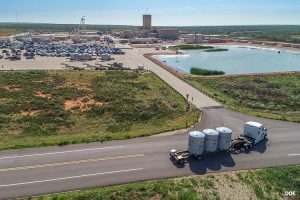 “A couple of years ago, I was asked to mediate a dispute between the U.S. Department of Energy (DOE) and the New Mexico Environment Department (NMED) concerning the renewal of a required state permit for DOE’s Waste Isolation Pilot Plant (WIPP), the nation’s only deep underground nuclear waste storage facility, located outside of Carlsbad, New Mexico. I thought I could help the two government entities but quickly came to realize that under the mediation procedures followed by New Mexico, the mediation would also involve citizen groups whose ultimate concurrence was essential to any complete resolution. This was entirely new to me.
“A couple of years ago, I was asked to mediate a dispute between the U.S. Department of Energy (DOE) and the New Mexico Environment Department (NMED) concerning the renewal of a required state permit for DOE’s Waste Isolation Pilot Plant (WIPP), the nation’s only deep underground nuclear waste storage facility, located outside of Carlsbad, New Mexico. I thought I could help the two government entities but quickly came to realize that under the mediation procedures followed by New Mexico, the mediation would also involve citizen groups whose ultimate concurrence was essential to any complete resolution. This was entirely new to me.
“In this case, there were seven such citizen groups entitled to participate and representing a variety of points of view. There was one group representing some of the government and business leaders of the town of Carlsbad who favored permit renewal on terms ensuring the continued long-term operation of WIPP. There were six groups expressing a variety of concerns about nuclear waste coming to New Mexico. They sought a more restrictive permit.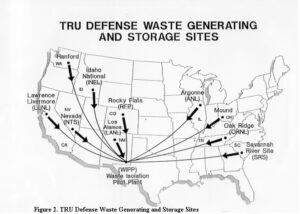
“To my astonishment, over the course of four full days, we worked through the multitude of issues and came to complete agreement. Something magical had happened. Thanks to the goodwill of the DOE and its contractor, the remarkable daily attendance and attentiveness of the NMED Secretary and the measured and well-informed way in which the various citizen groups made their points, we were able to find consensus and craft permit language that was acceptable to everyone.
“For me, as a former judge and mediator, the experience was thrilling. It was an experience of participatory democracy in action that made me proud of our fellow citizens and our government. Three aspects of the experience stand out. First, everyone in the room had taken responsibility for the way in which our nation’s only deep underground nuclear storage facility would be operated for the next 10 years. The citizen participants were not just making suggestions; they were assuming many of the attributes of decision makers. Second, all participants were advocating, compromising, and collaborating on behalf of what they saw as the public interest. These are the essential skills of democracy—the civic virtues so central to the Founders’ vision of what would make democracy work in America—and they require practice. Finally, over four days around a table, the citizens were able to take the measure of the DOE and NMED representatives. They came to realize, as I did, that these public servants, as well as the DOE contractor, were very well-informed, experienced, and intentioned. The government representatives had a similar experience of coming to appreciate the citizen questions and points of view. A government that relies on trust needs this kind of interaction to maintain that trust.
“It seems our democracy would be strengthened if we could extend the benefits of this kind of participatory structure to other areas of our legal and regulatory systems.”
“In Democracy in America, Alexis de Tocqueville made some of these points in reference to the jury trial in civil cases. He emphasized the importance of the civil jury trial as a free “public school” [https://contextus.org/Tocqueville,_Democracy_in_America_(1835),_Book_I,_Chapter_XVI_Causes_Mitigating_Tyranny_In_The_United_States_(Part_II).13?ven=Gutenberg&lang=en]  educating jurors in the democratic virtues and skills and teaching them to assume responsibility. In the same vein, every trial judge I know would attest to the importance of the jury experience for building confidence in the courts. After a trial, judges often hear words of gratitude from jurors who are deeply impressed by the legal process and are honored to have participated despite their initial dismay at being called to jury service. Sadly, the number of jury trials has diminished, particularly in federal court. Reversing that trend is a worthy goal, particularly for a branch of government that depends so heavily on public confidence.
educating jurors in the democratic virtues and skills and teaching them to assume responsibility. In the same vein, every trial judge I know would attest to the importance of the jury experience for building confidence in the courts. After a trial, judges often hear words of gratitude from jurors who are deeply impressed by the legal process and are honored to have participated despite their initial dismay at being called to jury service. Sadly, the number of jury trials has diminished, particularly in federal court. Reversing that trend is a worthy goal, particularly for a branch of government that depends so heavily on public confidence.
“As a final reflection: any persons involved as litigants will have an experience of the legal system. The experience can advance their sense of agency and participation, their ability to disagree civilly, and their trust in the courts. But how can these objectives be obtained when so many Americans cannot afford a lawyer? We can do so much better to provide understanding of and access to our justice system.”
The six New Mexico based non-governmental organizations were Citizens for Alternatives to Radioactive Dumping (CARD), Concerned Citizens for Nuclear Safety (CCNS), Conservation Voters New Mexico (CVNM), Nuclear Watch New Mexico, Southwest Alliance for a Safe Future (SAFE), and Southwest Research and Information Center (SRIC). The individual was Steve Zappe, a grandfather and former NMED WIPP Program Manager.
“A House of Dynamite” New Netflix Nuclear Catastrophe Film: Fiction, for Now
The reviews are rolling in for “A House of Dynamite,” which premiered in Europe earlier this month before coming to the U.S. on October 10th, with a full Netflix release scheduled for the 24th. Here’s the trailer, and see the schedule for Santa Fe theater showings here:
This Week! Santa Fe Theater Screenings for the Film “A House of Dynamite”
I attended one of these screenings last night, and I’ll let the professional critic reviews give the gist:
The Kathryn Bigelow thriller looks at what might happen if a ballistic missile were headed to the U.S. The director hopes the movie will start a conversation. New York Times: At Venice, ‘A House of Dynamite’ Is Scarier Than Most Horror Films
“The Netflix thriller captures from multiple perspectives the White House response to an unattributed missile launch headed for a major U.S. city in the harrowing 20 minutes until projected impact…”An unrelenting chokehold thriller so controlled, kinetic and unsettlingly immersive that you stagger out at the end of it wondering if the world will still be intact.” ‘A House of Dynamite’ Review: Idris Elba and Rebecca Ferguson in Kathryn Bigelow’s Precision-Tooled, Viscerally Unsettling Nail-Biter
“Told from the perspective of soldiers at a remote Alaskan missile base, staffers in the White House situation room, military officials at US Central Command (CENTCOM), and the president of the United States, the film weaves an overlapping timeline to show how the United States would respond to a missile attack…The film doesn’t want viewers to ask themselves how to thwart a nuclear attack on the United States. Rather, it wants the viewer to question the value of having nuclear weapons at all. ‘None of this makes sense,’ the President (Idris Elba) bemoans, ‘Making all these bombs and all these plans.'”
“A House of Dynamite is a terrifying examination of how terribly wrong things can go even with highly competent people in charge…But that’s also not necessarily the world we’re living in…The film shows why the worst can happen, even when competent, well-meaning people are trying to do the right thing.
But what if competence and decency are in short supply?” A House of Dynamite: Bigelow’s latest thriller shows why nuclear bombs are only part of the danger
This film left me reeling with tension and anxiety and exactly as the Times article titles it, is scarier than most horror films. Unlike ‘Oppenheimer,’ which largely glorified the invention of the atomic weapon, ‘A House of Dynamite’ makes it impossible to ignore the threat that nuclear weapons pose to our world. Working backwards from perspectives, and focused on how we can actually improve our odds of keeping this story a fictional one, here is what struck me most about this film:
-
-
Only one person decides what happens. But the real threat isn’t one reckless leader — it’s a reckless system. The final segment of the film features the “nuclear football” heavily, a briefcase containing launch procedures and options. In the United States, the president holds the sole and absolute authority to order the use of nuclear weapons. In the film, there are many voices in the President’s ear, but two primary perspectives quickly emerge after the defense fails and the ICBM remains inbound to its U.S. target: “One side advocates a retaliatory strike; the other, nothing. ‘It’s surrender or suicide,’ one adviser tells the President,” – thebulletin.org. The military aide carrying the nuclear football is tasked with providing the President the list of options if retaliation is chosen. An absolute must-read, Daniel Ellsberg’s book “The Doomsday Machine” breaks down many of the themes in the film with pure and terrifyingly honest account of Cold War-era nuclear strategy. In terms of launch authority, he describes how the inherent instability of the delegated command structure of the nuclear apparatus makes accidental or unwanted war an ever-present danger.
-
LANL tritium containers to head to Texas after last treatment
Four flanged tritium waste containers have been depressurized and transported to Los Alamos National Laboratory’s Weapons Engineering Tritium Facility, where they will be treated further before heading out-of-state for disposal.
By Alaina Mencinger amencinger@sfnewmexican.com | October 15, 2025 santafenewmexican.com
The containers’ final destination is Waste Control Specialists, a West Texas facility that handles the storage and disposal of radioactive waste.
The more than 1,300-acre facility in Andrews County is located on an approximately 14,000 acre property, which is sited on a thick clay formation which the company describes as “nearly impermeable.”
New documents have been added to the Los Alamos Legacy Cleanup Contract Electronic Public Reading Room.
All legacy cleanup documents required to be posted after April 30, 2018, are available on the site linked above.
For legacy cleanup documents that were posted prior to April 30, 2018, please visit the LANL electronic public reading room.
- Review, Notice of Completion of Off-Site Waste Shipments for Final Disposal, Activities 3.1.5, 3.1.8, and 3.3.4, Compliance Plan, Site Treatment Plan, Federal Facility Compliance Order Los Alamos National Laboratory [July 31, Aug. 21, 2025]
https://ext.em-la.doe.gov/GovFTPFiles/api/GetFiles/GetFile?fileName=EMID-703933_NMED_Review_STP_Shpmt_Jul_31_Aug_21_101525.pdf
Strong Political and Public Opposition Means Consolidated Interim Storage Facility (CISF) in NM “Impossible in the Near Future”
NEW UPDATE OCTOBER 10, 2025:
Holtec abandons plan to build New Mexico storage facility for spent nuclear fuel
This is excellent news. The Governor and state legislature (specifically Senator Jeff Steinborn and Representative McQueen) are to be commended for not allowing New Mexico to become the nation’s dumping ground for highly radioactive commercial spent fuel rods, especially when the Land of Enchantment has never had its own nuclear energy plant. Hard work from many New Mexicans made this happen.
So-called “interim” storage would never be interim when the federal government has failed for more than four decades to find a permanent repository for these lethal wastes. This also shows how hollow all the hype is about the claimed renaissance of nuclear power, when on the front end the industry can’t survive without taxpayer handouts, and on the back end can’t solve its radioactive waste problem.
Holtec’s quote that “New Mexico’s acquiescence is necessary” for interim storage to go forward is interesting, implying that we have to surrender as the nuclear colony that we are. Well, guess what, we didn’t surrender, and I predict you’ll see more of this. Moreover, whether you’re pro-nuclear or anti-nuclear, Holtec is an ethically questionable company, which is why the attorneys general of New Jersey and Massachusetts have sued it.
Adiós and good riddance, Holtec!
New York Times: Tax Break Scandal Leads to $5 Million Fine for N.J. Energy Company
SEE MORE:
Nuclear Weapons Issues & The Accelerating Arms Race: September 2025
Nuclear Weapons Update:
Putin has offered Trump a one-year extension of the numerical cap on strategic nuclear weapons in the new Strategic Arms Reduction Treaty which is 1,550 warheads (however, B52s are counted as one warhead while they can carry a dozen). New START expires in February 2026, which will be the first time the world will be without any nuclear arms control treaties since the mid-1970s. Trump has said it sounded like a good idea.
Note: New START ratification in 2010 provided the opportunity for Republicans in the Senate to attach the condition of $88 billion for nuclear weapons “modernization” that has since metastasized to ~$2 trillion. Nuclear disarmament must be prioritized as the ultimate goal over simply continued arms control.
A mere extension of the numerical cap would not involve Congressional ratification. The extension of New START’s numerical cap is in part to allow for a year in which to begin negotiations for a treaty replacement.
Plutonium Pit Production:
A draft plutonium pit production programmatic environmental impact statement is expected to be released next year in early 2026.
Accelerating Arms Race:
Is North Korea set to become world’s ‘fourth ICBM power’ after missile breakthrough? | Park Chan-kyong | South China Morning Post | September 11, 2025
A new era in North Korea’s missile programme may be dawning, as analysts warn of an imminent test launch of an intercontinental ballistic missile capable of carrying multiple warheads to the US mainland. Fresh from his appearance at China’s Victory Day parade in Beijing last week, North Korean leader Kim Jong-un personally oversaw the trial of a lighter, more robust solid-fuel ICBM engine, state media reported on Tuesday, touting the achievement as a “strategic” breakthrough.
Saudi Arabia signs a mutual defense pact with nuclear-armed Pakistan after Israel’s attack on Qatar | MUNIR AHMED & JON GAMBRELL | AP NEWS | September 18, 2025
DUBAI, United Arab Emirates (AP) — Pakistan’s defense minister says his nation’s nuclear program “will be made available” to Saudi Arabia if needed under the countries’ new defense pact, marking the first specific acknowledgment that Islamabad had put the kingdom under its nuclear umbrella.
Defense Minister Khawaja Mohammad Asif’s comments underline the importance of the pact struck this week between Pakistan and Saudi Arabia, which have had military ties for decades.
The move is seen by analysts as a signal to Israel, long believed to be the Middle East’s only nuclear-armed nation. It comes after Israel’s attack targeting Hamas leaders in Qatar last week killed six people and sparked new concerns among Gulf Arab nations about their safety as the Israel-Hamas war devastated the Gaza Strip and set the region on edge.
Russia suspected of helping North Korea build nuclear submarines, Seoul investigating | Park Chan-kyong | South China Morning Post | September 18, 2025
South Korea is investigating reports that Russia has supplied North Korea with nuclear submarine reactor modules, a move analysts see as highly plausible and one that could mark a breakthrough in Pyongyang’s decades-long push for a nuclear-powered navy… At the 8th Party Congress in January 2021, North Korea declared five core defence goals, including the development of nuclear-powered submarines and submarine-launched strategic nuclear weapons.
China Hardens Military Stance Against U.S. With Nuclear Weapons and Tough Talk | Brian Spegele | The Wall Street Journal| September 18, 2025
China played down its rapidly rising military might for years. In the past few weeks, Beijing has broadcast a steady drumbeat of firepower displays and muscular rhetoric, carrying an unmistakable warning for the U.S… Part of China’s confidence stems from the rapid growth of its firepower. The Pentagon estimates that China’s stockpile of nuclear warheads has more than doubled since 2020, alongside a growing array of options to launch those weapons, from mobile ground-launch systems to increasingly stealthy submarines.
Holtec Pulls Out of New Mexico Spent Nuclear Fuel Interim Storage Project
Holtec International has confirmed it is canceling plans to build a consolidated interim storage facility for spent nuclear fuel in southeastern New Mexico.
By Radwaste Solutions | October 9, 2025 ans.org
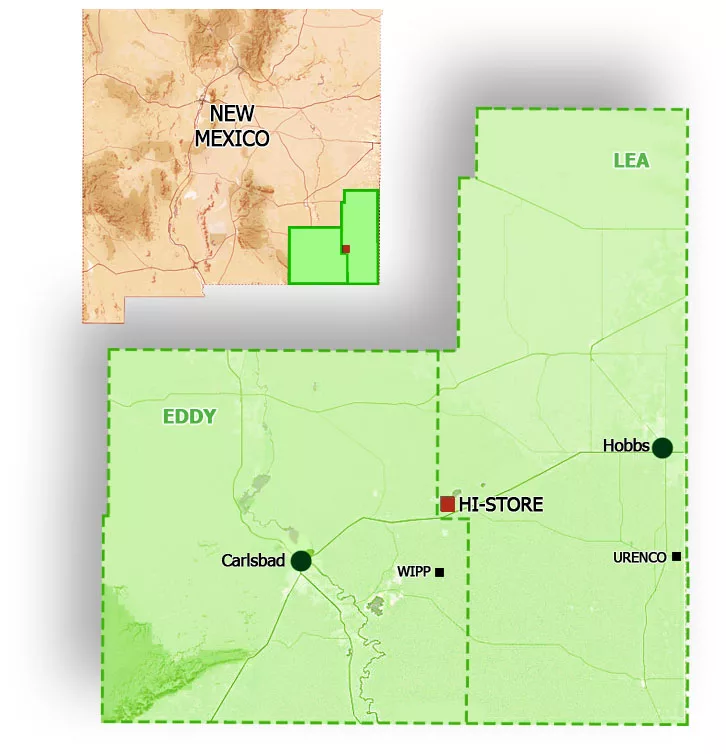
Named the HI-STORE CISF, the facility would have stored up to 10,000 canisters of commercial SNF on land owned by the Eddy-Lea Energy Alliance (ELEA) near the towns of Carlsbad and Hobbs.
“After discussions with our longtime partner in the HI-STORE project, the Eddy-Lea Energy Alliance, and due to the untenable path forward for used fuel storage in New Mexico, we mutually agreed upon canceling the agreement. This allows for ELEA to work to redevelop the property in a manner that fits their needs and allows Holtec to work with other states who are amenable to used fuel storage based on the recent DOE work on public education and outreach,” Holtec said in a statement (emphasis added).
Following the U.S. Supreme Court’s June ruling in NRC v. Texas, which found that petitioners did not have standing to challenge the Nuclear Regulatory Commission’s licensing of Interim Storage Partners’ CISF in Texas, Holtec said it expected to have its HI-STORE CISF license reinstated, allowing the company to move forward with the project. Holtec and ISP’s NRC licenses were vacated by the 5th Circuit Court of Appeals in a 2023 ruling.
Despite the court’s decision, New Mexico Gov. Michelle Lujan Grisham said she remained committed to preventing the HI-STORE CISF from being built. In 2023, New Mexico passed a bill barring the storage and disposal of high-level radioactive waste in New Mexico without the state’s explicit consent.
The AI Doomsday Machine Is Closer to Reality Than You Think
“Most troubling to experts on AI and nuclear weapons is that it’s getting harder and harder to keep decisions about targeting and escalation for nuclear weapons separate from decisions about conventional weapons.”
“There is no standing guidance, as far as we can tell, inside the Pentagon on whether and how AI should or should not be integrated into nuclear command and control and communications,” says Jon Wolfsthal, director of global risk at the Federation of American Scientists.
By Michael Hirsh | September 2, 2025 politico.com
Jacquelyn Schneider saw a disturbing pattern, and she didn’t know what to make of it.
Last year Schneider, director of the Hoover Wargaming and Crisis Simulation Initiative at Stanford University, began experimenting with war games that gave the latest generation of artificial intelligence the role of strategic decision-makers. In the games, five off-the-shelf large language models or LLMs — OpenAI’s GPT-3.5, GPT-4, and GPT-4-Base; Anthropic’s Claude 2; and Meta’s Llama-2 Chat — were confronted with fictional crisis situations that resembled Russia’s invasion of Ukraine or China’s threat to Taiwan.
Director Kathryn Bigelow is Sounding the Nuclear Alarm – Washington Post New Review
“A House of Dynamite” asks: How would the White House respond in the face of a nuclear attack?
By Max Boot | October 2, 2025 washingtonpost.com
VIEW MORE: “A House Of Dynamite” Q&A w/ Director Kathryn Bigelow, Tracy Letts, Jared Harris, And More At New York Film Fest —
80th Commemorations of Ban the Bomb – Trinity, Hiroshima & Nagasaki Remembrances in New Mexico
Exchange Monitor: DNFSB makes agency fixes, but needs members, GAO finds
The Defense Nuclear Facilities Safety Board (DNFSB) has tackled all but a few third-party recommendations to improve its culture over the past decade but suffers from a depleted board, according to a new report.
By ExchangeMonitor | September 5, 2025 santafenewmexican.com
Progress is tough with the five-person board probably…
China Hardens Military Stance Against U.S. With Nuclear Weapons and Tough Talk
Xi positions Beijing as powerful center of new global order as security forum convenes in capital
By Brian Spegele | September 18, 2025 wsj.com
BEIJING—China played down its rapidly rising military might for years. In the past few weeks, Beijing has broadcast a steady drumbeat of firepower displays and muscular rhetoric, carrying an unmistakable warning for the U.S….
Saudi Arabia signs a mutual defense pact with nuclear-armed Pakistan after Israel’s attack on Qatar
While not specifically discussing the bomb, the agreement states “any aggression against either country shall be considered an aggression against both,” according to statements issued by both Pakistan’s Foreign Affairs Ministry and the state-run Saudi Press Agency.
By MUNIR AHMED and JON GAMBRELL | September 18, 2025 apnews.com
ISLAMABAD (AP) — Saudi Arabia and nuclear-armed Pakistan have signed a mutual defense pact that defines any attack on either nation as an attack on both — a key accord in the wake of Israel’s strike on Qatar last week.
The kingdom has long had close economic, religious and security ties to Pakistan, including reportedly providing funding for Islamabad’s nuclear weapons program as it developed. Analysts — and Pakistani diplomats in at least one case — have suggested over the years that Saudi Arabia could be included under Islamabad’s nuclear umbrella, particularly as tensions have risen over Iran’s atomic program.
COMMUNITIES FOR CLEAN WATER: LANL Radioactive Tritium Venting Fails to Provide Transparency, Assurance, and Respect for Local Communities
FOR IMMEDIATE RELEASE: September 18, 2025
Santa Fe, NM — As NNSA and LANL continue operations to depressurize Flanged Tritium Waste Containers, Communities for Clean Water (CCW) calls out federal agencies for issuing vague assurances instead of transparent, verifiable data — and for dismissing community concerns with contradictory and incomplete statements that disregard what independent experts have found, the Department of Energy’s (DOE) own legal obligations, and the New Mexico Environment Department’s (NMED) acknowledgment that LANL has a long record of compliance failures.
“How can our communities be expected to trust LANL when they won’t give us access to the raw, real-time monitoring data – independently verified by the EPA,” asks Joni Arends with Concerned Citizens for Nuclear Safety. “Without this transparency, LANL is continuing a legacy of empty assurances, not accountability.”
Key Concerns:
-
Lack of real-time transparency – Since Friday (Sept. 12), the public has been forced to rely on NMED’s Facebook page for piecemeal updates. While LANL’s website provides very brief daily summaries, no near-real-time monitoring dashboard from DOE, NNSA, or LANL has been made available.
-
Vague assurances, not real information – NNSA’s updates claim “no tritium was released” while simultaneously telling the public to expect “very low levels of tritium” for subsequent venting. Without numbers, monitoring data, or detection thresholds, these phrases do not provide reassurance.
-
Weather risks – LANL has not disclosed thresholds for wind, rain, or humidity that would postpone venting. Communities watch weather shifts in real time but are left in the dark about how safety decisions are being made.
-
Dismissal of public health concerns – When asked for plain-language guidance that NMED stated LANL would provide, LANL responded only with “no offsite impact anticipated.” This is not meaningful and reassuring guidance, it’s a blanket dismissal that disregards independent expert findings and fails to meet DOE’s obligations to protect vulnerable populations.
-
Ignoring daily lifeways – Avoiding Pueblo Feast Days is not enough. This is harvest season, when outdoor cultural events, youth programs, and farming are in full swing. LANL’s scheduling continues to disregard these realities.
Unanswered Questions
Independent experts and community advocates have raised critical unanswered questions:
-
Unclear “depressurization” – LANL said “no internal pressure was found” in a container, but also claimed it was “depressurized.” If no pressure existed, what was released?
-
Unanswered helium questions – NMED stated helium was released, but LANL has not explained its origin. Was it introduced at sealing of the outer container, or a decay product of tritium?
-
Monitoring limits undisclosed – LANL has not disclosed the detection limits of its monitoring equipment. Readings “indistinguishable from zero” could still mask releases.
DOE NNSA Gives Misleading Statements on Native America Calling
On a recent Native America Calling program, DOE NNSA’s Los Alamos Field Office Deputy Director Pat Moss compared LANL venting to global natural tritium stocks. Independent expert Dr. Arjun Makhijani pointed out this comparison as misleading: “The problem is not global background, but local contamination. If venting occurs in rain and calm winds, local rainfall could exceed U.S. drinking water standards by hundreds to thousands of times.”
In their most recent public meeting, LANL admitted that infants could receive three times the radiation dose as adults. During the interview, Dr. Makhijani pressed this point – if adults are modeled at 6 mrem, that means infants could be at 18 mrem, nearly double the EPA’s 10 mrem compliance limit. Instead of addressing this directly, Mr. Moss provided a stock line, “We will be compliant with the regulatorily imposed release threshold and will be doing the calculations per the regulation.”
That is exactly the problem – hiding behind regulatory caps while ignoring clear evidence that infants, our most vulnerable, face exposures above legal limits.
DOE NNSA also pointed to the Defense Nuclear Facilities Safety Board (DNFSB) – an independent federal oversight body created by Congress – as if it had declared the tritium venting operation as “fully protective of the public”. That is misleading. First, the DNFSB has been operating without a quorum for months, limiting its ability to issue independent recommendations. Second, what the Board staff said in its July 2025 presentation was that the overall nuclear safety risk to the public is low if DOE’s proposed controls are followed. The DNFSB has also flagged ongoing safety concerns at LANL including deficiencies in Area G’s safety analysis and risk to workers.
First of four containers of tritium waste at LANL has been vented
The first of four flanged tritium waste containers awaiting removal from Los Alamos National Laboratory has been vented, the New Mexico Environment Department announced Tuesday afternoon.
By Alaina Mencinger amencinger@sfnewmexican.com | September 16, 2025 santafenewmexican.com
The container can now be moved for treatment at LANL and then, eventually, to an off-site disposal area.
No internal pressure was found in the first container, according to the National Nuclear Security Administration, suggesting the inner containers in the flanged tritium waste container hadn’t leaked. Air monitoring did not show an increase of tritium beyond background levels, the federal agency wrote.
No tritium emissions were released, the Environment Department wrote in its Tuesday post on X, formerly Twitter. Both the state agency and the U.S. Environmental Protection Agency are monitoring the process.
The depressurization of the containers is set to continue at 7 a.m. Wednesday, although the NNSA noted the schedule is subject to change due to weather. The four containers will be vented one at a time over an estimated two-week period.
*The featured image differs from the article photo due to usage rights.
New Mexicans Can Save the DNFSB; Contact Our Senators Today
From our friends at Concerned Citizens for Nuclear Safety:
The independent Defense Nuclear Facilities Safety Board has been dwindling from a five-member board to one member and may disappear if we, the People, do not raise our voices to support its essential nuclear safety work. The Safety Board needs at least two new members. And that needs to get done by Saturday, October 18th. https://www.dnfsb.gov/about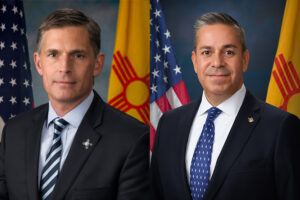
New Mexico U.S. Senators Heinrich and Lujan have key roles to play to ensure the Safety Board’s work continues unimpeded. https://www.heinrich.senate.gov/ and https://www.lujan.senate.gov/ Our voices of support are essential to ensure communities continue to receive the essential services of the Safety Board and its staff.
Right now members of the Safety Board’s staff are monitoring the venting of radioactive tritium from Area G at Los Alamos National Laboratory (LANL). Their expertise in the field of nuclear safety and their demonstrated competence and knowledge relevant to their independent investigative and oversight functions are an essential part of the process. They will be part of the follow-up once the venting of the four flanged tritium waste containers is completed. https://tewawomenunited.org/?s=tritium, https://www.ccwnewmexico.org/tritium, https://nuclearactive.org/
Not only does the Safety Board have staff at LANL, but also at Sandia National Laboratories in Albuquerque and at the Waste Isolation Pilot Plant, the burial site for plutonium contaminated nuclear weapons waste, near Carlsbad. https://ananuclear.org/facilities/
Russia suspected of helping North Korea build nuclear submarines, Seoul investigating
Analysts said such a technology transfer was plausible given Pyongyang’s support for Russia’s ongoing war in Ukraine
By Park Chan-kyong | September 18, 2025 scmp.com
South Korea is investigating reports that Russia has supplied North Korea with nuclear submarine reactor modules, a move analysts see as highly plausible and one that could mark a breakthrough in Pyongyang’s decades-long push for a nuclear powered navy…
Holy See tells nations at UN to end threat of nuclear weapons, even as deterrence
Amid a global arms race, ending the threat of nuclear war — and even the testing of nuclear weapons — is imperative, said the Holy See’s diplomat to the United Nations.
By Gina Christian, OSV News | September 8, 2025 catholicreview.org
Archbishop Gabriele G. Caccia, the Holy See’s U.N. permanent observer, shared his thoughts in a statement he delivered Sept. 4 at U.N. headquarters in New York, during the General Assembly High-level Plenary Meeting to Commemorate and Promote the International Day Against Nuclear Tests, observed that same day.
“The pursuit of a world free of nuclear weapons is not only a matter of strategic and vital necessity, but also a profound moral responsibility,” Archbishop Caccia in his remarks.
He pointed to the introduction of nuclear weapons — first detonated by the U.S. in 1945 over the Japanese cities of Hiroshima and Nagasaki, killing an estimated 110,000 to 210,000 people, during World War II — as unveiling to the world “an unprecedented destructive force.”
Historic peace vigil partially dismantled after Trump orders: ‘Take it down’
Law enforcement officials on Sunday removed parts of the White House Peace Vigil, which has sat just outside the White House for decades.
By Marissa J. Lang, The Washington Post | September 8, 2025 washingtonpost.com
But over the past week, it faced a new threat as Trump turned his attention to the vigil and federal officers picked apart the structure that shields protesters and their signs from the elements. The vigil is maintained by a rotating cast of volunteers who keep the protest going 24 hours a day, seven days a week.
On Friday, Brian Glenn, a correspondent for the conservative network Real America’s Voice, told the president during a gathering with reporters that there was “a blue tent” in front of the White House that was “an eyesore.” Trump initially said he was unaware of it, but he then quickly ordered its removal.
Photo by Sig. Chiocciola, Creative Commons: The White House Peace Vigil on March 30, 2025 staffed by volunteers, Philipos Melaku-Bello (left) and Joe Brown (right).
For 80 years, nuclear weapons have been the unused threat
Amid a global arms race, ending the threat of nuclear war — and even the testing of nuclear weapons — is imperative, said the Holy See’s diplomat to the United Nations.
By Matt Kelly, mkelly@virginia.edu, September 3, 2025 news.virginia.edu
In the 80 years since World War II, which ended with the use of two atomic bombs, the world has maintained a tenuous relationship with nuclear weapons.
Philip Potter, professor of public policy at the University of Virginia’s Frank Batten School of Leadership and Public Policy and director of the National Security Data and Policy Institute, said he worries about the current delicate nuclear balance.
“Eighty years of non-use is the product of both good diplomacy and a recognition of the potential consequences,” Potter said. “The fearsome power of nuclear weapons causes countries pause before they use them, but a great deal of work has also gone into nonproliferation and the management of crises to keep them away from the nuclear brink. In some ways the dynamics of the Cold War made managing the potential for nuclear confrontation easier.”
It’s a very different strategic scenario now, where there are nine nuclear powers and less capacity to manage them.
A House of Dynamite review – Kathryn Bigelow’s nuclear endgame thriller is a terrifying, white-knuckle comeback
★★★★★: Amid a global arms race, ending the threat of nuclear war — and even the testing of nuclear weapons — is imperative, said the Holy See’s diplomat to the United Nations.
By Peter Bradshaw, The Guardian | September 2, 2025 theguardian.com
Kathryn Bigelow has reopened the subject that we all tacitly agree not to discuss or imagine, in the movies or anywhere else: the subject of an actual nuclear strike. It’s the subject which tests narrative forms and thinkability levels.
Maybe this is why we prefer to see it as something for absurdism and satire – a way of not staring into the sun – to remember Kubrick’s (brilliant) black comedy Dr Strangelove, with no fighting in the war room etc, rather than Lumet’s deadly serious Fail Safe.
NEW UPDATED INFORMATION: MUST READ!!! PROVIDED BY: THE TULAROSA BASIN DOWNWINDERS CONSORTIUM — WHAT TO KNOW ABOUT THE COMPENSATION AVAILABLE THROUGH THE RECA PROGRAM
 SEEKING JUSTICE FOR THE UNKNOWING, UNWILLING, AND UNCOMPENSATED INNOCENT VICTIMS OF THE JULY 16, 1945 TRINITY BOMB
SEEKING JUSTICE FOR THE UNKNOWING, UNWILLING, AND UNCOMPENSATED INNOCENT VICTIMS OF THE JULY 16, 1945 TRINITY BOMB
A Message From Tina
The DOJ is now accepting claims and has provided guidance on the claims process. They will only accept mail in claims at this time. They have indicated that an electronic process will be implemented by the end of the year. For more information you can go to the DOJ website at: https://www.justice.gov/civil/reca
Please be careful when supplying documentation via the regular mail. If you decide to file this way you may want to send the documents via certified mail. Once the electronic process begins it will be easier to assure that your documents are safe and being handled properly with little to no risk.
There are organizations/attorneys who are soliciting people to file claims with them. They use all sorts of tactics to get people to believe their services are necessary and often guarantee results. Please be aware that if an entity files a RECA claim on your behalf they will charge a fee. They receive the check, deduct their fee, and then pay you.
There will be Radiation Exposure Screening and Education Program (RESEP) clinics in our State that will assist people with claims. The claims process is not necessarily difficult and we’ll be training people to assist with the application process when needed. We’ll also be looking to government agencies to cooperate in locating necessary documentation for the application process. PLEASE DO NOT TURN OVER YOUR RECORDS TO ANYONE THAT YOU ARE NOT SURE ABOUT. You can remain updated about the application process, the training we’re going to organize or other questions you might have by going to our website at: www.trinitydownwinders.com
What does the expansion of RECA do?
The Radiation Exposure Compensation Act program has been re-authorized and extended through Dec 31, 2028 but the application deadline is Dec 31, 2027.
Downwinders who lived in New Mexico for one year from 1944 through Nov. 1962 will be eligible and family members can apply on behalf of a deceased loved one.
There are 19 cancers that are covered by the expansion.
The cancers covered are:
Leukemia (except chronic lymphocytic Leukemia); Lymphoma (other than Hodgkins); Primary cancers of the Thyroid, Breast, Esophagus, Stomach, Pharynx, Small Intestine, Pancreas, Bile Duct, Gall Bladder, Salivary Gland, Urinary, Bladder, Brain, Colon, Ovary, Liver (unless cirrhosis/Hepatitis B present), and Lung.
Compensation for downwinders will be increased to $100,000 and Downwind coverage is expanded to cover the entire state of New Mexico
Coverage for uranium miners and workers would be expanded:
To workers through Dec 31, 1990
To core drillers and remediation workers
To cover additional kidney disease for uranium miners
To allow for combined work histories
What does this mean?
This is the biggest expansion of RECA in the history of the program and it wouldn’t have happened without the tireless advocacy of Senator Lujan, Representative Leger Fernandez, Senator Heinrich, Representative Stansbury and Representative Vasquez.
While it is a significant win, it still leaves out many impacted communities, including the parts of Nevada and Arizona not previously covered, along with Montana, Colorado, and Guam.
The 2-year extension will likely not be adequate time to get all the people in New Mexico who qualify enrolled and this bill does not have health care benefits for Downwinders. We will continue to fight for a longer extension and the addition of healthcare benefits. This is an important first step because it reinstates the program keeping it operational so people can continue to apply for benefits and get the help they need, and it shows that expansion is possible and provides an opportunity to address concerns raised about the cost of expansion.
We are grateful for the win and consider this a big step in the right direction. We look forward to the day that claims are successfully filed and the people of New Mexico begin to see the benefit of the expansion of RECA. Stay tuned for updates and many thanks to all of you who have stood together with us in this fight!Continue reading
Threads cast and crew suffered ‘trauma’ after film
The creators of a documentary about the making of nuclear apocalypse film Threads say many of the cast and crew had “suffered with the trauma of being involved”.
By Chloe Aslett, BBC News | August 29, 2025 bbc.com
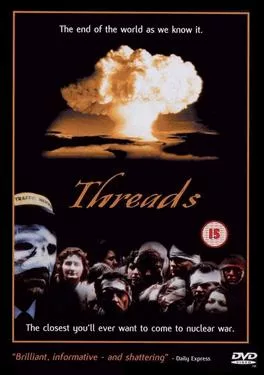
Threads, which tracks the aftermath of a nuclear attack on Sheffield, was first screened on the BBC on 23 September 1984 and fast became a cult classic.
Now filmmakers Craig Ian Mann and Rob Nevitt have spoken to more than 50 people involved in the making of the film for their documentary Survivors: The Spectre of Threads.
Mr Mann said: “[Threads] is a film that more than any I can think of everybody who worked on it it has impacted their lives in some way or another. Sometimes very positively and sometimes somewhat negatively.”
“There are people who have suffered the trauma of having been in and seen Threads,” he told BBC Radio Sheffield.
“There’s one participant in the documentary who has become a Doomsday prepper.
“He lives in America and has a bunker and canned food and weapons and he is prepared for the end of the world at any moment and that’s because he was in and saw Threads.”
Trump wants to stop nuclear proliferation. STRATCOM could play a major role.
Henry Sokolski, executive director of the Nonproliferation Policy Education Center, argues that the US needs to carry a new “big stick.”
By Henry Sokolski, Breaking Defense | August 29, 2025 breakingdefense.com

Last Monday, President Donald Trump pronounced, “We can’t let nuclear weapons proliferate.” Two days later, Secretary of State Rubio met with International Atomic Energy Agency (IAEA) Director General Rafael Mariano Grossi and recommitted the United States to preventing the proliferation of nuclear weapons.
After America’s bombing of Iran’s suspect nuclear sites, there’s cause to take these commitments seriously, but only if it’s more than a one off.
Emphasizing consistency is essential. Historically, America has backed nonproliferation in fits and starts. Under Presidents Gerald Ford and Jimmy Carter, the United States opposed the recycling of plutonium for commercial use because it was too close to bombmaking. It blocked reprocessing activities in South Korea, Taiwan, and Brazil.
Full Event Recording: Press Conference & Commemoration – Hiroshima Atomic Bombing 80th Anniversary Event (August 6, 2025)
DOE and LANL Silence Public and Tribal Community Member Voices While Pushing Radioactive Tritium Venting
For Immediate Release: August 22, 2025
Contact: Kalyn Mae Finnell, Coordinator, Communities for Clean Water
Los Alamos, NM — This week’s so-called “public meeting” regarding Los Alamos National Laboratory’s (LANL) proposal to vent radioactive tritium emphasized the persistence of the Department of Energy (DOE) National Nuclear Security Administration (NNSA) and LANL to disregard communities concerns while prioritizing nuclear weapons projects.
In-person attendees were allotted three minutes to make statements about their concerns. Over 100 online participants—including many Pueblo community members who could not attend the meeting in Los Alamos in-person due to health, distance, or work commitments—were surprised to find that they were not permitted to provide verbal comments and restricted to submitting only one emailed question. DOE/NNSA and LANL gave no prior notice of this change. “This is not meaningful participation. It is exclusion,” said Marissa Naranjo with Honor Our Pueblo Existence.
The stakes are at an all time high. Tritium — produced in the development of nuclear weapons as triated water — is a radioactive isotope of hydrogen that travels quickly through air, water, soil, and food. When exposed to the human body, it can cause cancer, genetic damage, cross the placental barrier, and cause health impacts across generations. DOE/NNSA insists venting is the sole safe option moving forward—however, their own “independent” technical review revealed significant issues with this assertion. The review acknowledged significant deficiencies: the absence of real-time monitoring, a lack of container-specific risk analysis, and insufficient examination of safer alternatives such as filtration or storage until decay occurs. Community members are also asking: How can a review be independent when DOE managed the process, designated the reviewer, and defined the scope? This does not represent independence—it signifies a conflict of interest.
“This is the same broken pattern we’ve seen for decades,” said Joni Arends with Concerned Citizens for Nuclear Safety. “LANL creates the danger, then tells us radioactive releases are our only option. They force the public and Pueblo communities into what NMED itself has called ‘untenable situations.'”
Local community leaders also noted that DOE has consistently overlooked reports by Tewa Women United, Communities for Clean Water, and scientific experts regarding the risks associated with tritium. These technical reports documented exposure pathways unique to Pueblo communities, including impacts on women, children, and traditional farming lifeways. By sidelining this research, DOE has once again dismissed Indigenous voices and lived experiences—further diminishing trust and perpetuating environmental racism.
“If our gathering here today is to mean anything, it must mean that in fidelity to all those whose lives were destroyed or savagely damaged on August 6, 80 years ago, we refuse to live in such a world of nuclear proliferation and risk-taking. We will resist, we will organize, we will pray, we will not cease, until the world’s nuclear arsenals have been destroyed.”
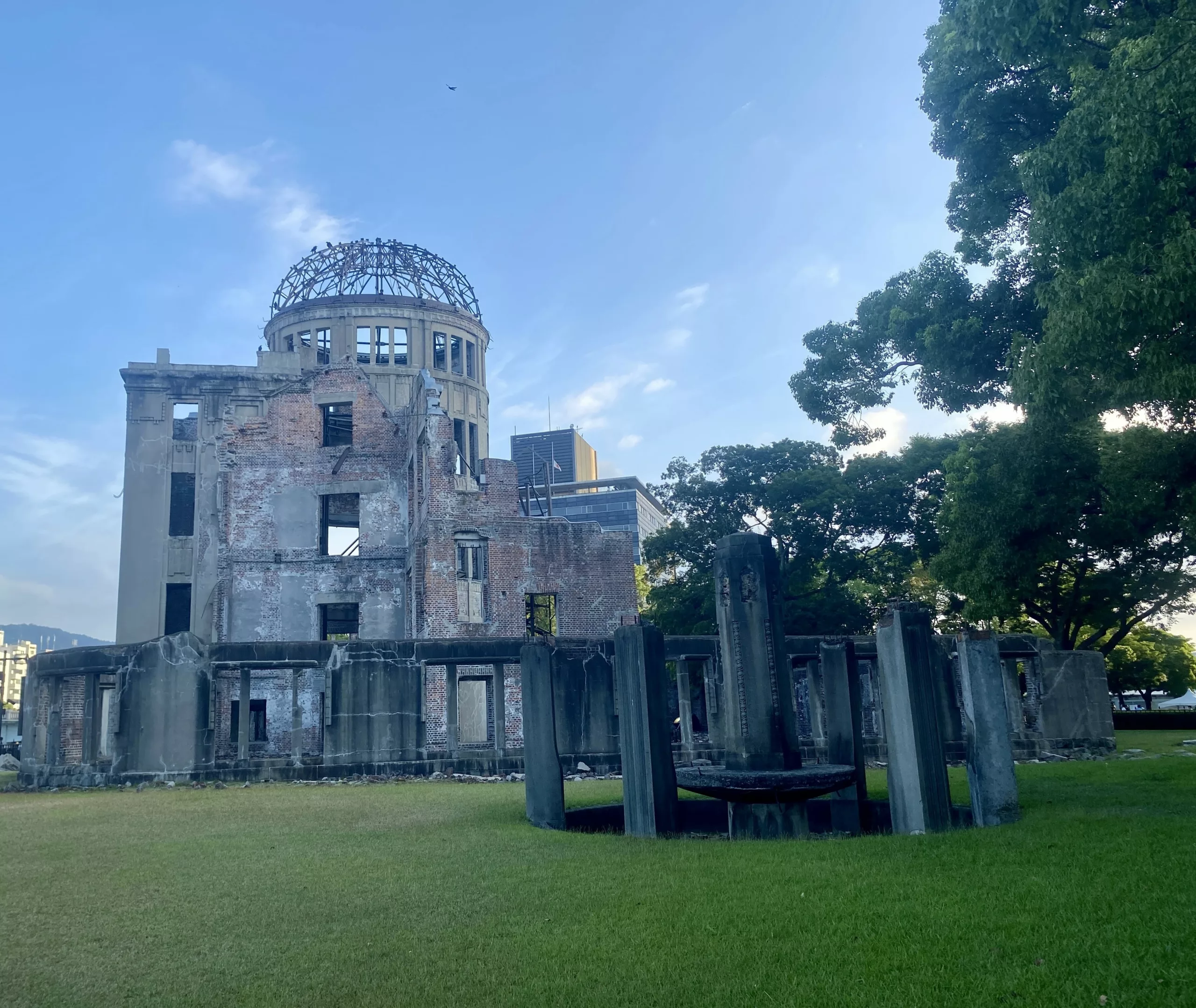 — Cardinal Bob McElroy of Washington, DC, August 5, 2025, at the World Peace Memorial Cathedral in Hiroshima, Japan.
— Cardinal Bob McElroy of Washington, DC, August 5, 2025, at the World Peace Memorial Cathedral in Hiroshima, Japan.
Nuclear Weapons Issues & The Accelerating Arms Race: August 2025
Nuclear Weapons Budget:
• NNSA’s detailed budget was finally released, the latest ever. $2.8 billion is for “plutonium modernization” (i.e., pit production) projects, of which $1.8 billion for LANL. The Lab’s nuclear weapons programs are having a full billion dollars added to them for FY 2026 (which begins this October 1) on top of the $4 billion they already have. The Lab’s $6 billion FY 2026 budget is now 84% nuclear weapons. Meanwhile cleanup and nonproliferation programs are being cut by 5% and renewable energy research completely eliminated.
• Over for the next four years the “reconciliation” bill adds another $750 million for plutonium modernization (mostly at SRS) and $1 billion “to accelerate the construction of National Nuclear Security Administration facilities.”Continue reading
August 6th U.S. Atomic Bombing of Hiroshima Commemoration in Santa Fe
Eighty Years Later, it is Beyond Time to Get Rid of Nuclear Weapons.
Last week on August 6, 2025, the 80th anniversary of the U.S. atomic bombing of Hiroshima, community members gathered at the Center for Progress and Justice on Cerrillos Road in Santa Fe to honor the solemn occasion and demand an end to the ongoing nuclear weapons harm and destruction that first began here in New Mexico.
The event was organized by Nuclear Watch New Mexico in collaboration with the Up in Arms campaign by Ben Cohen, co-founder of Ben & Jerry's, to reduce military and nuclear weapons spending, the International Campaign to Abolish Nuclear Weapons (winners of the 2017 Nobel Peace Prize), the Santa Fe Archdiocese, the Back from the Brink New Mexico Hub, and the Tularosa Basin Downwinders Consortium. It centered around a massive public art installation from Up in Arms of a towering cubic structure framed by messages on top of images of $100 bills. The structure is sized to literally hold $100 billion of those bills, respresenting what the U.S. spends every year on nuclear weapons (the total cost of nuclear weapons "modernization" is up to $2 trillion). Visible to thousands of drivers each day, the large installation pressures viewers to reckon with the scale of this cost and to imagine what else those resources could make possible. A prominent message on one of the four sides quotes the president in saying, "'We don't need to build brand new ones. We already have so many,' — Donald Trump" and below it, "His budget includes a down payment of $2 trillion of nuclear weapons." Another side reads, "The current U.S. nuclear arsenal is the equivalent of 50,00 Hiroshima explosions. One nuclear bomb killed over 100,000 people in Hiroshima."
The installation will remain on display for the foreseeable future, GO SEE IT NOW! 1420 Cerrillos Road, Santa Fe, NM 87505.
During the event, speakers Archbishop John C. Wester (by video from Japan), Tina Cordova of the Tularosa Basin Downwinders, Sophie Stroud from Nuclear Watch New Mexico, Anne Pierce-Jones from Back from the Brink, Ben Cohen representing Up in Arms, and Seth Shelden from ICAN all gave concrete steps and actions that concerned citizens can take to help promote a safer world. The speakers were presented by former Santa Fe County Commissioner Anna Hansen, who stated, “Disarmament is the only answer. I have spent my life working to end the nuclear cycle, as many have, and most of us in this room have never known a world without nuclear weapons.”
Speakers drew connections between the devastation in Hiroshima and the continued production of plutonium pits at LANL. At Los Alamos National Lab alone, five billion dollars will be poured into nuclear weapons programs in Fiscal Year 2026, starting this October. One billion dollars was added to last year’s budget, which includes a 42% increase for nuclear warheads. At the same time, nonproliferation programs are being cut, the science budget sliced in half, and funds for renewable energy zeroed out and gone completely. The push for "modernization" of the US’s nuclear arsenal is directly linked to plutonium pit production at Los Alamos, specifically expanding plutonium pit production. LANL will receive $1.7 billion in direct costs for pit production in 2026. Add in the indirect costs, and it’s roughly double that. All of this future pit production is exorbitantly expensive, yet the National Nuclear Security Administration still has no credible cost estimate for these plans.
WHAT YOU NEED TO KNOW: New plutonium pits are not needed to maintain the existing stockpile - it is all for future, new designs. And these new weapons cannot be tested because of the testing moratorium - or conversely could pressure the US to resume testing. In 2006, independent experts concluded that existing plutonium pits last at least a century. Their average age now is about 43 years. A new pit aging study is expected this year. Expansion plans should stop until then.
The U.S.’s $2 trillion “modernization” program is a plan to keep nuclear weapons forever. It is claimed to be essential for “deterrence.” But deterrence relies upon the flawed assumption that all actors will behave rationally, and that accidents or miscalculations will never occur. History says otherwise. Moreover, the U.S. and Russia have always rejected minimal deterrence in favor of nuclear warfighting capabilities that could end civilization overnight. That is why we have 1,000s of nuclear weapons and are funneling billions of dollars into mass death machines, even though everybody knows that a nuclear war must never be fought and can never be won.
See more on the myth of deterrance here:
Deterrence is the Threat: NukeWatch Presentation for Western New Mexico University – April 1, 2025
Media coverage of the event includes the Santa Fe New Mexican articles below:
New Mexico reckons with its role in Japan’s atomic devastation on 80th anniversary of Hiroshima
‘End the nuclear cycle’: Antinuclear New Mexicans speak out 80 years after Hiroshima bombing
View the full event recording - Click HERE or below:
Nuclear News Archive – 2022
Seeking a world without nuclear weapons
Jan. 22 is the one-year anniversary of the U.N. Treaty on the Abolition of Nuclear Weapons entering into force as international law. Today, 59 countries have ratified the Treaty on the Abolition of Nuclear Weapons, with several more countries on the verge of doing the same. The importance of this cannot be overstated. With more and more countries outlawing everything to do with nuclear weapons, it becomes increasingly harder for the nine countries possessing these weapons to defend their continued existence.
recorder.com | BY SUSAN LANTZ January 22, 2022
For instance, Germany, Norway, Sweden, Belgium, Netherlands, Italy are all likely to sign onto the Treaty on the Abolition of Nuclear Weapons eventually, with strong support already in their populations and parliaments. The United States currently has nuclear weapons in Belgium, Germany and Italy. After these countries ratify the treaty, the United States will be required to remove its weapons.
At doom’s doorstep: It is 100 seconds to midnight
2022 Doomsday Clock Statement
It is 100 seconds to midnight
© Bulletin of the Atomic Scientists Science and Security Board | January 20, 2022
To: Leaders and citizens of the world
Re: At doom’s doorstep: It is 100 seconds to midnight
Date: January 20, 2022
Last year’s leadership change in the United States provided hope that what seemed like a global race toward catastrophe might be halted and—with renewed US engagement—even reversed. Indeed, in 2021 the new American administration changed US policies in some ways that made the world safer: agreeing to an extension of the New START arms control agreement and beginning strategic stability talks with Russia; announcing that the United States would seek to return to the Iran nuclear deal; and rejoining the Paris climate accord. Perhaps even more heartening was the return of science and evidence to US policy making in general, especially regarding the COVID-19 pandemic. A more moderate and predictable approach to leadership and the control of one of the two largest nuclear arsenals of the world marked a welcome change from the previous four years.
Still, the change in US leadership alone was not enough to reverse negative international security trends that had been long in developing and continued across the threat horizon in 2021
How Martin Luther King, Jr.’s multifaceted view on human rights still inspires today
The legendary civil rights activist pushed to ban nuclear weapons, end the Vietnam War, and lift people out of poverty through labor unions and access to healthcare.
“It cannot be disputed that a full-scale nuclear war would be utterly catastrophic,” he told Ebony magazine in an interview. “The principal objective of all nations must be the total abolition of war.”
© National Geographic | BY EMILY MARTIN January 17, 2022

Virtual Press Conference & Link to Santa Fe Archbishop John C. Wester’s New Pastoral Letter “Living in the Light of Christ’s Peace: A Conversation Toward Nuclear Disarmament”
Living in the Light of Christ’s Peace – A conversation toward nuclear disarmament
Archbishop John C. Wester’s live press conference to discuss his pastoral letter on the growing need for disarmament.
PASTORAL LETTER
The Time for Nuclear Disarmament is Now
“We need nuclear arms control, not an escalating nuclear arms race.”
Santa Fe New Mexican: MY VIEW JOHN C. WESTER | By John C. Wester santafenewmexican.com | January 15, 2022
In September 2017, I traveled to Japan and visited Hiroshima and Nagasaki. It was a somber, sobering experience as I realized that on Aug. 6, 1945, humanity crossed the line into the darkness of the nuclear age. Historically, the Archdiocese of Santa Fe has been part of a peace initiative, one that would help make sure these weapons would never be used again. I believe it is time to rejuvenate that peace work.
We need to sustain a serious conversation in New Mexico and across the nation about universal, verifiable nuclear disarmament. We can no longer deny or ignore the dangerous predicament we have created for ourselves with a new nuclear arms race, one that is arguably more dangerous than the past Cold War. In the face of increasing threats from Russia, China and elsewhere, I point out that a nuclear arms race is inherently self-perpetuating, a vicious spiral that prompts progressively destabilizing actions and reactions by all parties, including our own country.
US Archbishop Warns of New Nuclear Arms Race
Archbishop of Santa Fe in New Mexico: [Nuclear] Armament a “diabolical spiral”
Source (Translated from German): kathpress.at | January 13, 2022
WASHINGTON, 01/13/2022 (KAP) The Catholic Archbishop of Santa Fe, New Mexico, John Wester, has issued a strong warning of a new nuclear arms race. “We need nuclear arms control, not an escalating nuclear arms race,” he says in a recent pastoral letter, according to the Catholic News Agency (KNA). Nuclear armament is a “diabolical spiral” that endangers everyone.
Wester’s diocese of New Mexico is particularly hard hit by nuclear armaments. Nuclear weapons are manufactured at Los Alamos and at Sandia National Laboratories. The US government stores nuclear weapons at Kirtland Air Force Base in Albuquerque.
New Mexico Church Official Urges Nuclear Disarmament Talks
The head of one of the oldest Roman Catholic dioceses in the U.S. says now is the time to rejuvenate a global conversation about the need for nuclear disarmament and avoiding a new nuclear arms race.”
“We can no longer deny or ignore the extremely dangerous predicament of our human family and that we are in a new nuclear arms race far more dangerous than the first,” he said. “We need nuclear arms control, not an escalating nuclear arms race.”
© Associated Press | By SUSAN MONTOYA BRYAN, Associated Press | January 11, 2022
ALBUQUERQUE, N.M. (AP) — The head of one of the oldest Roman Catholic dioceses in the United States says now is the time to rejuvenate and sustain a global conversation about the need for nuclear disarmament and how to develop ways to avoid a new nuclear arms race.
Santa Fe Archbishop John Wester released a lengthy pastoral letter on the subject Tuesday, noting during a virtual news conference that Los Alamos National Laboratory — the birthplace of the atomic bomb — is preparing to ramp up production of the plutonium cores used in the nation’s nuclear arsenal.
Wester called the arms race a vicious spiral.
Archbishop of Santa Fe Issues Pastoral Letter in Support of TPNW
On 11 January 2022, Archbishop John C. Wester of Santa Fe, New Mexico circulated a letter in support of nuclear weapons abolition and the Treaty on the Prohibition of Nuclear Weapons to all the parishes in his diocese.
![]() ICAN Campaign News | January 11, 2022
ICAN Campaign News | January 11, 2022
In the letter, Wester outlines the risks and consequences of the new nuclear arms race and highlights the unique role of New Mexico in the U.S. nuclear weapons complex and of the Santa Fe diocese to support nuclear disarmament. He calls for an open dialogue on nuclear disarmament and redirecting resources from the nuclear arms race to peaceful objectives, like cleaning up nuclear contamination and addressing climate change.
New Mexico is at the heart of the U.S. nuclear weapons complex, with two major nuclear weapons laboratories – the Los Alamos and Sandia National Laboratories- located in the state and nearly 40% of the Department of Energy’s nuclear weapons budget allocated for work in New Mexico. It was also the site of the first nuclear test explosion in July 1945 and has the largest repository of nuclear weapons in the country.
The Archdiocese of Santa Fe has a “special responsibility” he states, to support the TPNW and to encourage its active implementation.
“It is the duty of the Archdiocese of Santa Fe, the birthplace of nuclear weapons, to support that Treaty while working toward universal, verifiable nuclear disarmament,” Wester writes.
Waste Isolation Pilot Plant struggles to control costs, per annual performance evaluation
“Conducted by the DOE’s Carlsbad Field Office (CBFO), the evaluation called for improvements in cost control, schedule and risk management, along with work planning and control processes.”
By Adrian Hedden Carlsbad Current-Argus January 12, 2022 currentargus.com
Lingering struggles to complete construction projects on schedule while controlling costs at the Waste Isolation Pilot Plant factored into the U.S. Department of Energy’s annual fee allotment to primary contractor Nuclear Waste Partnership (NWP).
NWP earned 67 percent of its potential, performance-based fee – about $10.9 million of about $16.2 million available to the contractor in Fiscal Year 2021.
About $7.6 million of the fee was awarded for specific task incentives with $10.9 million available, and the other $3.3 million came from the subjective portion of the evaluation from a total offering of $5.3 million.
Archbishop Wester to Release Pastoral Letter on Tuesday Calling for Nuclear Disarmament
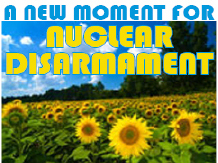

Pax Christi USA paxchristiusa.org | January 10, 2021
NOTE: The following press release is from the Archdiocese of Santa Fe announcing a press conference on Tuesday, January 11th, where the Archbishop will discuss his pastoral letter, “Living in the Light of Christ’s Peace: A Conversation Toward Nuclear Disarmament”. Pax Christi USA has eagerly anticipated the archbishop’s letter and we wanted to share the release with our membership who can watch the press conference at the link provided in the email. As we approach the 25th anniversary of our statement on the morality of nuclear deterrence, signed by 75 U.S. Catholic bishops in 1998, we welcome this extraordinary, prophetic letter and look forward to the conversation it generates within the U.S. Catholic Church, supporting Pope Francis’ statement at Hiroshima in 2019, “The use of atomic energy for purposes of war is immoral, just as the possessing of nuclear weapons is immoral.”
ALBUQUERQUE – Monday, January 10, 2022 – IMMEDIATE RELEASE – Most Reverend John C.Wester, Archbishop of Santa Fe, will hold a press conference for accredited media to discuss is pastoral letter, “Living in the Light of Christ’s Peace: A Conversation Toward Nuclear Disarmament” on Tuesday, January 11, 2022 at 9:00 a.m. MST via Zoom (https://us02web.zoom.us/j/83010373874?pwd=QTkvTkZpNDRlbDBiNWd3dU9IRnhWUT09). The press conference will be livestreamed at https://youtu.be/kHS2C1wIBeQ.
Archbishop Wester will release his pastoral letter on the urgent need for nuclear disarmament and avoiding a new nuclear arms race. Pope Francis has made clear statements about the immorality of possessing nuclear weapons, moving the Church from past conditional acceptance of “deterrence” to the moral imperative of abolition. The Archdiocese of Santa Fe has a special role to play in advocating for nuclear disarmament given the presence of two nuclear weapons laboratories and the United States of America’s largest repository of warheads located within its boundaries. He therefore believes the archdiocese has a unique role to play in encouraging a future world free of nuclear weapons.
Archbishop Wester states, “The Archdiocese of Santa Fe has a special responsibility not only to support the Treaty on the Prohibition of Nuclear Weapons, but also to encourage its active implementation.” He goes on to “…invite us to have a conversation together about what it means to follow the risen, nonviolent Jesus who calls us to be peacemakers, put down the sword, and love everyone, even the enemies of our nation.”
Archbishop Wester’s pastoral letter has the support of four Nobel Peace Prize laureates.
Key Lab Used for WWII Atomic Bomb Development Still 14 Years From Clean Up, Maybe More
Watchdog groups said it wasn’t until the state sued in February 2021 that the DOE proposed boosting the cleanup budget at the lab by about one-third. Before that, budgets were flat, with the groups arguing that DOE had no incentive to seek more funding.
“The conclusion I draw from it is the New Mexico Environment Department gets a lot more from the stick than it does from the carrot with respect to making the laboratory and DOE truly committed to comprehensive cleanup,” said Jay Coghlan, executive director of Nuclear Watch New Mexico.
BY CHARLOTTE TRATTNER , NEWSWEEK | January 7, 2022 newsweek.com
Concerns Persist About Pace of Cleanup at US Nuclear Lab
Watchdog groups said it wasn’t until the state sued in February 2021 that the DOE proposed boosting the cleanup budget at the lab by about one-third. Before that budgets were flat, with the groups arguing that DOE had no incentive to seek more funding.
“The conclusion I draw from it is the New Mexico Environment Department gets a lot more from the stick than it does from the carrot with respect to making the laboratory and DOE truly committed to comprehensive cleanup,” said Jay Coghlan, executive director of Nuclear Watch New Mexico.
BY SUSAN MONTOYA BRYAN, Associated Press | January 7, 2022 usnews.com

Officials at one of the nation’s top nuclear weapons laboratories are reiterating their promise to focus on cleaning up Cold War-era contamination left by decades of research and bomb-making.
DOE/NNSA To Start New LANL Site-Wide Environmental Impact Statement
During the question and answer period, Nuclear Watch New Mexico executive director Jay Coghlan said he was fascinated to hear that there was some funding allocated for a new SWEIS.
“The last one was in 2008 and it’s woefully outdated. To use NEPA terms, there’s a lot of new information and changed circumstances,” Coghlan said. “…And then there’s the question of the scope of the SWEIS, which would by definition imply it should consider the full range of issues from cleanup to pit production. What more can be said about a new SWEIS for Los Alamos (National Laboratory) at this time because as far as I know this is the first inkling whatsoever that there will be a new one?”
BY MAIRE O’NEILL, LOS ALAMOS REPORTER | January 6, 2022 losalamosreporter.com
Una Introducción a Hanford
El Sitio Nuclear de Hanford es el lugar más contaminado de los EE. UU. ¿Le interesa saber por qué? Pues hay suerte, porque tenemos una presentación que explica este asunto y más. Haga clic para ver el video acerca de la historia y la limpieza del Sitio Nuclear de Hanford. Es una buena manera de aprender más sobre un lugar contaminado pero poco conocido en el estado de Washington. ¡Anímate a verlo!
Yucca Mountain remains in debate over nuclear waste storage
“I’ve always fought misguided efforts to deposit nuclear waste in Nevada, and I’ll keep working with the Nevada delegation to pass my consent-based siting bill that would ensure these dangerous materials are never dumped on our state,” – Catherine Cortez Masto, D-Nev., a former state attorney general who also has fought federal efforts to build a repository at Yucca Mountain.”
Santa Fe New Mexican / Gary Martin Las Vegas Review-Journal | January 1, 2021
LAS VEGAS, Nev. — Mounting opposition to proposed nuclear waste storage sites in Texas and New Mexico has kept Yucca Mountain in Nevada in the national debate over what to do with the growing stockpile of radioactive material scattered around the country.
The Biden administration is opposed to Yucca Mountain and announced plans this month to send waste to places where state, local and tribal governments agree to accept it. That stance is shared by Nevada elected officials, tribal leaders and business and environmental groups.
But until the 1987 Nuclear Waste Policy Act is changed by Congress, the proposed radioactive waste repository 90 miles north of Las Vegas remains the designated permanent storage site for spent fuel rods from commercial nuclear plants.
“That’s what worries me. Until you get a policy in place, it will always be something you have to watch,” U.S. Rep. Dina Titus, D-Nev., told the Las Vegas Review-Journal.
An expert on atomic testing and American politics, Titus as a professor at the University of Nevada, Las Vegas wrote a 1986 book on Nevada’s nuclear past.
As an elected state and congressional lawmaker, she has opposed a permanent storage facility at Yucca Mountain.
Titus introduced legislation in past sessions of Congress that adopts recommendations by a 2012 Blue Ribbon Commission under the Obama administration to send the waste to states that want it.
Spent Fuel: The Risky Resurgence of Nuclear Power
[Letter from Washington]
“In the face of escalating alarm about climate change, the siren song of “clean and affordable and reliable” power finds an audience eager to overlook a business model that is dependent on state support and often greased with corruption; failed experiments now hailed as “innovative”; a pattern of artful disinformation; and a trail of poison from accidents and leaks (not to mention the 95,000 tons of radioactive waste currently stored at reactor sites with nowhere to go) that will affect generations yet unborn.”
BY: Andrew Cockburn © HARPER’S | From the January 2022 Issue
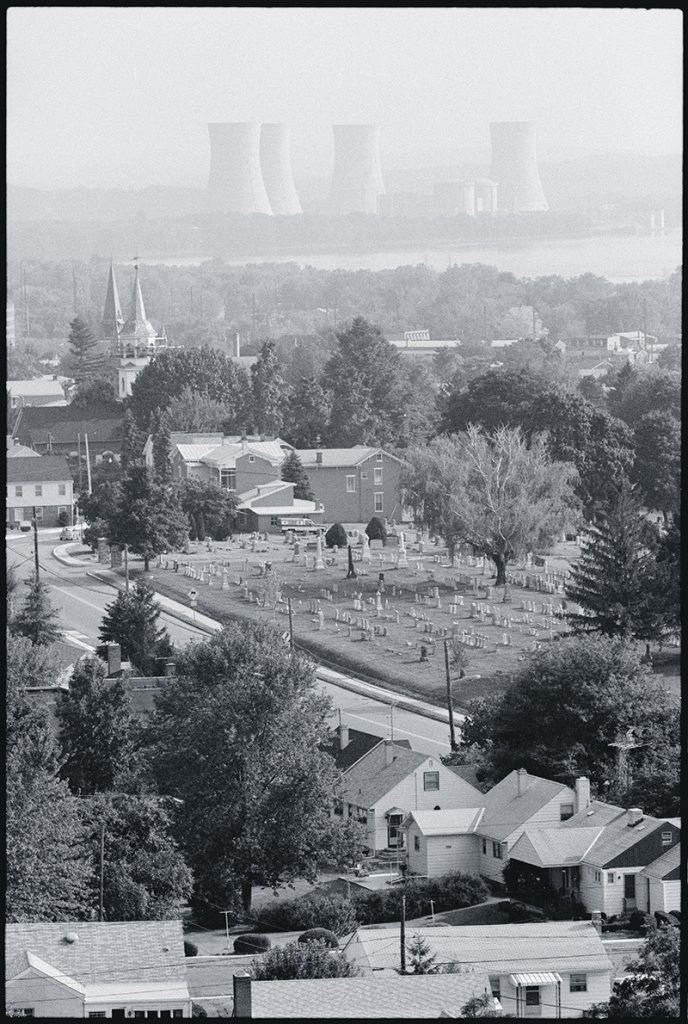 Last June, Bill Gates addressed a crowd of politicians and reporters in Cheyenne, Wyoming. “Fifteen years ago I assembled a group of experts . . . to solve the dual problems of global energy poverty and climate change,” the sweater-clad multibillionaire declared, speaking by video. “It became clear that an essential tool to solving both is advanced nuclear power.” But the technology, he continued, needed to become safer and less expensive. To this end, he had promised to invest $1 billion in TerraPower, a company he founded in 2008 to develop small modular reactors that can be churned out on an assembly line. He was now happy to announce the construction of a plant on the site of a defunct coal facility in Wyoming.
Last June, Bill Gates addressed a crowd of politicians and reporters in Cheyenne, Wyoming. “Fifteen years ago I assembled a group of experts . . . to solve the dual problems of global energy poverty and climate change,” the sweater-clad multibillionaire declared, speaking by video. “It became clear that an essential tool to solving both is advanced nuclear power.” But the technology, he continued, needed to become safer and less expensive. To this end, he had promised to invest $1 billion in TerraPower, a company he founded in 2008 to develop small modular reactors that can be churned out on an assembly line. He was now happy to announce the construction of a plant on the site of a defunct coal facility in Wyoming.
Gates and other backers extoll the promise of TerraPower’s Natrium reactors, which are cooled not by water, as commercial U.S. nuclear reactors are, but by liquid sodium. This material has a high boiling point, some 1,600 degrees Fahrenheit, which in theory enables the reactor to run at extreme temperatures without the extraordinary pressures that, in turn, require huge, expensive structures. “It’s smaller, cheaper, and inherently safe,” Jeff Navin, the director of external affairs at TerraPower, told me.
Will Construction be Delayed on the New Shaft at WIPP?
“The Environment Department “should be equally considerate towards the judicial review process as it was in the administrative permit modification process, to ensure the courts have sufficient time to review objectively the facts and arguments associated with the appeal.” – Steve Zappe, a member of the Environment Department who worked on WIPP for 17 years.”
Concerned Citizens for Nuclear Safety | December 23, 2021
Two appeals have been filed in the New Mexico Court of Appeals to challenge the decision by New Mexico Environment Department Secretary James Kenney to approve the new shaft at the Waste Isolation Pilot Plant (WIPP). Concerned Citizens for Nuclear Safety filed the second appeal on November 29th. On November 9th, Southwest Research and Information Center and Cynthia Weehler had filed the first appeal. Visit: env.nm.gov/opf/docketed-matters/, scroll down to HWB 21-02 – APPEAL: Waste Isolation Pilot Plant: Class 3 Permit Modification Request, “Excavation of a New Shaft and Associated Connecting Drifts.
SRIC and Weehler also asked Secretary Kenney for a stay, that is, a delay, of shaft construction until the Court of Appeals rules on their appeal. On the stay motion, Secretary Kenney can grant, or deny, or take no action. If he does not grant the stay, or if he takes no action by January 10th, a stay motion then could be filed with the Court of Appeals. Visit: env.nm.gov/opf/docketed-matters/ , scroll down to HWB 21-02 –Waste Isolation Pilot Plant: Class 3 Permit Modification Request, “Excavation of a New Shaft and Associated Connecting Drifts.
Unfortunately, key documents are missing, including the SRIC/Weehler Motion for Stay Pending Appeal, the Hearing Officer’s Report and the Secretary’s Final Order.
The stay motion was supported by three affidavits. Cynthia Weehler stated that she purchased her home near U.S. Highway 285 knowing that the WIPP Permit anticipated that shipments to WIPP would end in 2024. Now, the WIPP expansion plan that requires the new shaft “would result in thousands of additional shipments coming near my house for many decades.” She is very concerned that accidents could result in health effects and “such shipments will reduce my property values.”
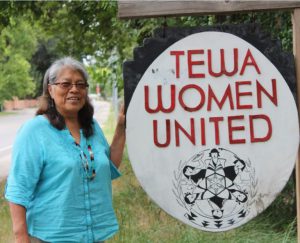 Kathleen Wan Povi Sanchez, an Elder from the Tewa Pueblo of San Ildefonso and among the founding mothers of Tewa Women United, stated in her affidavit that an increase in waste transportation near two schools located on New Mexico Highway 502 would endanger the health of Pueblo children in attendance. Further, “The WIPP expansion plan would result in thousands of new shipments using [] Highway 502 for decades transporting plutonium from the Pantex Plant near Amarillo, Texas to [Los Alamos National Laboratory], and from [Los Alamos] to the Savannah River Site, followed by shipments from that site to WIPP.”
Kathleen Wan Povi Sanchez, an Elder from the Tewa Pueblo of San Ildefonso and among the founding mothers of Tewa Women United, stated in her affidavit that an increase in waste transportation near two schools located on New Mexico Highway 502 would endanger the health of Pueblo children in attendance. Further, “The WIPP expansion plan would result in thousands of new shipments using [] Highway 502 for decades transporting plutonium from the Pantex Plant near Amarillo, Texas to [Los Alamos National Laboratory], and from [Los Alamos] to the Savannah River Site, followed by shipments from that site to WIPP.”
Some LANL plutonium stored in vulnerable containers
An anti-nuclear group said this type of plutonium isn’t explosive but would be hazardous to breathe.
It’s possible the lab made this type of plutonium a lesser priority while ramping up pit production, and now it plans to take big shipments, said Scott Kovac, research and operations director for the nonprofit Nuclear Watch New Mexico.
“That’s a huge amount to accept,” Kovac said. “Now they’re asking NNSA to say that’s OK.”
BY SCOTT WYLAND, THE SANTA FE NEW MEXICAN | December 23, 2021 santafenewmexican.com
Los Alamos National Laboratory wants to store high heat-emitting plutonium in uncertified containers that, if breached in a fire or an earthquake, could expose workers and the public to hazardous doses of radiation, according to a government watchdog’s report.
The lab’s primary contractor seeks a waiver to store large quantities of plutonium-238 in unapproved containers that, if breached, could expose the public to 83 to 378 rem, the Defense Nuclear Facilities Safety Board said in a December report, referring to the unit that measures radiation absorbed in living tissue.
US Still Doesn’t Know How and Where It Will Store Its Growing Pile of Nuclear Waste
The estimated cost of handling the degrading radioactive material is rising steadily — $512 billion at last count.
“DoE is now running up against a statutory limit for how much waste it can store in the space, so it recently changed its counting method to exclude space between storage drums as storage space. New Mexico regulators approved the change but the matter is being challenged in court.
“They knocked a third out of it with a slight of hand. That will allow them a lot more waste,” complains Scott Kovac, operations & research director of Nuclear Watch New Mexico (NWNM), a local anti-nuclear group.”
BY CHARLES PEKOW, EARTH ISLAND JOURNAL | December 23, 2021 earthisland.org
A nuclear watchdog group wants a state commission to nullify its decision on a permit for Los Alamos National Laboratory’s radioactive liquid waste treatment facility, arguing the panel’s former chairwoman backed a ruling favorable to the lab while she sought a job with the federal agency that oversees it.
U.S. Urges Japan Not to Join Nuclear Ban Treaty Meeting
“Germany’s move [planning to to attend the meeting as an observer] has put Japan — which has stated it aspires to a world free of nuclear weapons as the only country to have suffered the devastation of atomic bombings — in the spotlight. Both countries are key U.S. allies that rely on American nuclear forces for protection.”
© KYODO NEWS | December 20, 2021
The United States has urged Japan not to attend as an observer the first meeting of signatories to a U.N. treaty banning nuclear weapons, according to U.S. government sources, reflecting Washington’s opposition to the pact.
The Japanese government has suggested it will come into line with the United States and take a cautious approach to the issue, the sources said. Prime Minister Fumio Kishida told a parliamentary committee on Thursday that Tokyo has no “concrete plans” to attend the meeting as an observer.
The sources said the U.S. administration of President Joe Biden made the request to Japan through diplomatic channels after German political parties announced Nov. 24 that the deal for the new ruling coalition included taking part as an observer at the meeting scheduled for March in Vienna.
Maybe because of the request, Kishida also suggested last week that participation in the meeting would be premature “before building a relationship of trust with President Biden.”
Archbishop calls for nuclear disarming
At least 125 people were present for the service, many bearing roses in honor of the Lady of Guadalupe. Among them was Karen Weber, who said it’s “highly symbolic” for Wester to speak out on the “abolishment of nuclear weapons.”
SANTA FE NEW MEXICAN By Robert Nott rnott@sfnewmexican.com
Looking up at the sky as a young teen one day in Daly City, Calif., Archbishop John C. Wester had one thought as he saw military planes overheard.
Were they ours, or were they Russian planes?
The year was 1962, perhaps the first time nuclear war between the two superpowers seemed likely to erupt as the Cuban Missile Crisis played out and students were taught to prepare for an atomic attack by diving under their desks at schools.
“I don’t think going under our desks was very helpful,” Wester said Sunday in Santa Fe, moments before issuing a call for the world to rid itself its nuclear weapons.
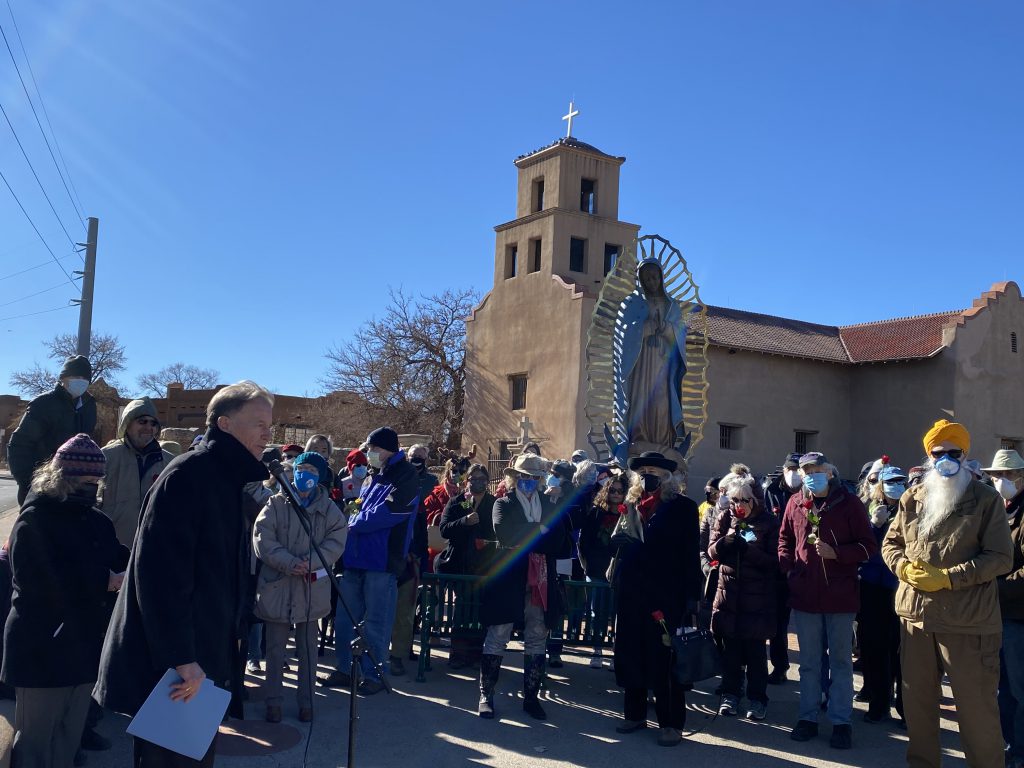
Now, some 60 years later, he said he wants to do more to end the threat of an atomic war. Wester spoke and prayed during a 30-minute prayer service and ceremony at the Shrine of Our Lady of Guadalupe before he unveiled a sign bearing an image of Pope Francis and a quote uttered by the pope in Hiroshima in 2020: “The possession of nuclear arms is immoral.”
Wester said “our archdiocese needs to be facilitating, encouraging an ongoing conversation” about nuclear disarmament.
Why Los Alamos lab is working on the tricky task of creating new plutonium cores
“While the labs work on relearning high-stakes industrial techniques for terrifying weapons, it is estimated that most of the existing warheads will remain fully functional for at least 100 years after first manufacture. Given an arsenal of hundreds of deployed warheads, the stakes of failure to modernize are that, in the event of the worst war humanity has ever known, some warheads might fail to detonate, letting millions live.”
BY KELSEY D. ATHERTON | POPULAR SCIENCE popsci.com December 18, 2021
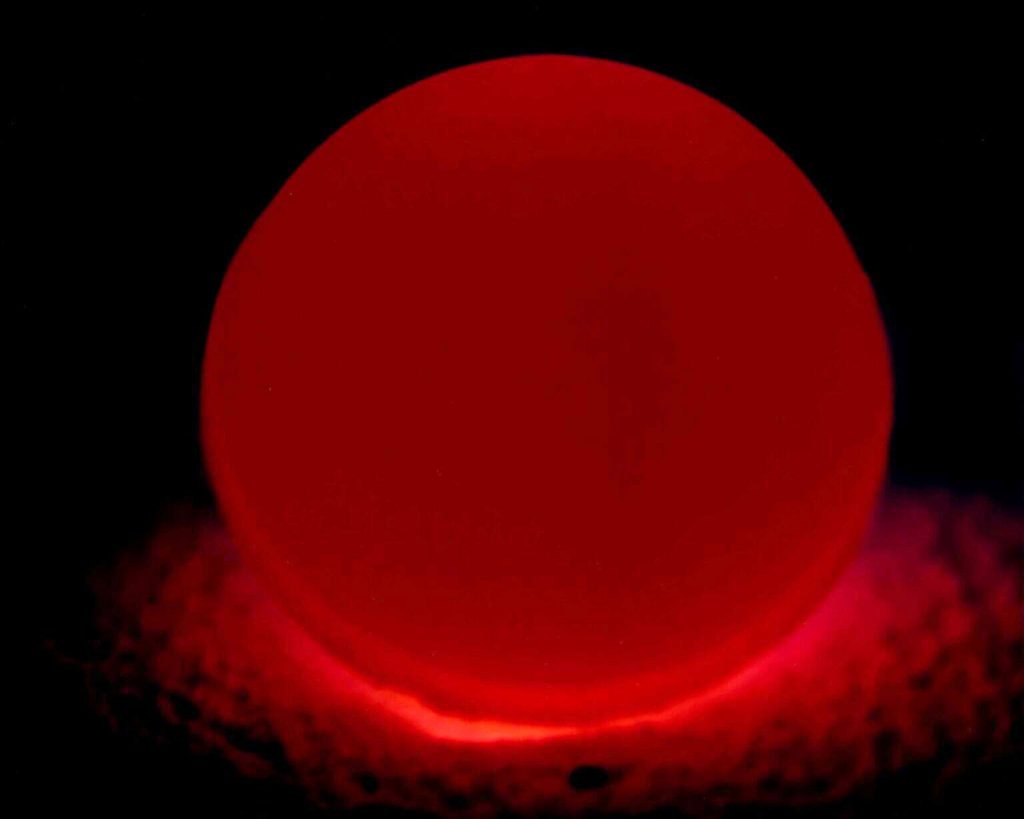
Plutonium pits, the potent hearts of modern nuclear weapons, degrade over time. As these cores decay, so too does the certainty that they will work as designed when detonated. Los Alamos National Laboratory, the organization that grew out of the Manhattan Project to design and equip the nuclear arsenal of the Cold War, is advancing towards its goal of manufacturing 30 new plutonium pits to go inside nuclear bomb cores by 2026.
The project is both a specific manufacturing challenge, and an opening for the United States to newly consider how many warheads it needs on hand to achieve its stated strategic objectives.
Inside a nuclear warhead, a plutonium pit is crucial to setting off the sequence of reactions that make a thermonuclear explosion. Inside the pit is a gas, like deuterium/tritium, and around the pit is chemical explosive. When the chemical explosive detonates, it compacts the plutonium around the gas until the core is dense enough to trigger a fission reaction. What makes a warhead thermonuclear, as opposed to just atomic, is that this is combined in the same warhead with a uranium core, which creates a fusion explosion.
Hundreds of Scientists Ask Biden to Cut the U.S. Nuclear Arsenal
The letter argued that “by making clear that the United States will never start a nuclear war, it reduces the likelihood that a conflict or crisis will escalate to nuclear war.” And it would demonstrate, they argued, that the United States was committed to the Nuclear Non-Proliferation Treaty, which obliges the nuclear-armed states to move toward reducing their arsenals.
Written By: Jesus Jiménez © 2021 The New York Times Company The New York Times | December 17, 2021
Nearly 700 scientists and engineers, including 21 Nobel laureates, asked President Joe Biden on Thursday to use his forthcoming declaration of a new national strategy for managing nuclear weapons as a chance to cut the US arsenal by a third and to declare, for the first time, that the United States would never be the first to use nuclear weapons in a conflict.
The letter to Biden also urged him to change, for the first time since President Harry S. Truman ordered the dropping of the atomic bomb over Hiroshima, the American practice that gives the commander in chief sole authority to order the use of nuclear weapons. The issue gained prominence during the Trump administration, and the authors of the letter urged Biden to make the change as “an important safeguard against a possible future president who is unstable or who orders a reckless attack.”
Today I had the honor of delivering a letter on nuclear weapons issues to @POTUS signed by 697 scientists & engineers, including 21 Nobel laureates & 69 members of the National Academies. It recommends four steps to reduce the likelihood of nuclear war: https://t.co/o9ktgLlOxd pic.twitter.com/stjn9BJCCu
— Stephen Young (@StephenUCS) December 16, 2021
Politico-Opinion | Congress Approved $778 Billion for the Pentagon. That Means We Can Afford Build Back Better.
Some senators say Biden’s social and climate bill costs too much, but comparing it to the military spending plan they just passed suggests otherwise.
This week, the families of 61 million children received their final payments under the expanded Child Tax Credit. This credit has kept 10 million children above the poverty line, but it is expiring as the Senate delays a vote to renew it through the Build Back Better Act.
Instead, on the same day these last payments went out, the Senate voted to approve a $778 billion military spending budget — four times as much as the annual cost of the entire Build Back Better plan. Yet we’ve heard endlessly about how it’s Build Back Better that needs to be gutted so we can skimp and save.
Germany’s Baerbock pushes for nuclear disarmament
German Foreign Minister Annalena Baerbock called for a “new momentum” to nuclear disarmament as she met with her Swedish counterpart with an eye toward a review of a non-proliferation treaty.
By Ali Harb Aljazeera aljazeera.com
Germany and Sweden have paired up to find ways to get the world’s nuclear powers to move toward committing to disarmament. The foreign ministers met in Stockholm to plot the way forward ahead of next month’s review of the Non-Proliferation Treaty (NPT).
Baerbock has been in talks with her Swedish counterpart Ann Linde and met with the Stockholm Initiative, a group of 16 countries seeking to get rid of nuclear weapons.
“Our joint goal is clear: a world free of atomic weapons,” Baerbock said during a press conference with Linde.
“Our message to the review conference will be clear: Nuclear weapons countries have to push ahead with nuclear disarmament,” read a statement from the initiative, calling for an irreversible, transparent end to nuclear weapons subject to oversight.
Protesters Denounce French Push to Label Nuclear as Sustainable Energy
“By taking the lead of the toxic alliance between fossil gas and nuclear (energy) at a European level, Emmanuel Macron clearly sides with the polluters’ camp. Nuclear is not a green energy: it produces radioactive waste that piles up across the country”
By Reuters | December 14, 2021
PARIS (Reuters) – Demonstrators unfurled a banner declaring “Gas & nuclear are not green” outside France’s foreign ministry on Tuesday in protest at a government drive to label nuclear energy and fossil gas as sectors for climate-friendly investment.
One of the about 20 protesters, wearing a mask of President Emmanuel Macron, chained himself to a gas bottle and a nuclear barrel outside the ministry’s headquarters in Paris. Another held a banner that read “Macron shame on you.”
The European Union is preparing a rulebook on climate friendly investments, which from next year will define which activities can be labelled as green in sectors including transport and buildings.
The EU’s aim is to restrict the green investment label to climate-friendly activities, steer cash into low-carbon projects and stop companies or investors making unsubstantiated environmental claims.
NEW Y-12 CONTRACTORS HAVE HISTORY OF NUCLEAR SAFETY FAILURES, MILLIONS IN PENALTIES AND FINES FOR VIOLATIONS
“The public deserves an explanation,” said Ralph Hutchison, coordinator of the Oak Ridge Environmental Peace Alliance. “Given the persistent criticality safety problems at Y-12, it is astonishing that the National Nuclear Security Administration has turned the management over to Fluor and Amentum, two companies that have racked up millions of dollars in fines in the last two decades for nuclear safety violations.”
immediate release: December 13, 2021
more information: Ralph Hutchison 865 776 5050 / orep@earthlink.net
According to the web site goodjobsfirst.com, which tracks violations in government contracting, AECOM, parent company of Amentum, has been penalized more than $167 million for 114 violations since 2000. Fifty-one of those violations were safety related, for a total of $4.5 million in penalties and fines; of that total, $3,866,250 was assessed for nuclear safety violations.
“From the beginning of October to mid-November, the Defense Nuclear Facilities Safety Board documented nine nuclear safety incidents at Y-12, an average of more than one a week,” Hutchison said. “Unfortunately, this is not an anomaly—Y-12 is consistently plagued by nuclear safety issues, many of them from legacy activities or the ongoing degradation of the buildings used to manufacture nuclear weapons components.
“And the equally sad truth is that contractors at Y-12 have a history of failing to aggressively address issues as they arise. An outside assessment delivered in October noted that Consolidated Nuclear Services declared some cases ‘closed’ even though the actual problem had not been corrected and the cases were, in fact, still open.
Pilgrim Nuclear Plant Will Not Release Contaminated Water In 2022
By CBSBoston.com Staff December 7, 2021
PLYMOUTH (CBS) – The company managing the shutdown of the Pilgrim Nuclear Plant now says it will not release contaminated water into Cape Cod Bay in 2022 as planned.
Holtec International planned to discharge the water sometime early next year.
But in a statement on Monday, they promised to store the water on site through 2022 and search for other options to get rid of it.
“We appreciate and understand the public’s questions and concerns and remain committed to an open, transparent process on the decommissioning of Pilgrim Station focused on the health and safety of the public, the environment, and on-site personnel,” Holtec said in a statement.
Pilgrim went offline in 2019.
House Passes $768 Billion Defense Policy Bill
“I support having by far the strongest military in the world and the good-paying defense jobs in my district that protect our troops,” said Representative Andy Levin, Democrat of Michigan. “But I cannot support ever-increasing military spending in the face of so much human need across our country.”
By: Catie Edmondson The New York Times | December 7, 2021
WASHINGTON — The House on Tuesday overwhelmingly passed a $768 billion defense policy bill after lawmakers abruptly dropped proposals that would have required women to register for the draft, repealed the 2002 authorization of the Iraq war and imposed sanctions for a Russian gas pipeline, in a late-year drive to salvage a bipartisan priority.
The legislation, unveiled hours before the vote, put the Democratic-led Congress on track to increase the Pentagon’s budget by roughly $24 billion above what President Biden had requested, angering antiwar progressives who had hoped that their party’s control of the White House and both houses of Congress would lead to cuts to military programs after decades of growth.
Instead, the measure provides significant increases for initiatives intended to counter China and bolster Ukraine, as well as the procurement of new aircraft and ships, underscoring the bipartisan consensus on Capitol Hill for continuing to spend huge amounts of federal money on defense initiatives, even as Republicans lash Democrats for spending freely on social programs.
Energy Department to spend $15.5M to upgrade route from Los Alamos lab to waste site [WIPP]
“Essentially blessing what DOE was going to have to do anyway in order to expand nuclear weapons activities and waste disposal,” said Jay Coghlan, executive director of Nuclear Watch New Mexico. “And once again demonstrated the subservience of our state government to the nuclear weapons industry here in New Mexico.”
By Scott Wyland swyland@sfnewmexican.com Santa Fe New Mexican December 6, 2021 santafenewmexican.com
The N.M. 4 and East Jemez Road intersection in the far northwestern corner of Santa Fe County will be improved as part of a $15.5 million upgrade of routes on which Los Alamos National Laboratory transports nuclear waste to an underground disposal site in Southern New Mexico.
The U.S. Energy Department will spend $3.5 million to improve the intersection, which lies just outside Los Alamos County, and another $12 million to upgrade routes it owns and uses mostly to ship transuranic waste — contaminated gloves, clothing, equipment, soil and other items — to the Waste Isolation Pilot Plant near Carlsbad.
REPORT: BIT BY BIT, THE NOOSE IS TIGHTENING AROUND THE NUCLEAR WEAPONS INDUSTRY
Human beings are not necessarily destined to annihilate ourselves.
“…the actual danger of nuclear conflict is now greater than at any point in history.”
By Jon Schwarz THE INTERCEPT December 5, 2021 theintercept.com
FOR YEARS, the Dutch organization PAX has been issuing reports detailing the Armageddon that’s hiding in plain sight. The business of nuclear weapons — and it is in fact a business — does not for the most part take place in secret underground lairs. It is all around us, conducted by corporations and banks that might otherwise make cellphones or cornflakes or autonomous vacuum cleaners.
PAX’s newest paper, “Perilous Profiteering,” should be front-page news around the world. Why it is not is an interesting question.
Nuclear war is still a threat to humanity. It’s true that it’s generally vanished from popular culture and our imagination since the end of the Cold War 30 years ago. What almost no one knows, however, is that many serious observers believe that the actual danger of nuclear conflict is now greater than at any point in history.
The Bulletin of the Atomic Scientists invented its Doomsday Clock in 1947 to express how close the world was to self-destruction. It was initially set at seven minutes to midnight. Since then it has varied, being set both closer to and further away from midnight. But today, in 2021, it is the closest it’s ever been: 100 seconds to midnight. The publication’s reasoning can be read here.
Or take it from such anti-peaceniks as former Secretaries of State Henry Kissinger and the late George Shultz. Together they warned for years of the tremendous danger of nuclear war and called for “a world free of nuclear weapons.”
‘Not in my backyard’: The thorny issue of storing German nuclear waste
“Germany is to shut down its last nuclear reactors next year. However, the country still has no place to store the 27,000 cubic metres of highly radioactive material it has already produced, with the amount set to grow as power stations are decommissioned and dismantled. German authorities have set a deadline of 2031 to find a permanent storage location – but for now, the waste is being stored in temporary locations, much to the anger of local residents.”
© FRANCE 24 By: Anne MAILLIET | Nick SPICER france24.com December 4, 2021 / Originally published on:
ORIGINAL ARTICLE
One dead, three injured after gas leak at Spanish nuclear plant
A fault in the plant’s fire prevention system caused the gas leak, which was not linked to any radioactive material, the regional fire service posted on Twitter.
MADRID, Nov 24 (Reuters) – One person has died and three have been taken to hospital after a carbon dioxide leak at the Asco nuclear power plant in the Spanish region of Catalonia, local emergency services said on Wednesday.
Shortly afterwards, the fire service said it was preparing to leave the site after checking over the extractor fans with the plant’s staff and ensuring the systems were working properly.
The three people taken to hospital suffered light injuries from carbon dioxide inhalation, emergency services said.
Iran nuclear talks resume with upbeat comments despite skepticism
Russia’s envoy to the talks, Mikhail Ulyanov, said on Twitter they “started quite successfully.” Asked he if was optimistic, Iran’s top negotiator, Ali Bagheri Kani, told reporters: “Yes, I am.”
Vienna, Austria EU, Iranian and Russian diplomats sounded upbeat as Iran and world powers held their first talks in five months on Monday to try to save their 2015 nuclear deal, despite Tehran taking a tough stance in public that Western powers said would not work.
“I feel extremely positive about what I have seen today,” Enrique Mora, the EU official chairing the talks, said after the meeting — the seventh round of talks aimed at reviving a deal under which Iran limited its disputed uranium enrichment program in return for relief from US, EU and UN economic sanctions.
“They have accepted that the work done over the first six rounds is a good basis to build our work ahead,” he said. “We will be of course incorporating the new political sensibilities of the new Iranian administration.”
Nuclear power is never safe or economical
“I hope Sen. Durbin changes his mind about promoting nuclear energy. The real carbon-free sources of electricity are wind and solar.”
Letters to the Editor Chicago Sun Times
I cannot disagree more with the assertion by Sen. Dick Durbin in a recent Sun-Times op-ed that nuclear power is a necessary and viable way to combat climate change.
Electricity production by nuclear power is not, and can never be made, safe and economical.
When nuclear power plants were first touted in the 1950s as a new and safe method for producing electricity, it was said the electricity would be “too cheap to meter.” This is pure nonsense! If it was so safe, why weren’t any power plants built and put on line until passage of the Price-Anderson Act? The law has been amended a number of times and greatly limits the liability of operators of nuclear power plants.
Anything paid out beyond the limits set in Price-Anderson would take years of lawsuits.
Sen. Durbin wrote “It is past time for Congress to step up and develop a comprehensive, consent-based plan to store nuclear waste.” That’s an understatement. Nuclear waste is stored within a half-mile of Lake Michigan at the now-closed Zion nuclear power plant. Why is it close to the source of our drinking water? Because there is nowhere to ship it! Plans to ship such waste to a depository in Yucca Mountain in the southwest fell through when some improperly stored barrels burst into flames, releasing large amounts of high-level radioactive material.
Who does the senator think will agree to a “consent-based plan” when there is no known method of safely storing these dangerous materials for thousands of years, the time it takes for radioactive decay to make it safe for the environment?
Sen. Durbin argued that “we must ensure the nuclear fleet remains safe and economical,” but nuclear power has never been economical. As far as I know, the last time a permit was approved for a new nuclear plant was during the Obama administration. That plant in Georgia is only about half complete, although it was to be finished by now and the cost is already double the initial estimate.
The current “fleet,” as Sen. Durbin called them, of nuclear power plants were designed and engineered to last about 30 to 40 years. Most of our country’s plants are near that age. Their internal systems are constantly bombarded by radioactive particles, making the metal in the systems more brittle and prone to failure every year. Subsidizing them is a waste of taxpayer money and a dangerous gamble with our lives.
I hope Sen. Durbin changes his mind. The real carbon-free sources of electricity are renewables: wind and solar.
George Milkowski, West Ridge
Letters to the Editor: Nuclear energy may not emit carbon, but it isn’t ‘clean’

To the editor: Steven Chu and Ernest Moniz are both professors who served as U.S. Energy secretary. They have more science credentials than most mortals. I am none of those things.
Yet, I was concerned when I read in their piece advocating for the continued use of the Diablo Canyon nuclear plant past the planned 2025 decommissioning that they referred to the electricity it produces as “clean.”
I recognize that they did so in order to differentiate nuclear from energy sources that emit carbon dioxide. However, the lack of carbon emissions notwithstanding, can nuclear energy truly be called clean?
There is the not-so-small matter of spent nuclear fuel. Where does it go? Where will it go? It’s currently in a cooling pool on-site. Owner Pacific Gas and Electric has requested permission to develop a dry cask storage system on-site; it did not estimate how long the spent fuel would be stored there.
Spent fuel is radioactive for a very long time. Whichever way you store it, if anything compromises the containment, the danger is released.
Carbon emissions or none, it is misleading to refer to nuclear energy as clean, especially when it comes to its impact on the environment.
Elise Power, Garden Grove
..
To the editor: I was energized by the piece on the Diablo Canyon nuclear plant. It reminded me of the sad situation at our local San Onofre Nuclear Generating Station.Continue reading
Pilgrim nuclear plant may release 1M gallons of radioactive water into bay. What we know
“Diane Turco, of Harwich, the director of Cape Downwinders, a citizen group that was at the forefront of the effort to close Pilgrim, called any option that included sending radioactive water into the bay “outrageous” and “criminal.” Turco said she has no confidence in the decommissioning process.
“The process has been to allow radioactivity into the environment,” she said. “The answer should be no you can’t do that.””
PLYMOUTH — One of the options being considered by the company that is decommissioning the closed Pilgrim Nuclear Power Station is to release around one million gallons of potentially radioactive water into Cape Cod Bay.
The option had been discussed briefly with state regulatory officials as one possible way to get rid of water from the spent fuel pool, the reactor vessel and other components of the facility, Holtec International spokesman Patrick O’Brien said in an interview Wednesday. It was highlighted in a report by state Department of Environmental Protection Deputy Regional Director Seth Pickering at Monday’s meeting of the Nuclear Decommissioning Citizens Advisory Panel in Plymouth.
“We had broached that with the state, but we’ve made no decision on that,” O’Brien said.
As of mid-December, Holtec will complete the process of moving all the spent fuel rods into casks that are being stored on a concrete pad on the Pilgrim plant site in Plymouth. After that, O’Brien told the panel, the removal and disposal of other components in those areas of the facility will take place and be completed sometime in February.
What to expect as Iran nuclear talks resume next week
“New round of talks unlikely to produce breakthrough but will shed light on posture of new Iranian government, analysts say.”
By Ali Harb Aljazeera aljazeera.com
“We’re going to find out how different these [Iranian] hardliners are from previous hardliners; we’re going to find out if they’re going to be a little softer,” said Negar Mortazavi, an Iranian-American journalist and analyst.
“And we’re also going to find out if the Americans have really realised that they missed an opportunity, and that they should change their position to some extent.”
Proponents of the deal, including Mortazavi, have criticised US President Joe Biden for not moving with urgency to restore the agreement in the first months of his administration, when a more moderate Iranian government headed by former President Hassan Rouhani was in charge.
Six rounds of talks in Vienna between April and June failed to forge a path back into the agreement.
“That golden window of opportunity was short, and the Biden team completely missed it,” Mortazavi told Al Jazeera.
A spin on Kirtland Air Force Base’s (which shares runways with the ABQ International Airport) true mission from the ABQ Journal: “Air Force lab injects $2B into NM’s economy”
The Kirtland Air Force Lab is dedicated to militarizing space, not improving the lives of New Mexico citizens.
As stated by the Arms Control Association in an April 2021 article titled Apes on a Treadmill in Space:
“The United States should recognize that a pattern of continued militarization of space is insufficient to provide the stability on which its economy and its armed forces depend, so the tools of diplomacy and international law should be marshalled too.”
By Kevin Robinson-Avila / Journal Staff Writer – Albuquerque Journal abqjournal.com
Air Force Research Laboratory spending on space and “directed energy” technology like lasers and microwaves boosted the local economy by nearly $2 billion over the past three years, according to a new economic impact report.
Nuclear News Archives – 2021
Consequences of Uranium Mining in the Southwest
Addressing the consequences of uranium mining in the Southwest, Anna Benally said, “When uranium mining came to Navajo Land, we were never told it was unsafe to be around it. We were never told to keep our children from playing near it or keep our livestock from coming around it. We were just happy to have jobs.”
By: Kristin Scheer | Peace Works Kansas City
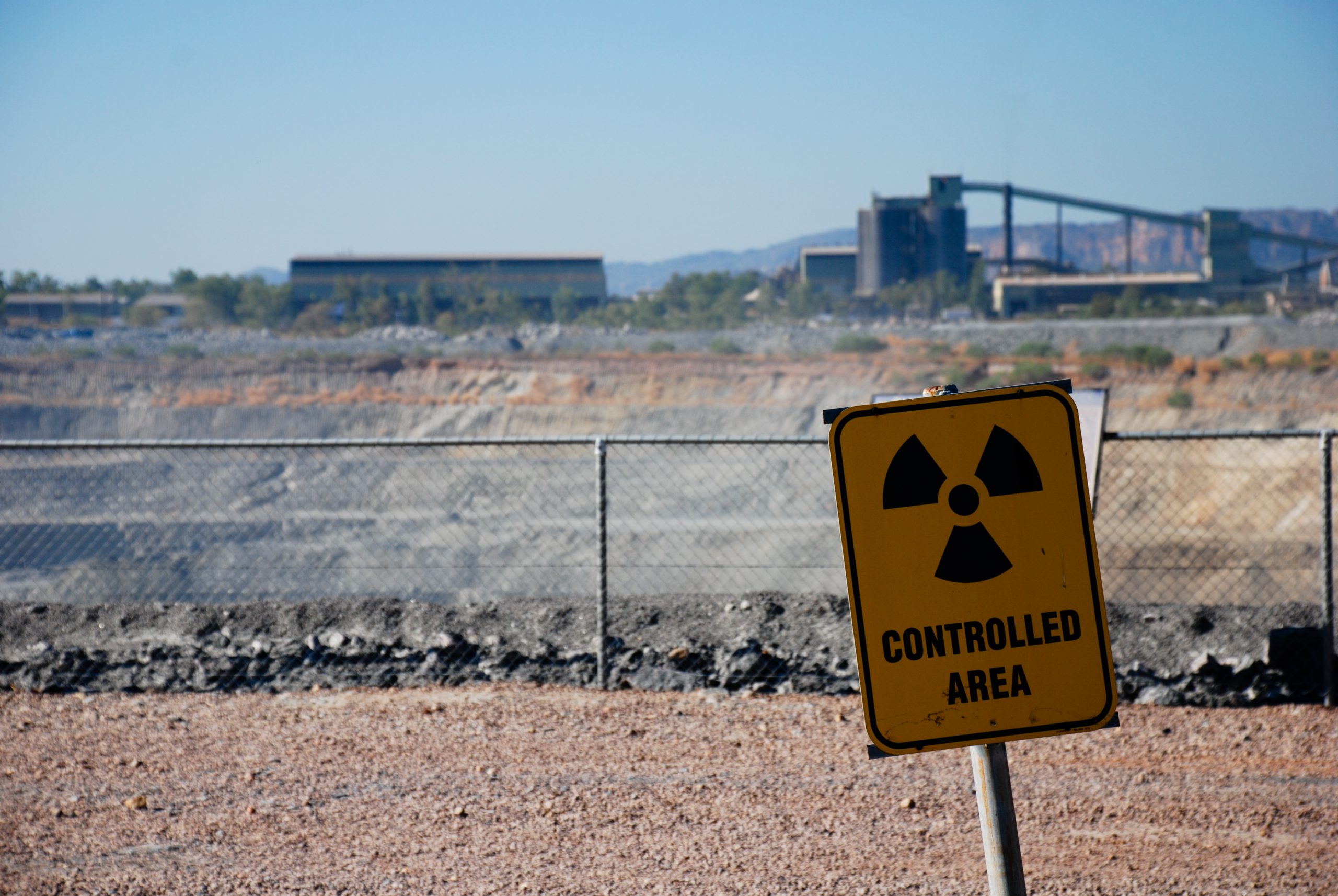
Uranium mining is still causing problems in the US. This was the topic of Radio Active Magazine on KKFI, 90.1 FM Community Radio, on Feb. 9. Activists from the Multicultural Alliance for a Safe Environment (MASE), based in Albuquerque, NM, joined PeaceWorks-KC leaders for the program.
The MASE activists on the program were Anna Benally, a former uranium mine employee turned activist who is working to heal the land and protect the health of people and livestock, and Susan Gordon, coordinator of MASE. PeaceWorks Board members Ann Suellentrop and myself introduced the MASE leaders and interviewed them. The podcast is online at https://kkfi.org/program-episodes/fighting-uranium-contamination-in-the-southwest/.
Atomic weapons plan risky for SC, lawyers say. Noted legal service joins fray
Savannah River Site Watch, Nuclear Watch New Mexico and Tri-Valley CARES recently retained the Environmental Law Project. They say pit factories are expensive, unnecessary, needlessly threaten the environment, and could leave unused plutonium stranded permanently in places like SRS.
BY: SAMMY FRETWELL | thestate.com FEBRUARY 12, 2021
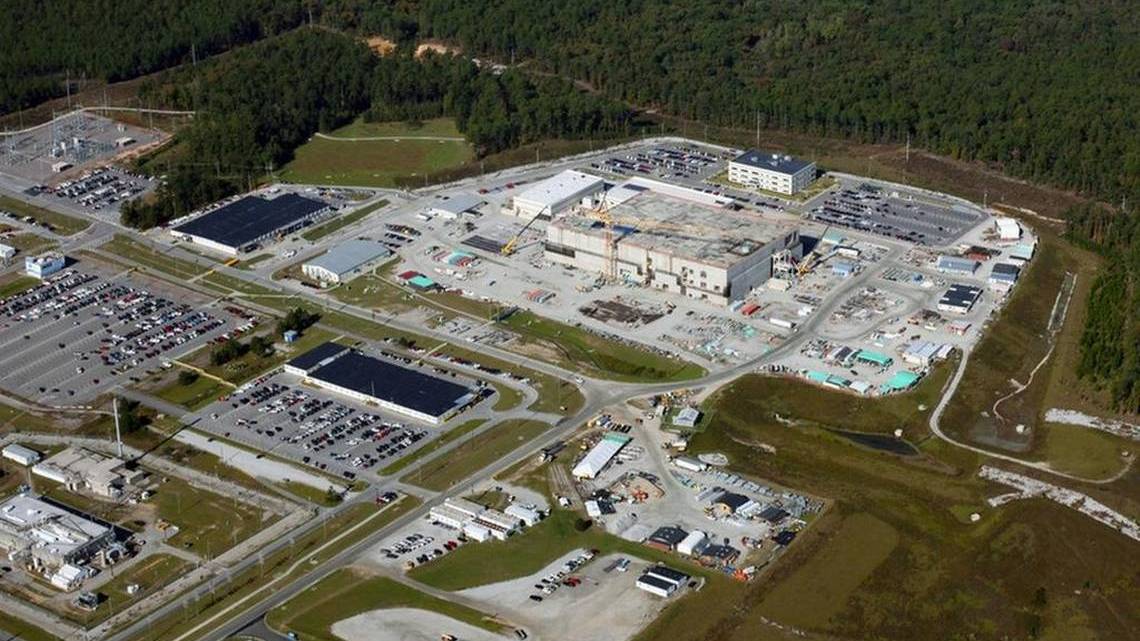
A South Carolina legal service has joined the fight against an atomic weapons components factory at the Savannah River Site, raising the possibility that environmental groups will sue the federal government to stop the effort.
The South Carolina Environmental Law Project, a non-profit service with an extensive record of arguing cases in court, outlined concerns about the factory in a letter this week to the U.S. Department of Energy. The letter called the proposed factory risky and in need of further study.
At issue is a proposal to build a nuclear weapons pit plant that would use plutonium, a deadly long-lived radioactive material, at the Savannah River Site.
The pit factory would produce potentially thousands of jobs, but is drawing opposition from environmental groups in South Carolina, New Mexico and California.
In Santa Fe, protesting LANL’s arrival
Luis Sánchez Saturno / The New Mexican Feb 12, 2021

Los Alamos lab, birthplace of the atomic bomb, STILL under threat from wildfires despite repeated major incidents
“The threat and risks of wildfire to the lab and northern New Mexico will continue to increase because of climate warming, drought and expanded nuclear weapons production,” said Jay Coghlan, director of the group Nuclear Watch New Mexico.
A recent audit by the US Energy Department’s inspector general found that threat-reduction measures such as the maintenance of the lab’s network of fire roads, strategic clearing of vegetation in the surrounding area as well as the production of a coherent preparedness and mitigation plan had not been carried out
Photographic evidence included in the report indicated a tree density of 400 to 500 per acre, 10 times the recommended safe level of 40 to 50 trees per acre.
Audit Raises Concerns About Wildfire Risks at US Nuclear Lab
“The threat and risks of wildfire to the lab and northern New Mexico will continue to increase because of climate warming, drought and expanded nuclear weapons production,” said Jay Coghlan, director of the group Nuclear Watch New Mexico.
BY: SUSAN MONTOYA BRYAN | wokv.com February 10, 2021
ALBUQUERQUE, N.M. — (AP) — One of the nation’s premier nuclear laboratories isn’t taking the necessary precautions to guard against wildfires, according to an audit by the U.S. Energy Department’s inspector general.
The report comes as wildfire risks intensify across the drought-stricken U.S. West. Climatologists and environmentalists have been warning about worsening conditions across the region, particularly in New Mexico, which is home to Los Alamos National Laboratory and where summer rains failed to materialize last year and winter precipitation has been spotty at best.
The birthplace of the atomic bomb, Los Alamos has experienced hundreds of millions of dollars in losses and damage from major wildfires over the last two decades. That includes a blaze in 2000 that forced the lab to close for about two weeks, ruined scientific projects, destroyed a portion of the town and threatened tens of thousands of barrels of radioactive waste stored on lab property.
Watchdog groups say the federal government needs to take note of the latest findings and conduct a comprehensive review before the lab ramps up production of key plutonium parts used in the nation’s nuclear arsenal.
Los Alamos Nuclear Weapons Lab Opens Office in the City of the Santa Fe (“Holy Faith”) of Peace and Environmental Protection
FEBRUARY 10, 2021
Santa Fe, NM – A Lab press release has announced that “[c]onnections between Los Alamos National Laboratory and the City of Santa Fe will be strengthened with the Laboratory’s opening of a new downtown office” after signing a 10-year lease on a 28,000-square-foot building. The Lab’s press release ignores LANL’s $2.9 billion nuclear weapons production budget (up 33% in one year), its proposed 46% cut to cleanup to $120 million, serious groundwater contamination and recent reports how it has neglected wildfire protection. Two catastrophic wildfires in the last 21 years on or near the Lab blanketed a large portion of northern New Mexico with possibly contaminated smoke.
The City of Santa Fe’s official name is the “La Villa Real de la Santa Fe de San Francisco de Asís” (“The Royal Town of the Holy Faith of Saint Francis of Assisi”), in honor of the beloved saint who preached peace and environmental protection and from whom the present Pope draws his name. Pope Francis has repeatedly called for the abolition of nuclear weapons and while in Japan paid homage to the victims of the Hiroshima and Nagasaki bombings. Those atomic bombs were designed and produced at the Los Alamos Lab.
LANL not serious about wildland fires
BY: T.S. Last / Journal North Copyright © 2021 Albuquerque Journal Feb, 9, 2021
SANTA FE – A recently released report by the Department of Energy’s Office of Inspector General suggests that managers at Los Alamos National Laboratory did not take wildland fire prevention seriously enough, despite two catastrophic wildland fires in the past 20 years that threatened the lab and the town, costing taxpayers millions of dollars.
“Our review found that activities designed to reduce the impact from wildland fire had not been fully implemented at Los Alamos National Laboratory (LANL) in accordance with site plans,” says the opening sentence of a 14-page memo from the Inspector General’s office dated Feb. 1.
What’s worse, the report says, some plans were never drafted, and some policies put into place after the Cerro Grande Fire in 2000 and the Las Conchas Fire in 2011 were not being followed.
It adds that lab managers haven’t developed a “comprehensive risk-based approach to wildland fire management,” as required by the Federal Wildland Fire Management Policy. The report also describes a “lack of formality.”
“Specifically, the contractor’s Wildland Fire Plan lacked requirements for documenting wildland fire management activities, and responsibilities for implementation were not well defined,” the report says.
The contractor referred to is Triad National Security LLC, which in November 2019 took over management of the lab, which is tasked with developing and manufacturing parts for nuclear weapons. Previously, Los Alamos National Security LLC had held the management contract since 2006.
It appears evident that some of the problems identified in the report predate Triad’s involvement.
The report says that there are about 2,000 structures, including 13 nuclear facilities, with an estimated value of $14.2 billion on approximately 23,000 acres of lab property.
It notes that the 2000 Cerro Grande Fire, which burned 43,000 acres, including about 7,500 acres of LANL property, resulting in $331 million in damage to the lab alone. That does not include an estimated $15 million in lost productivity per week during a 15-day shutdown and recovery period.
The Cerro Grande Fire was a “crown fire” that burned through the tree canopy and spread quickly, and the report has an entire section on mitigation of crown fires.
Despite recognition of the risk, mitigation measures to reduce the risk of crown fires had not been performed.
LANL Falls Behind on Wildfire Protection While Expanding Nuclear Weapons Production Watchdog Calls for New Site-Wide Environmental Impact Statement
FEBRUARY 9, 2021
Santa Fe, NM – The Department of Energy’s Inspector General is reporting that the Los Alamos National Laboratory (LANL) is falling seriously behind in wildfire protection. This is despite the fact that the 2000 Cerro Grande Fire forced the mandatory evacuation of both LANL and the Los Alamos townsite, burned 3,500 acres of Lab property and came within a half-mile of Area G, its largest waste dump. At the time Area G stored above ground some 40,000 barrels of plutonium-contaminated radioactive wastes. It could have been catastrophic had they burst and sent respirable airborne plutonium across northern New Mexico (inhaled plutonium is a very serious carcinogen).
In 2011 the Los Conchas Fire raced 13 miles in 24 hours to the Lab’s western boundary, where it was stopped along State Highway 4. Both it and the Cerro Grande Fire sent huge plumes of harmful smoke across northern New Mexico, possibly carrying Lab contaminants as well (operation of radioactive air emissions monitoring equipment was suspended during the Cerro Grande Fire).
Report: LANL not managing forests to prevent wildfires
Jay Coghlan, executive director of the nonprofit Nuclear Watch New Mexico, said the lab puts most of its attention on producing nuclear weapons and neglects forest maintenance, despite the disastrous Cerro Grande Fire that destroyed dozens of its structures.
“Nuclear weapons above all,” Coghlan said.”
By Scott Wyland swyland@sfnewmexican.com / sfnewmexican.com Feb 9, 2021
Los Alamos National Laboratory has failed to properly manage its forested lands, increasing the threat of wildfires at lab sites and surrounding areas, according to a federal watchdog.
The lab has not thinned trees or cleared forest debris from many wooded areas, nor has it maintained service roads to ensure safe passage for firefighting crews, boosting the potential for “devastating wildfires” like the Cerro Grande Fire in 2000, the U.S. Energy Department’s inspector general said in a strongly worded report released this week.
The report criticized the lab’s main contractor, Triad National Security LLC, for not following fire management plans and not documenting required yearly activities to prepare for and prevent possible wildfires at the site.
“Our review found that activities designed to reduce the impact from wildland fire had not been fully implemented at the Los Alamos National Laboratory in accordance with site plans,” the report said.
The report comes as the federal Drought Monitor shows Los Alamos County and much of the state as being in exceptional drought — the most severe condition — which raises the risks of wildfires.
Jay Coghlan from Nukewatch New Mexico and Kevin Kamps from Beyond Nuclear discuss the recent developments in Nuclear Weapons proliferation and the new international ban on nuclear weapons.
Living on the Edge also cover reasons why nuclear power may not be the low carbon panacea for transitioning our electric grid that is so widely promoted these days.
Plan to send diluted plutonium to Waste Isolation Pilot Plant moves forward
A plan to dispose of surplus plutonium at the Waste Isolation Pilot Plant through a dilution process that would reduce the waste to radiation levels allowable at the facility moved forward at the end of 2020 and the process was expected to continue through 2022.
By: Adrian Hedden | currentargus.com February 8, 2021
The National Nuclear Security Administration (NNSA) – an arm of the U.S. Department of Energy – announced in December its intention to draft an environmental impact statement on the project and a public comment scoping was extended until Feb. 18.
Comments on the project can be made to the NNSA via email to SPDP-EIS@NNSA.DOE.GOV with the subject line SPDP EIS Scoping Comment.
The EIS will study the scope of the project and its potential impacts on the environment and DOE operations at numerous sites involved in the storage, down-blending and final disposal of the plutonium.
Radiation Illnesses and COVID-19 in the Navajo Nation
“In Indigenous lands where nuclear weapons testing took place during the Cold War and the legacy of uranium mining persists, Indigenous people are suffering from a double whammy of long-term illnesses from radiation exposure and the COVID-19 pandemic.”
By: Jayita Sarkar, Caitlin Meyer | thebulletin.org February 3, 2021
The COVID-19 pandemic is wiping out Indigenous elders and with them the cultural identity of Indigenous communities in the United States. But on lands that sprawl across a vast area of the American West, the Navajo (or Diné) are dealing not just with the pandemic, but also with another, related public health crisis. The US Centers for Disease Control and Prevention says COVID-19 is killing Native Americans at nearly three times the rate of whites, and on the Navajo Nation itself, about 30,000 people have tested positive for the coronavirus and roughly 1,000 have died. But among the Diné, the coronavirus is also spreading through a population that decades of unsafe uranium mining and contaminated groundwater has left sick and vulnerable.
The Future of War in Biden’s America
Danny Sjursen offers a Bidenesque tour of U.S. militarism.
By: Danny Sjursen Tom’s Dispatch | consortiumnews.com

Hard as it is to believe in this time of record pandemic deaths, insurrection, and an unprecedented encore impeachment, Joe Biden is now officially at the helm of the U.S. war machine. He is, in other words, the fourth president to oversee America’s unending and unsuccessful post-9/11 military campaigns.
In terms of active U.S. combat, that’s only happened once before, in the Philippines, America’s second-longest (if often forgotten) overseas combat campaign.
Yet that conflict was limited to a single Pacific archipelago. Biden inherits a global war — and burgeoning new Cold War — spanning four continents and a military mired in active operations in dozens of countries, combat in some 14 of them, and bombing in at least seven.
Nukes aren’t just for bombers and subs. Here are some unusual ways militaries have also planned to drop the bomb
Throughout the Cold War, the prospect of bombers dropping nuclear bombs and submarines launching nuclear-tipped missiles terrified people around the world. Those were the major delivery methods, but both militaries developed an array of smaller nuclear weapons for tactical use, and planners in those militaries gave very real consideration to using them.
By: Benjamin Brimelow | businessinsider.com Jan 28, 2021
The Special Atomic Demolition Munition (SADM) was small enough to fit into a large backpack but still had a yield of a kiloton. It was intended to be planted by small, specially trained teams that would set a time fuse before attempting to escape.
You can actually view these asinine “backpack nukes” at the National Museum of Nuclear Science & History in Albuquerque. These “small” weapons, many of them more powerful than the nuclear bomb dropped on Hiroshima, would have obliterated any battlefield and irradiated much of the surrounding area.
The Little Boy (15 kilotons) and Fat Man (21 kilotons) atomic bombs dropped on Hiroshima and Nagasaki, respectively, remain the only nuclear weapons used in combat.
Those bombs destroyed the cities, killed or wounded hundreds of thousands of people, and left thousands more with long-term health problems. The carnage and destruction are the first things that come to mind when discussing nuclear weapons.
But nukes weren’t just for destroying cities. Early in the Cold War, the tactical use of nuclear weapons on the battlefield was not only researched extensively but actually considered.
Unknown Impact: County asks Los Alamos National Labs to assess environmental impact before expanding nuclear production
Santa Fe County wants Los Alamos National Laboratories to take stock of its impact on the environment and surrounding communities before pushing ahead with plans to expand.
By Leah Cantor | sfreporter.com Jan 27, 2021
On Tuesday, the Board of County Commissioners unanimously passed a resolution asking the National Nuclear Safety Administration to complete a new site-wide environmental impact statement for LANL in compliance with the National Environmental Policy Act before expanding plutonium pit production.
“The public health and safety is so important,” said Commissioner Anna Hansen, noting that the NEPA process is one of the only avenues for the public to weigh in on what goes on at the labs. “We have a longstanding tradition of promoting democracy and environmental protection in impending nuclear weapons by requesting that local governments be kept fully informed about projects to facilitate large scale production of additional plutonium warheads,” she said.
Yet right now, the labs’ full impact on Northern New Mexico is unknown. It’s been more than a decade since the last time the NNSA produced an EIS for the laboratory, and a lot has changed since then, including regional understanding of wildfire risks and potential water contamination from the labs.
Remembering the Night Two Atomic Bombs Fell—on North Carolina
Sixty years ago, at the height of the Cold War, a B-52 bomber disintegrated over a small Southern town. An eyewitness recalls what happened next.
By: Bill Newcott | nationalgeographic.com PUBLISHED JANUARY 22, 2021
BILLY REEVES REMEMBERS that night in January 1961 as unseasonably warm, even for North Carolina. But it got a lot hotter just before midnight, when the walls of his room began glowing red with a strange light streaming through his window.
“I was just getting ready for bed,” Reeves says, “and all of a sudden I’m thinking, ‘What in the world…?'”
The 17-year-old ran out to the porch of his family’s farm house just in time to see a flaming B-52 bomber—one wing missing, fiery debris rocketing off in all directions—plunge from the sky and plow into a field barely a quarter-mile away.
“Everything around here was on fire,” says Reeves, now 78, standing with me in the middle of that same field, our backs to the modest house where he grew up. “The grass was burning. Big Daddy’s Road over there was melting. My mother was praying. She thought it was the End of Times.”
Like any self-respecting teenager, Reeves began running straight toward the wreckage—until it exploded.
The Doomsday Datavisualizations



In setting the Doomsday Clock, the Bulletin’s Science and Security Board consults widely with colleagues across a range of disciplines and considers qualitative and quantitative information from a wide array of sources. These three visualizations display some of the kinds of public data that are available in the Bulletin’s three coverage areas: nuclear weapons, climate change, and disruptive technology.
The Doomsday Clock is a design that warns the public about existential threats, a metaphor that reminds the world of the perils that must be addressed if humanity is to continue survive. These three data visualizations can be seen as an artistic extension of the original design.
DESIGNED BY PENTAGRAM
Giorgia Lupi, Sarah Kay Miller, Phil Cox,
Ting Fang Cheng, Talia Cotton
In November 2011, the U.S. Senate designated January 27th as a National Day of Remembrance for the Nevada Test Site Downwinders. The Senate recognized the harm caused to Americans from radioactive fallout from the aboveground atomic tests in Nevada, which began on January 27, 1951 and ended on July 17, 1962. Nuclear testing by the U.S. government started in New Mexico with Trinity in July 1945, and the Crossroads Series of three tests followed in the Pacific in 1946. The United States took part in nuclear testing as part of the escalating Cold War arms race, and nuclear weapons proliferated. With each nuclear test, radioactive fallout spread globally.
FOR MORE INFORMATION VIEW LINKS BELOW
Downwinders And The Radioactive West Premieres January 27 at 7PM on PBS Utah
Why a National Day of Remembrance for Downwinders is Not Enough
Congress Introduces Legislation to Expand Compensation for Radiation Exposure
Why a National Day of Remembrance for Downwinders is Not Enough
“A day of recognition is important – these communities deserve to be recognized for the unimaginable sacrifice they unknowingly made to their country. But it is not enough. The best and most important way to honor these victims of the US nuclear weapons program is by compensating them and providing health care for the illnesses and deaths they have suffered.”
BY: LILLY ADAMS GUEST COMMENTARY, UCS | JANUARY 26, 2021, 10:56 AM EST
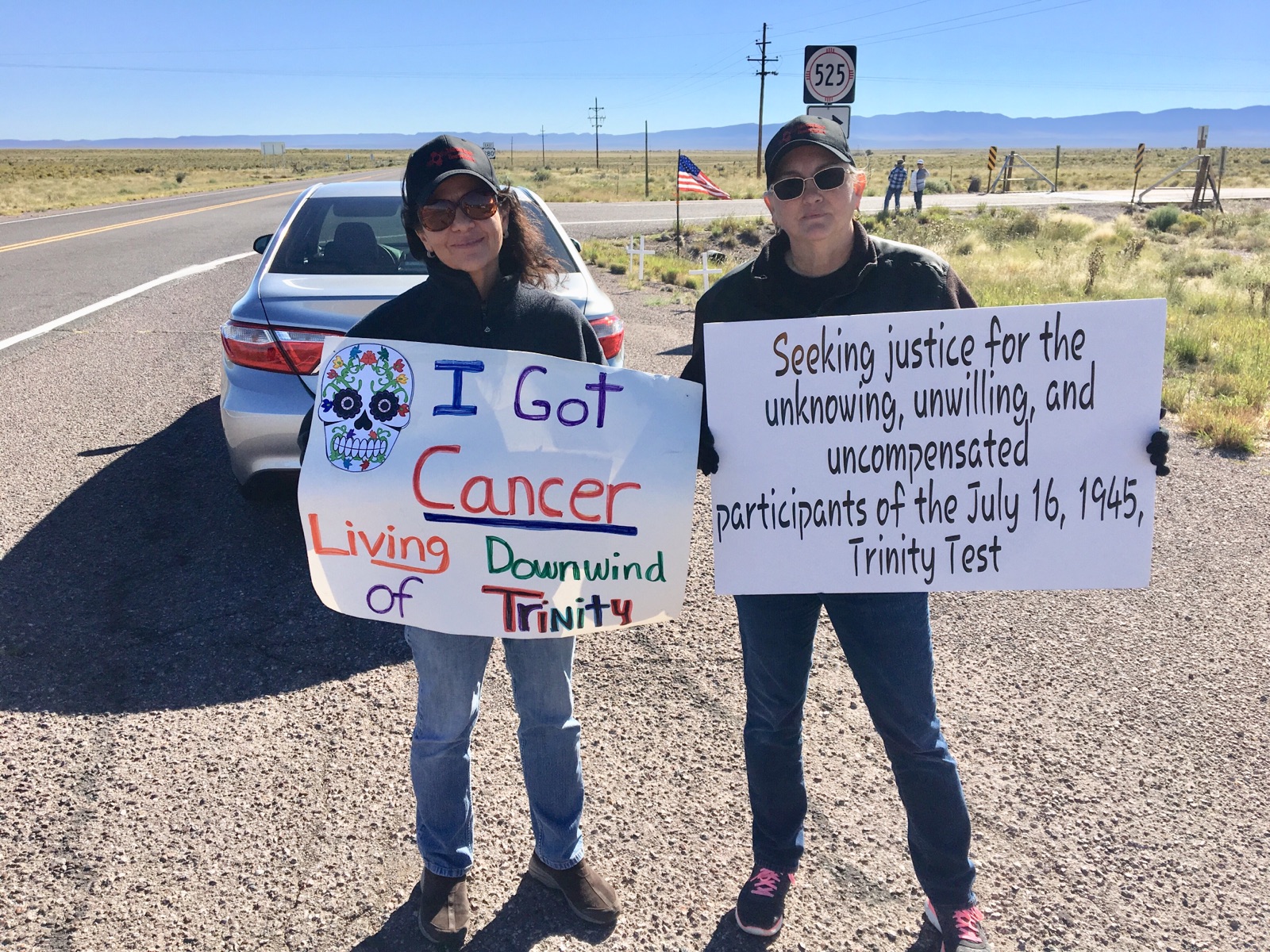
There’s no question that the US government killed and sickened many of its own people through explosive nuclear testing: estimates of the death toll in the United States from nuclear testing vary widely, from tens of thousands to hundreds of thousands. But the harm doesn’t stop there. Other nuclear weapons activities, like uranium mining, production, and waste storage and cleanup, have also caused unknown deaths and illnesses. As is so often the case, the people who have borne the heaviest burden of these activities are often people of color, Indigenous communities, women and children, and those living in poor, rural communities. These people are the largely ignored, often forgotten casualties of the Cold War and the US nuclear weapons program.
The Most Dangerous Situation Humanity Has Ever Faced
“The Bulletin of the Atomic Scientists announced Wednesday that the hands of the iconic Doomsday Clock remain at 100 seconds to midnight — as close to the end of humanity as the clock has ever been. The temptation, of course, in a dark hour is to cling to even the faintest signs of light and hope. And the truth is that there are some encouraging signs now emerging. However, we continue to teeter at the brink and moving the Clock away from midnight would provide false hope at a time when urgent action is what is needed.”.
Opinion by Edmund G. Brown Jr. and Robert Rosner / Updated 11:17 AM ET, Wed January 27, 2021
For a year now, the world has been ravaged by the horrors of Covid-19. It has caused millions to lose their jobs, overwhelmed health care systems and dramatically changed how we live. The disease has killed more than 2 million people and infected 100 million around the globe.
Even so, we face fundamentally greater threats to humanity than this pandemic. We refer to the catastrophic dangers which nuclear weapons and climate change pose — dangers that preceded this pandemic and will persist long after it ends. Unfortunately, and unlike the priority given to developing a vaccine against the virus, little progress was made to reduce the danger of the world’s nuclear weapons arsenal or to effectively slow the carbon emissions warming our planet in 2020. The sudden appearance and confused response to the virus makes all too clear how ill-prepared the world can be when it has to deal with an unprecedented threat of global magnitude.
UN Building Lit Up to Celebrate The Nuclear Ban Treaty Entry Into Force January 22





Here are five examples of the type of activities that will be Illegal under international law on 22 January 2021
One of the main problems with talking about nuclear weapons is that it often becomes abstract and hypothetical. Most people barely know which countries have nuclear weapons and do not know to what extent other actors are involved in maintaining and upholding nuclear weapons.
When the Treaty on the Prohibition of Nuclear Weapons (TPNW) enters into force on 22 January 2021, that will need to change.
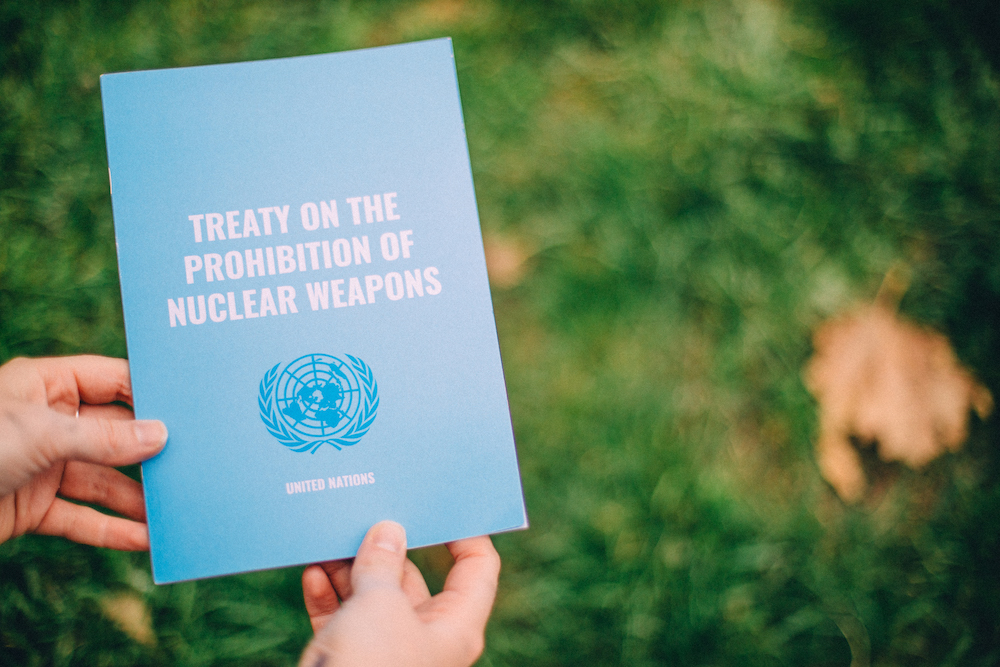
Here are five examples of the kind of activities that will be prohibited under the TPNW and who is currently doing this today. While the treaty will only be legally binding in the countries that have ratified the treaty, it will still create a powerful norm and should lead to increased protests and outrage in countries that haven’t joined the treaty that are behaving in contradiction of this new instrument of international law.
What the treaty prohibits
Article 1 of the treaty prohibits states parties from developing, testing, producing, manufacturing, transferring, possessing, stockpiling, using or threatening to use nuclear weapons, or allowing nuclear weapons to be stationed on their territory. It also prohibits them from assisting, encouraging or inducing anyone to engage in any of these activities.
Treaty Seeks End to Nuclear Madness
It is the beginning of a new movement that will see the elimination of the existential nuclear threat.
Ralph Hutchison, John LaForge | progressive.org
On January 22, the Treaty on the Prohibition of Nuclear Weapons will enter into force. The treaty bans the development, production, possession, deployment, testing, use and just about anything else you can imagine related to nuclear weapons.
Fifty years later, nine nuclear-armed militaries possess more than 13,000 nuclear weapons, arsenals that mock their claimed commitment to disarm “at an early date.”
Approved at the United Nations by 122 countries in 2017, and subsequently signed by 86 and ratified by 51 nations, the nuclear weapons ban will join the venerated status of international prohibitions already established against lesser weapons of mass destruction. These earlier agreements include the Geneva Gas Protocol, the Chemical Weapons Convention, the Biological Weapons Convention, the Ottawa Treaty or Mine Ban Convention and the Convention on Cluster Munitions.
Atop the Powerful Budget Committee at Last, Bernie Sanders Wants to Go Big
To the chagrin of Republicans, the democratic socialist senator will play a central role in shepherding Joseph R. Biden Jr.’s agenda through Congress.
“Sanders, the next chairman of the Senate Budget Committee, plans to take a hard look at fraud at the defense budget in his new perch, he tells POLITICO
“You understand you’re talking to the guy who led the effort to lower defense spending by 10 percent,” the Vermont Independent and self-described Democratic Socialist boasted.
You’re talking about the military budget, which is now higher than the next 10 nations combined,” he continued. “You’re talking about the Pentagon budget, which is the only major government agency which has not been able to undertake an independent audit. And I don’t think anyone has any doubt that there’s massive waste and cost overruns in the military budget.”
“I think if you check the record,” he added, “you’ll find that every major defense contractor has been found guilty of collusion and fraud.”
By Alan Rappeport and Jim Tankersley | nytimes.com
Shortly before the 2016 election, Paul D. Ryan of Wisconsin, the Republican nominee for vice president and the speaker of the House, told a group of college Republicans why he thought Democrats winning control of the Senate would be a policy nightmare.
“Do you know who becomes chair of the Senate Budget Committee?” Mr. Ryan asked. “A guy named Bernie Sanders. You ever heard of him?”
Republicans have long feared the prospect of Mr. Sanders, a self-described democratic socialist from Vermont, taking the helm of the powerful committee given his embrace of bigger government and more federal spending with borrowed money. With Democrats reclaiming the Senate, that fear is about to become a reality. Mr. Sanders, the most progressive member of the chamber, will have a central role in shaping and steering the Democrats’ tax and spending plans through a Congress that they control with the slimmest of margins.
Concern grows over massive US cyberattack – New Mexico’s national labs, Los Alamos and Sandia, cited as possible targets among many
Jay Coghlan, executive director of Nuclear Watch New Mexico, said the breach escalates the threat of a nuclear catastrophe.
“On top of the dangers that we faced during the Cold War this now raises new concerns…Could our nuclear weapons be hacked for malicious reasons? Could hackers take advantage of LANL’s checkered safety and security record and cause a life threatening event in our own backyard? The sooner we all have a nuclear weapons-free world the safer we will be.”
Copyright © 2020 Albuquerque Journal / BY: T.S. LAST / JOURNAL NORTH
 SANTA FE — While the Department of Energy says that a cyberoffensive was limited to business networks, concerns remain about the depth of the breach and what threat it could still pose to national security and New Mexico’s two national laboratories.
SANTA FE — While the Department of Energy says that a cyberoffensive was limited to business networks, concerns remain about the depth of the breach and what threat it could still pose to national security and New Mexico’s two national laboratories.
Some news reports say that the hacks are believed to have been instigated by a Russian intelligence agency. The reports specifically mention Los Alamos and Sandia national laboratories, where atomic research is conducted, as being vulnerable.
In addition, Los Alamos National Laboratory is tasked with producing plutonium pits, the triggering device in nuclear warheads.
Earlier this week the Cybersecurity and Infrastructure Security Agency (CISA) issued a warning, calling the hack “a grave risk” to federal, state, local and tribal governments, as well as critical infrastructure entities and private sector businesses. It said the suspected breach dates back to at least March.
In a joint statement this week, CISA, the FBI and the director of national intelligence said they were working together to investigate a “significant ongoing cybersecurity campaign.”\
‘Highly skeptical’: House Armed Services chairman concerned about SRS pit production
Biden administration expected to take ‘critical look’ at next-generation warhead, estimated to be twice as explosive as Trident
By: Colin Demarest cdemarest@aikenstandard.com / postandcourier.com
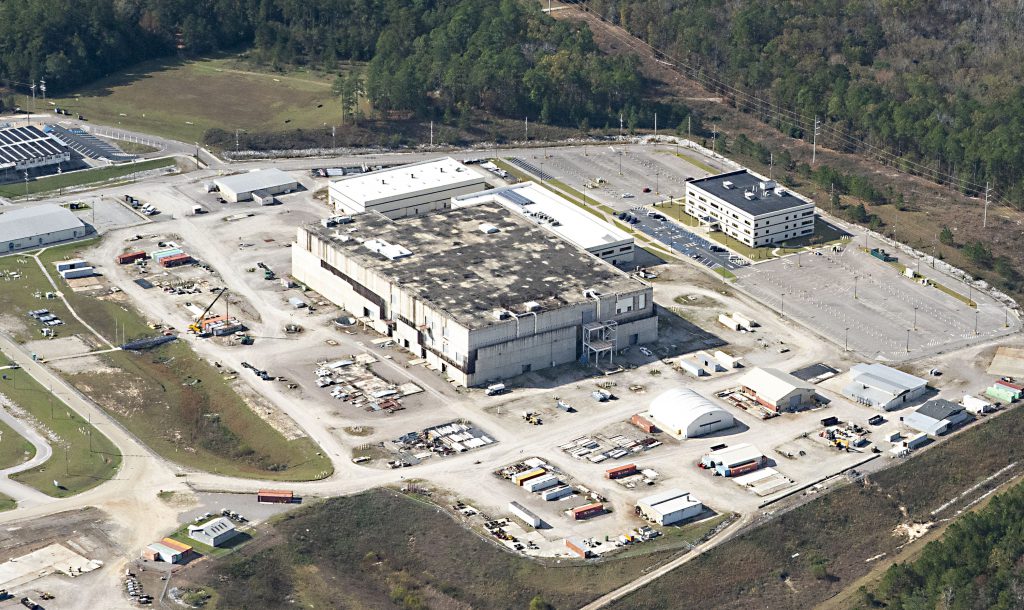
Photo courtesy of High Flyer
Likening the conversion of the failed Mixed Oxide Fuel Fabrication Facility to flipping a bowling alley into a restaurant, U.S. Rep. Adam Smith said he was “highly skeptical that they’re going to be able to turn that building into an effective pit production facility. Highly skeptical.”
US Nuclear Warhead Standoff ‘Has Significant Implications for UK’
Biden administration expected to take ‘critical look’ at next-generation warhead, estimated to be twice as explosive as Trident
By: Dan Sabbagh / theguardian.com
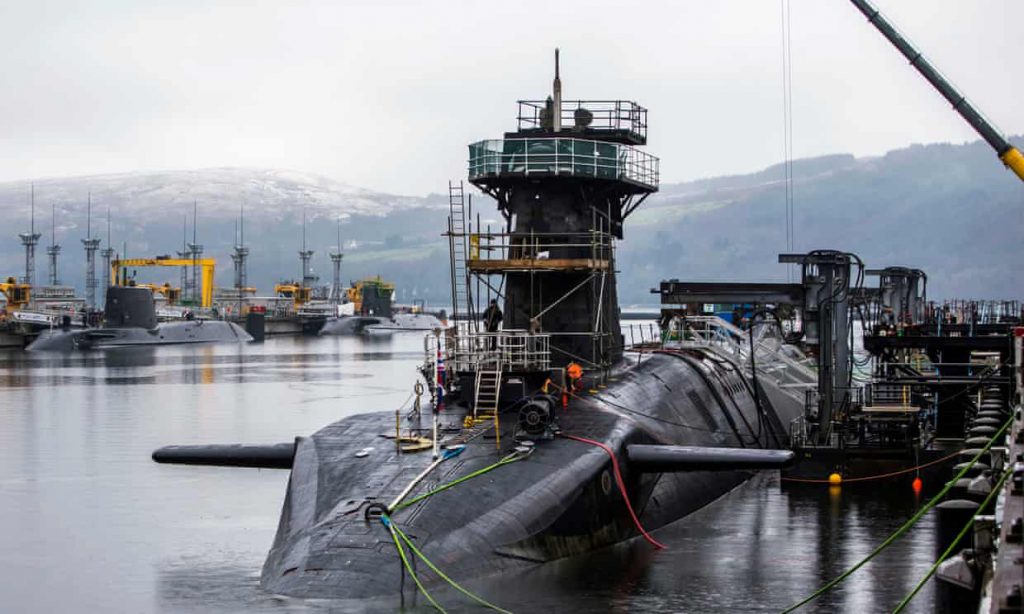
Britain’s most senior defence official admitted there would be “very significant implications” for the future of the Trident nuclear deterrent if Democrats in the US Congress refused to fund a next-generation warhead.
Sir Stephen Lovegrove, permanent secretary at the Ministry of Defence, said that the UK was monitoring the US standoff closely but could not say what impact a refusal to start work on the new W93 warhead would have – or how many billions it would cost.
THE SOFTENING RHETORIC BY NUCLEAR-ARMED STATES AND NATO ALLIES ON THE TREATY ON THE PROHIBITION OF NUCLEAR WEAPONS
BY: TOM SAUER & CLAIRE NARDON / warontherocks.com

Probably the most iconic moment during the negotiations on the Treaty on the Prohibition of Nuclear Weapons (or “nuclear ban treaty”) was the gathering of a dozen allied ambassadors standing around U.S. Ambassador Nikki Haley in the corridors of the U.N. building in New York, protesting against the ongoing negotiations. While nuclear-armed states and NATO allies remain opposed to the treaty, the tone is softening, and at least two NATO allies are breaking the consensus.

